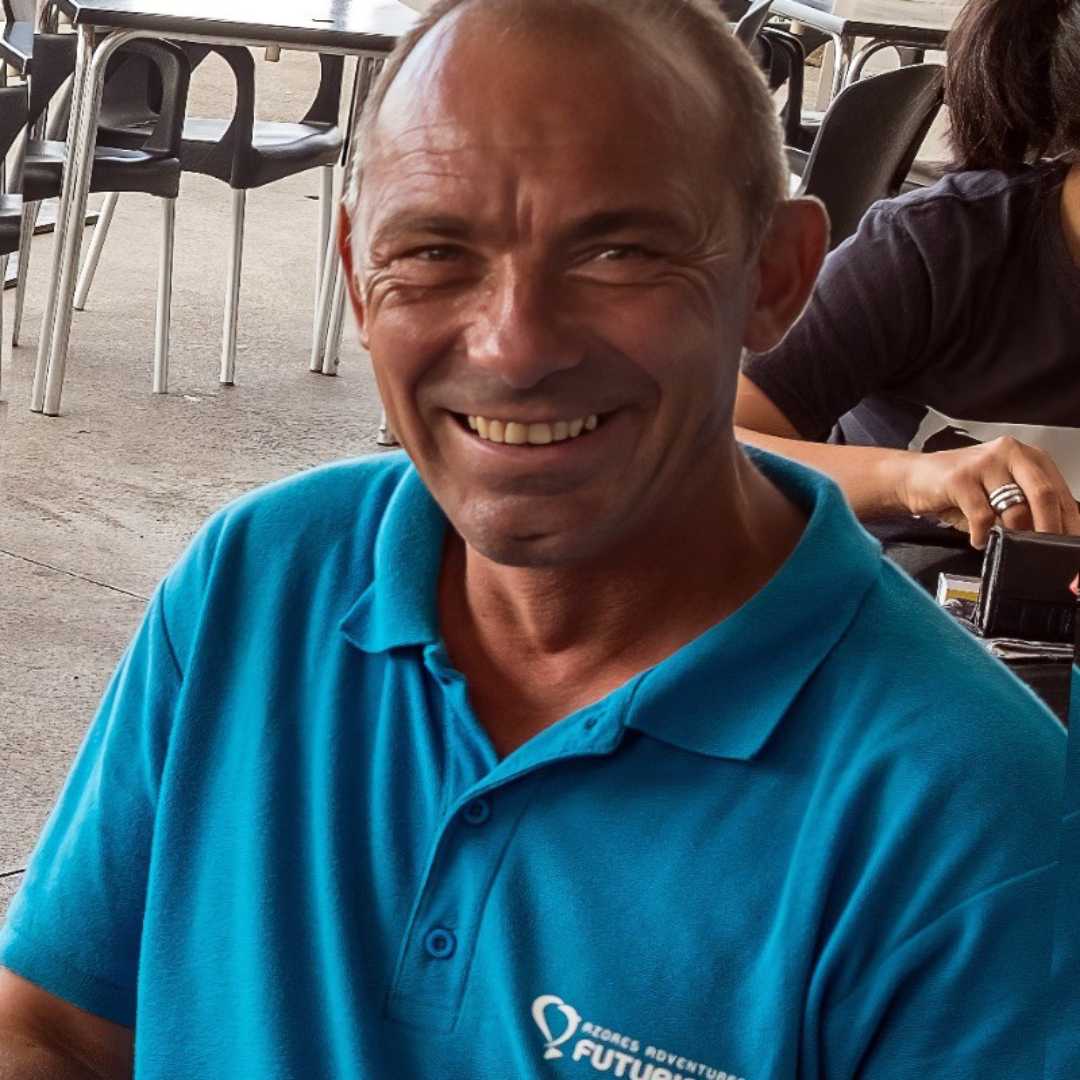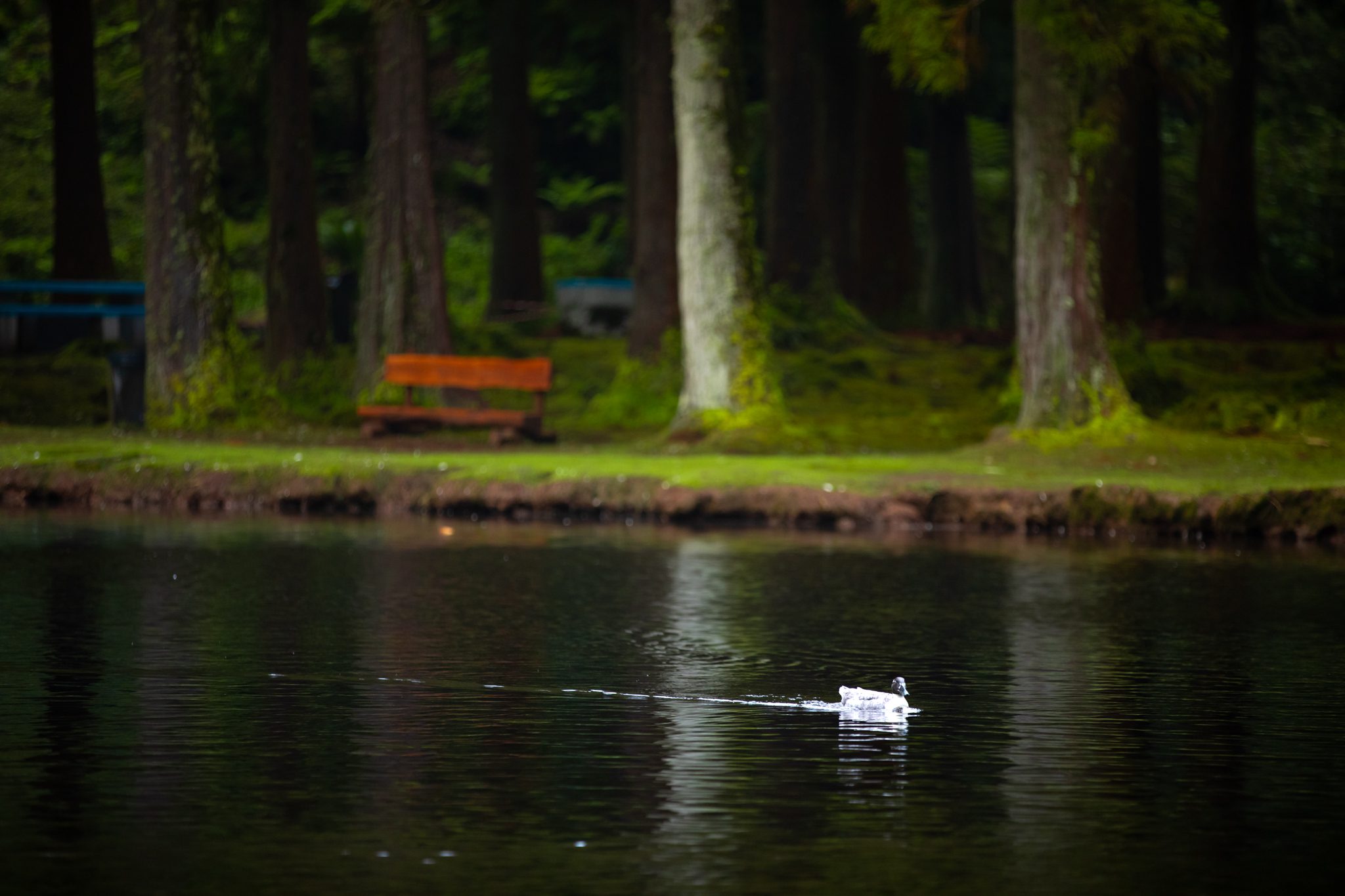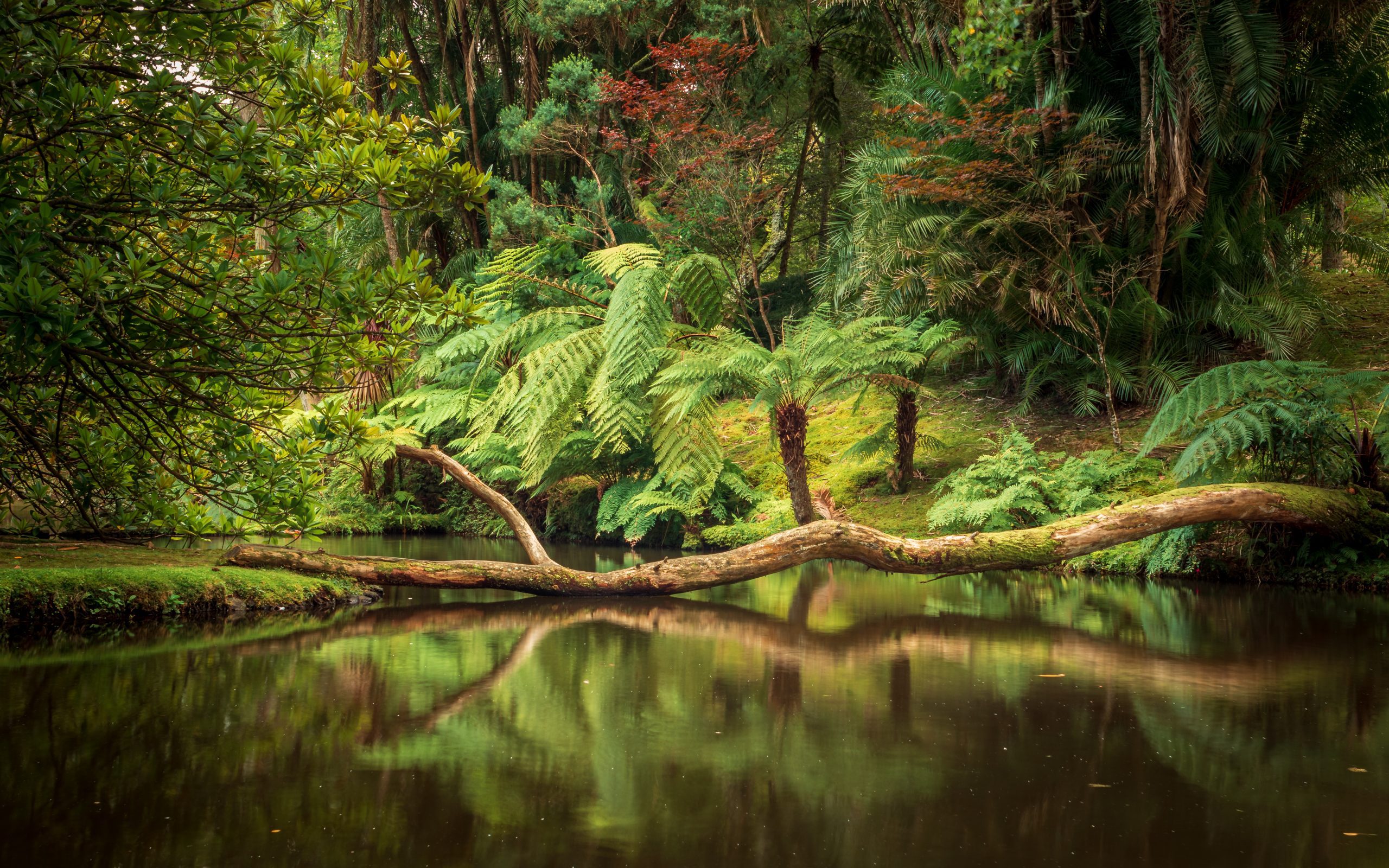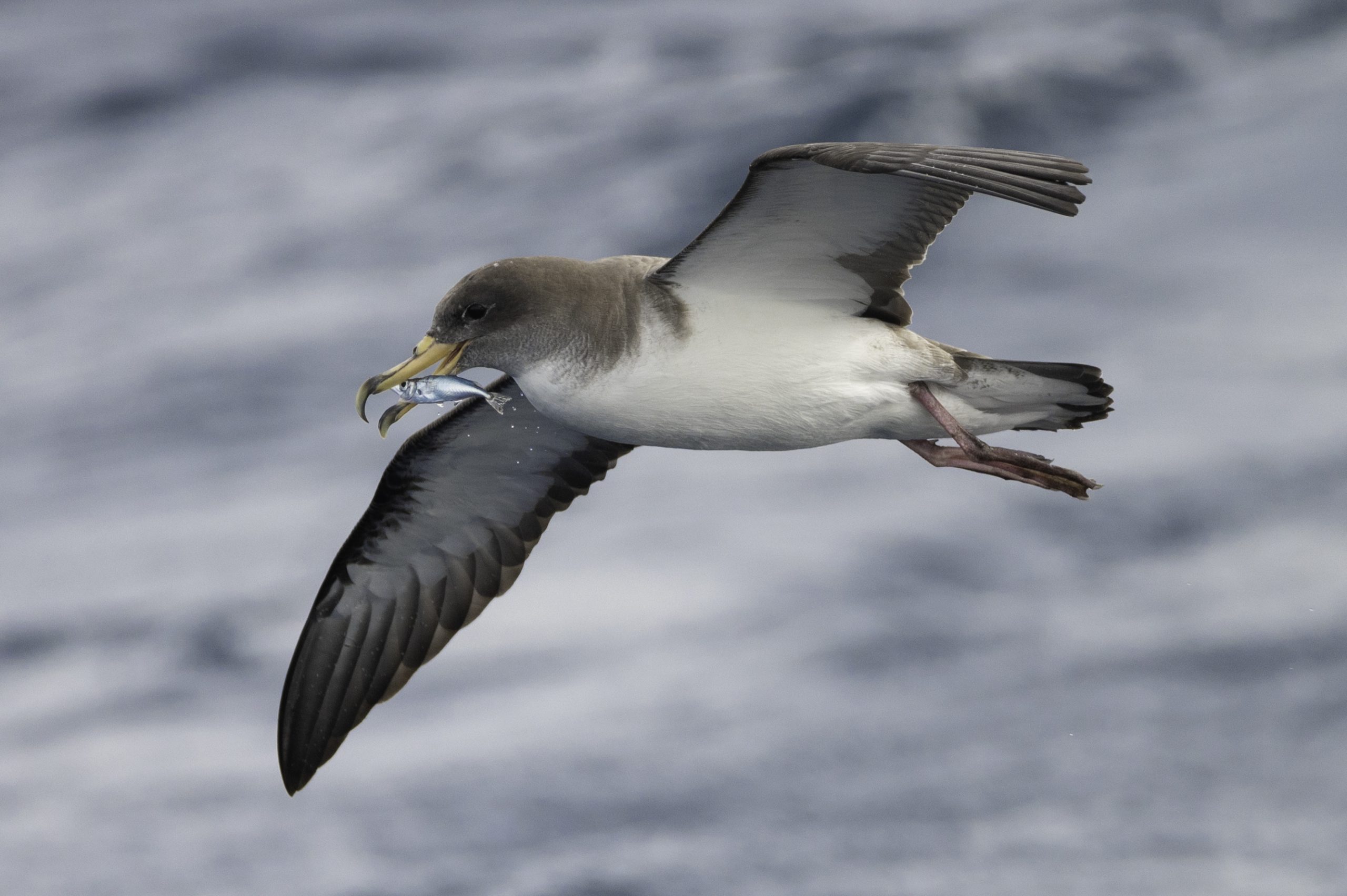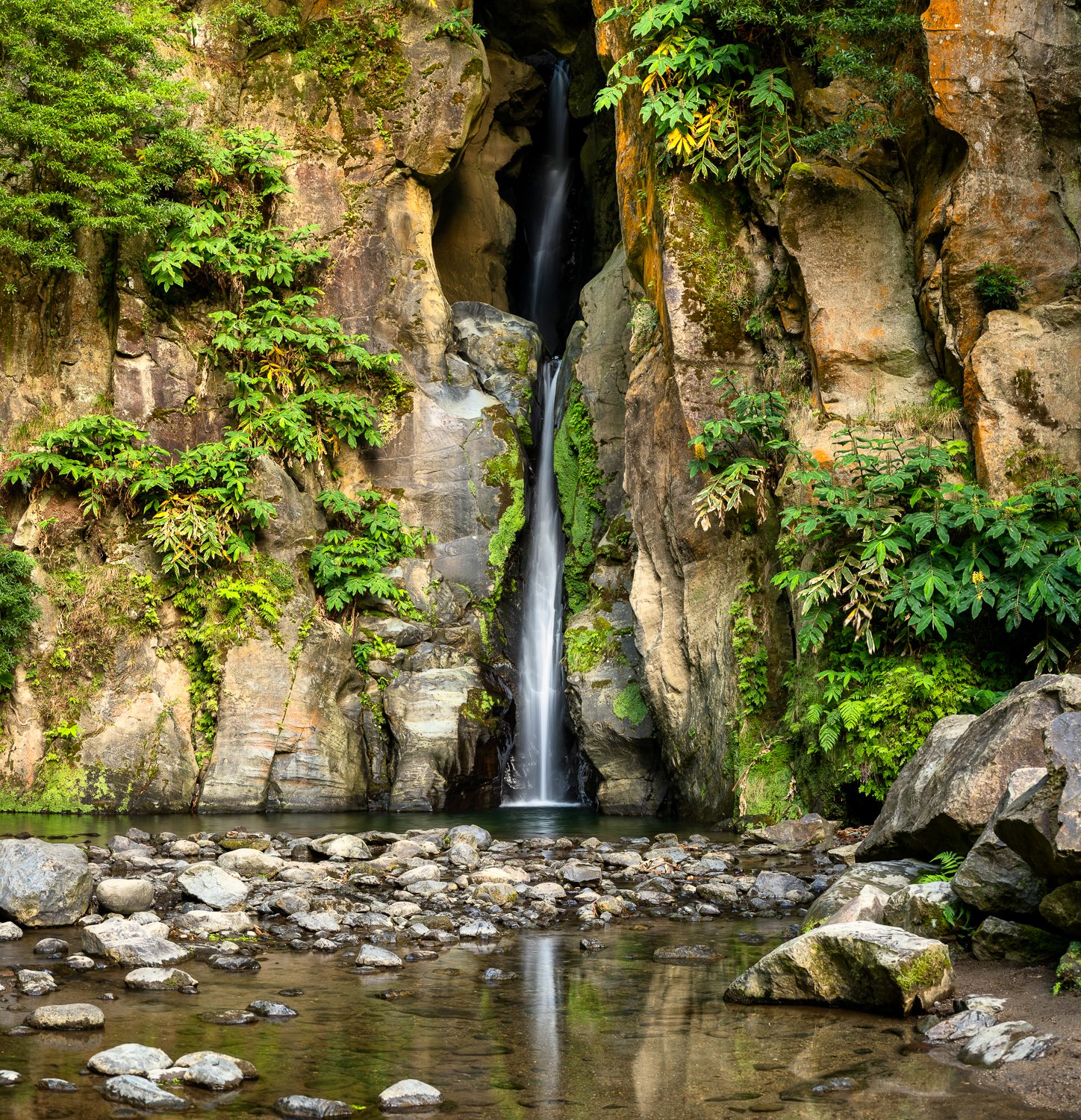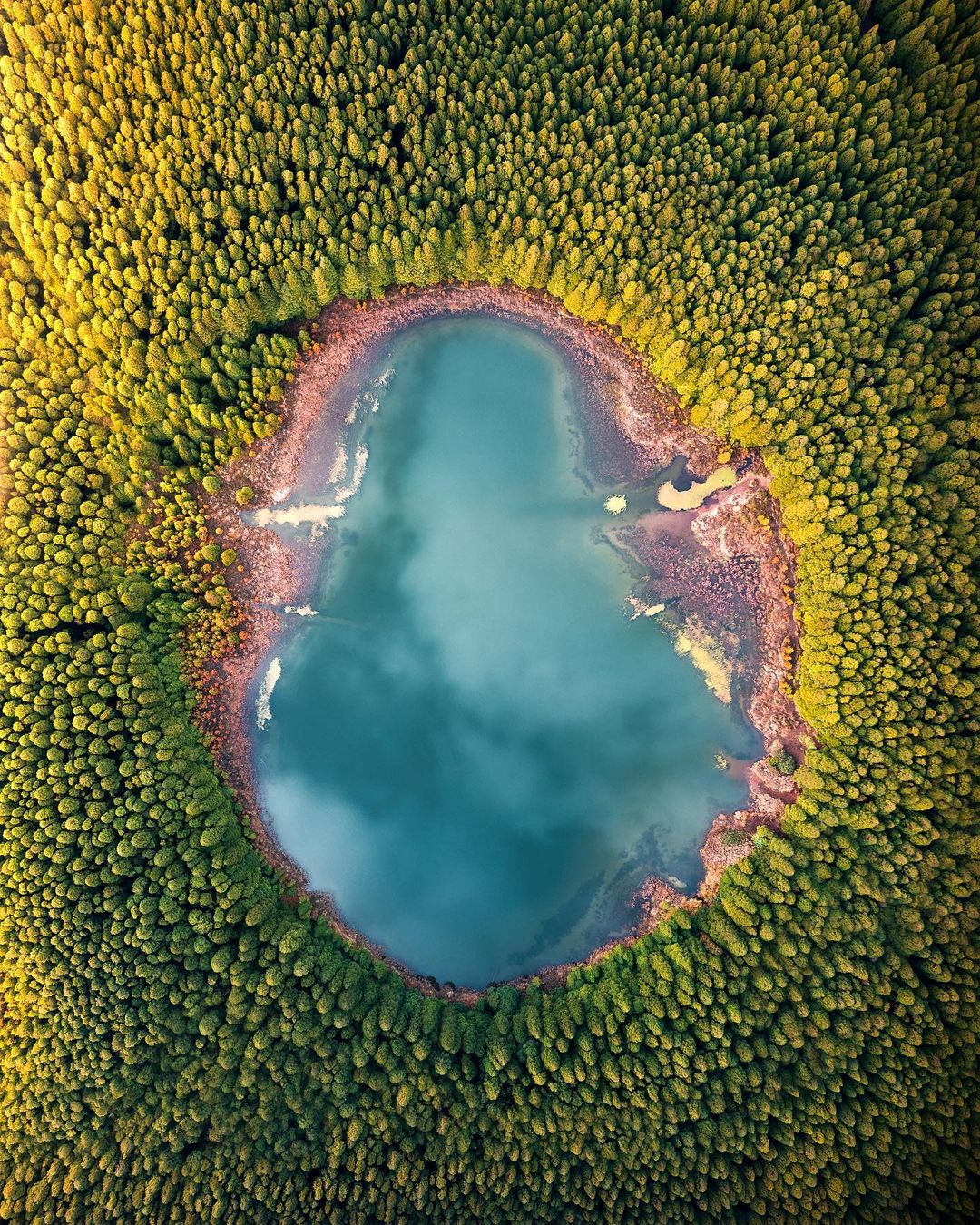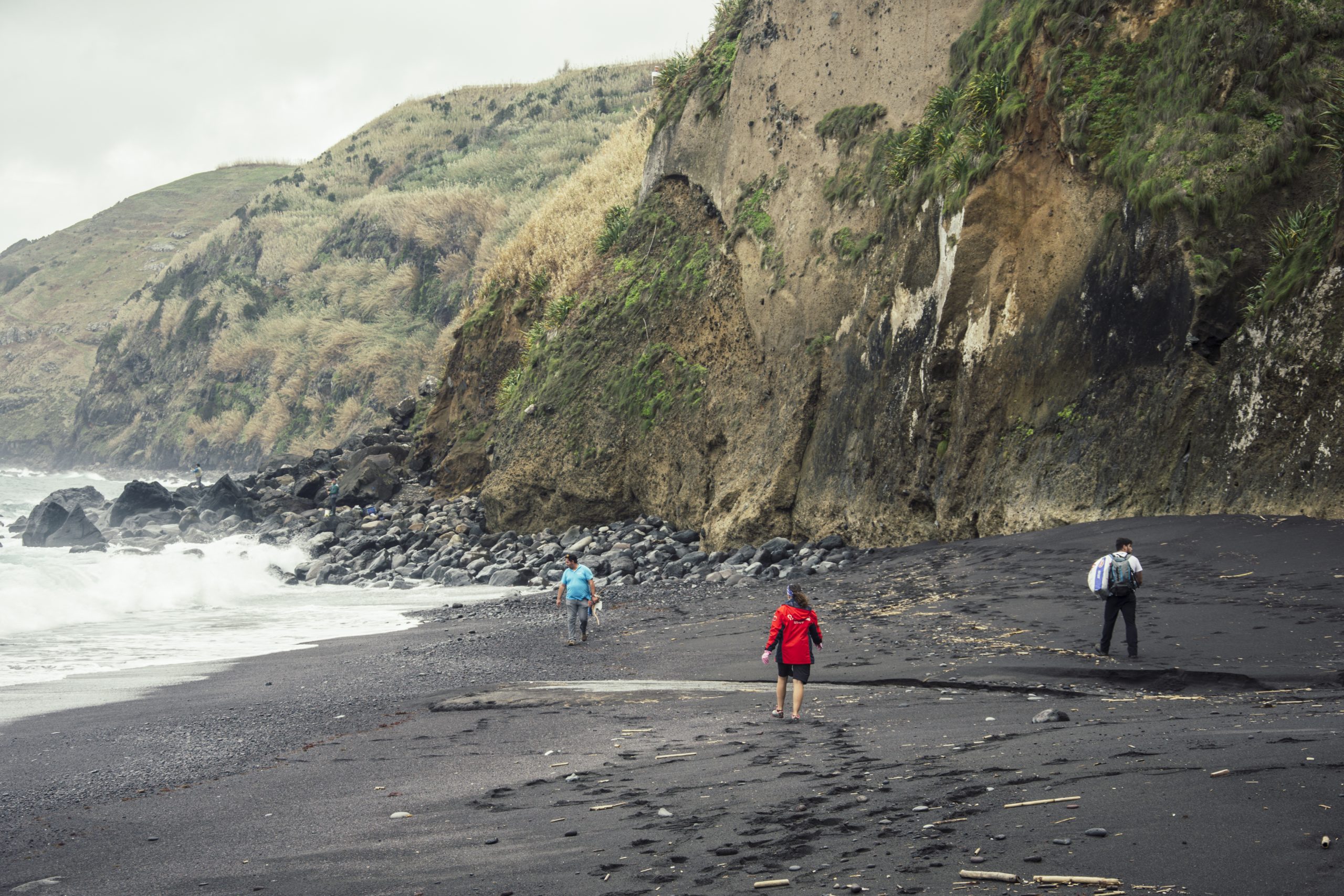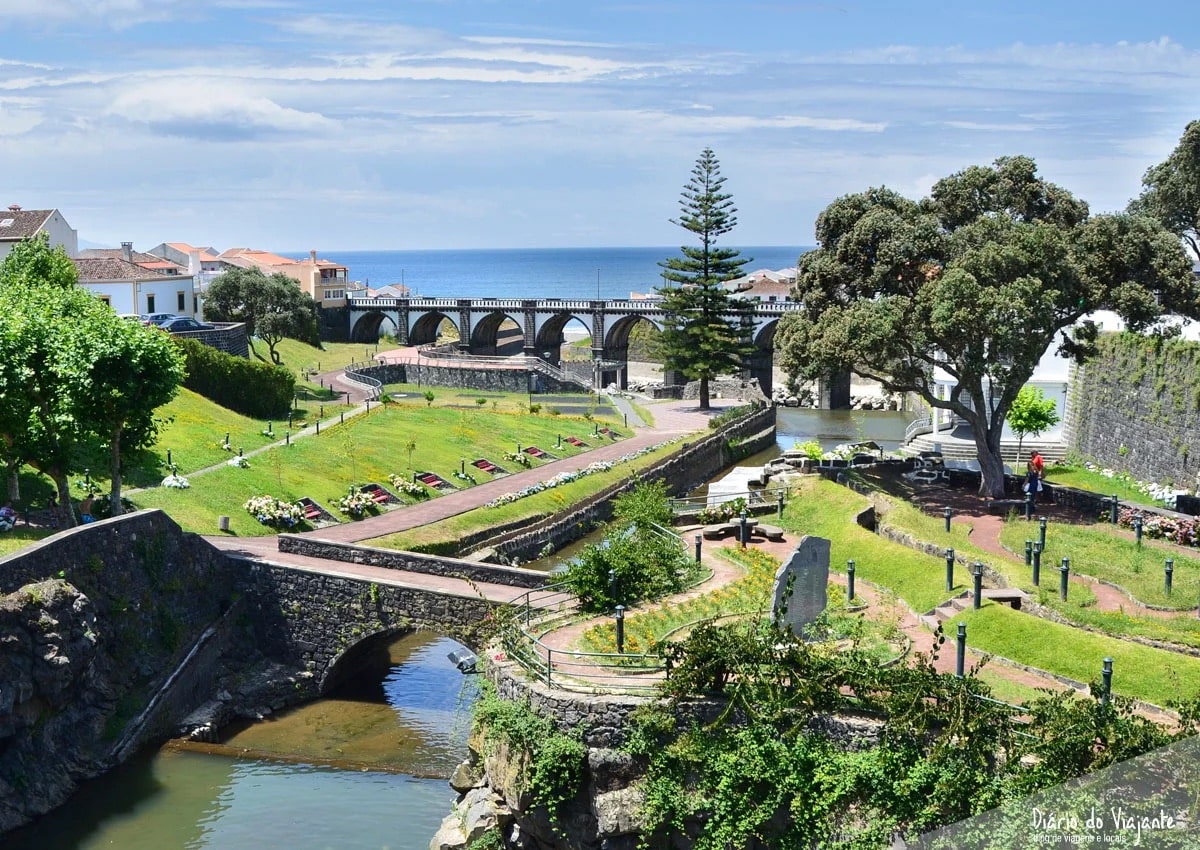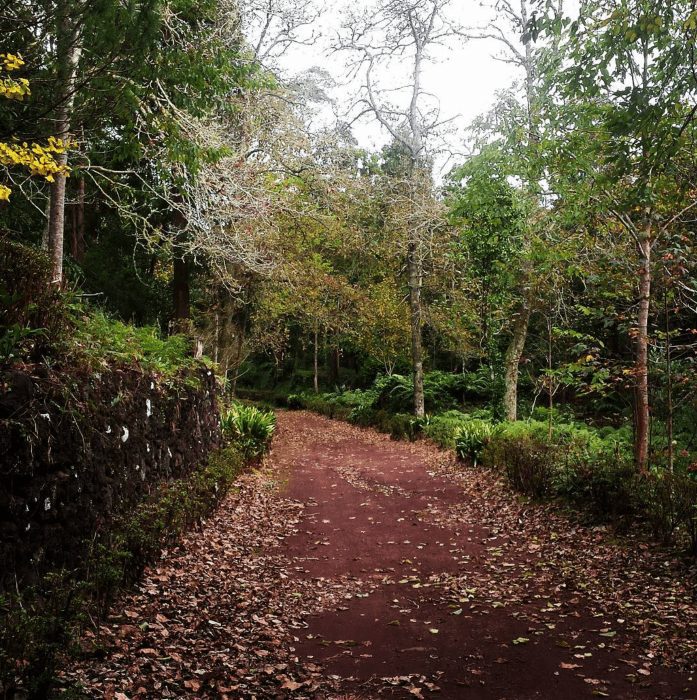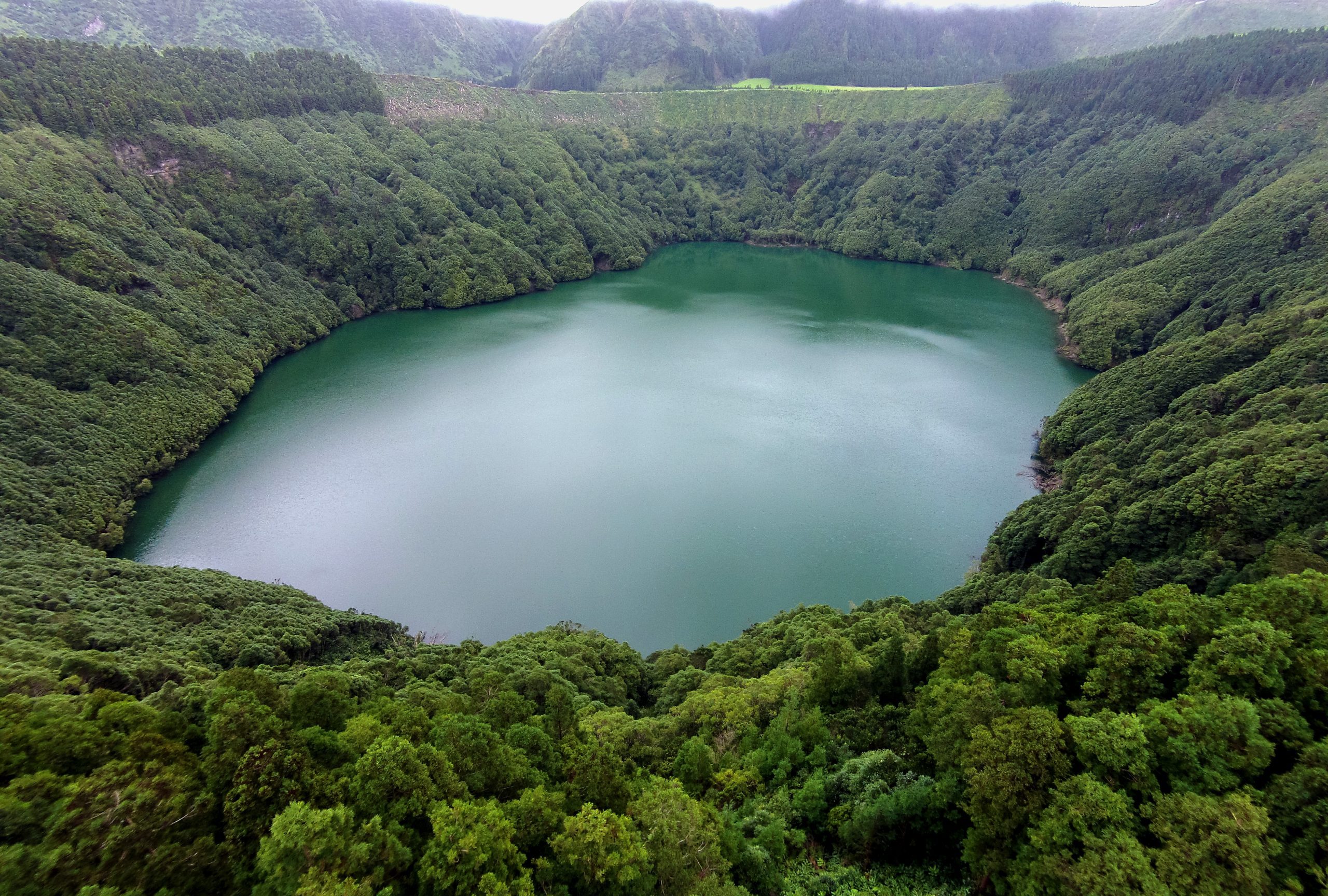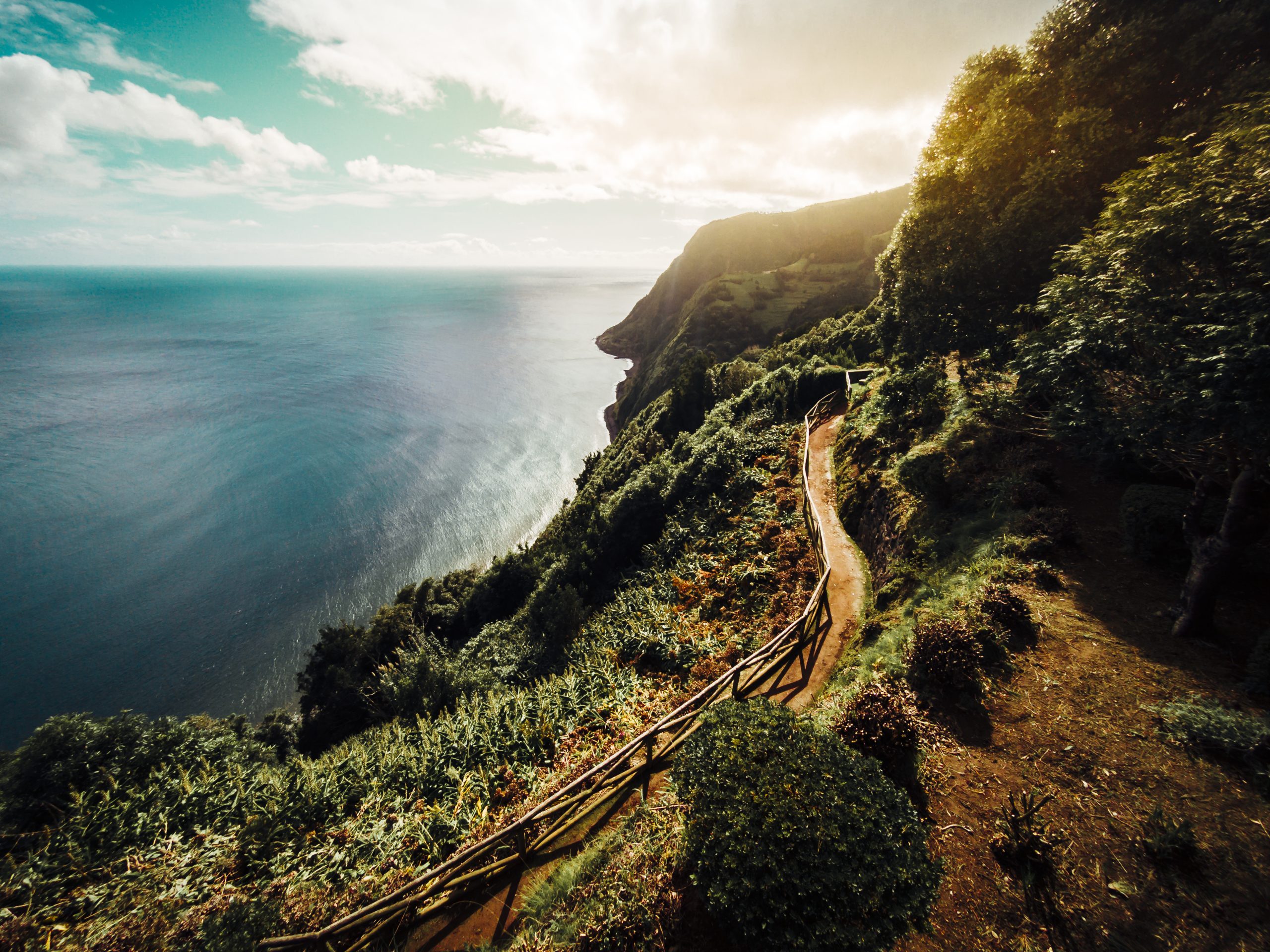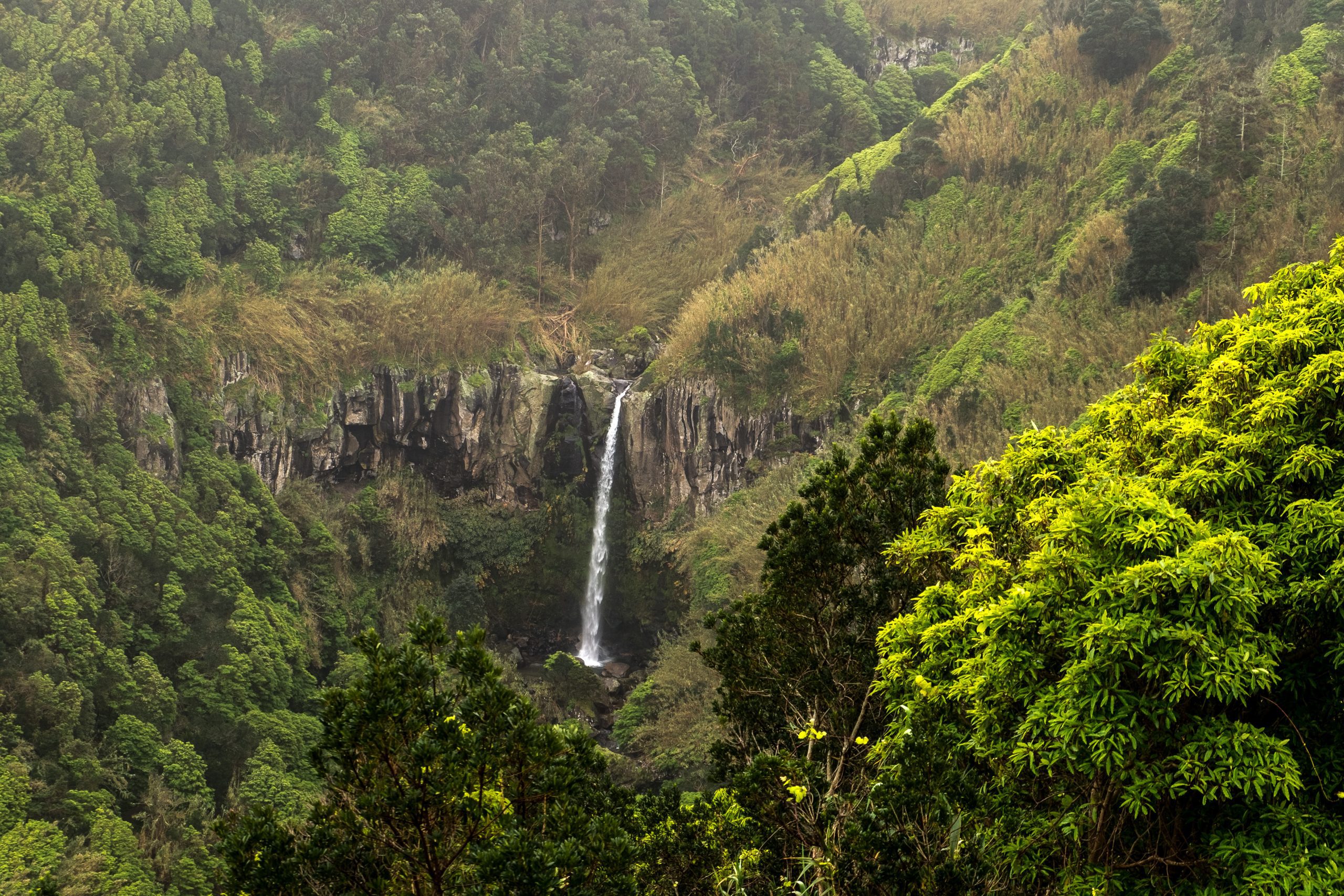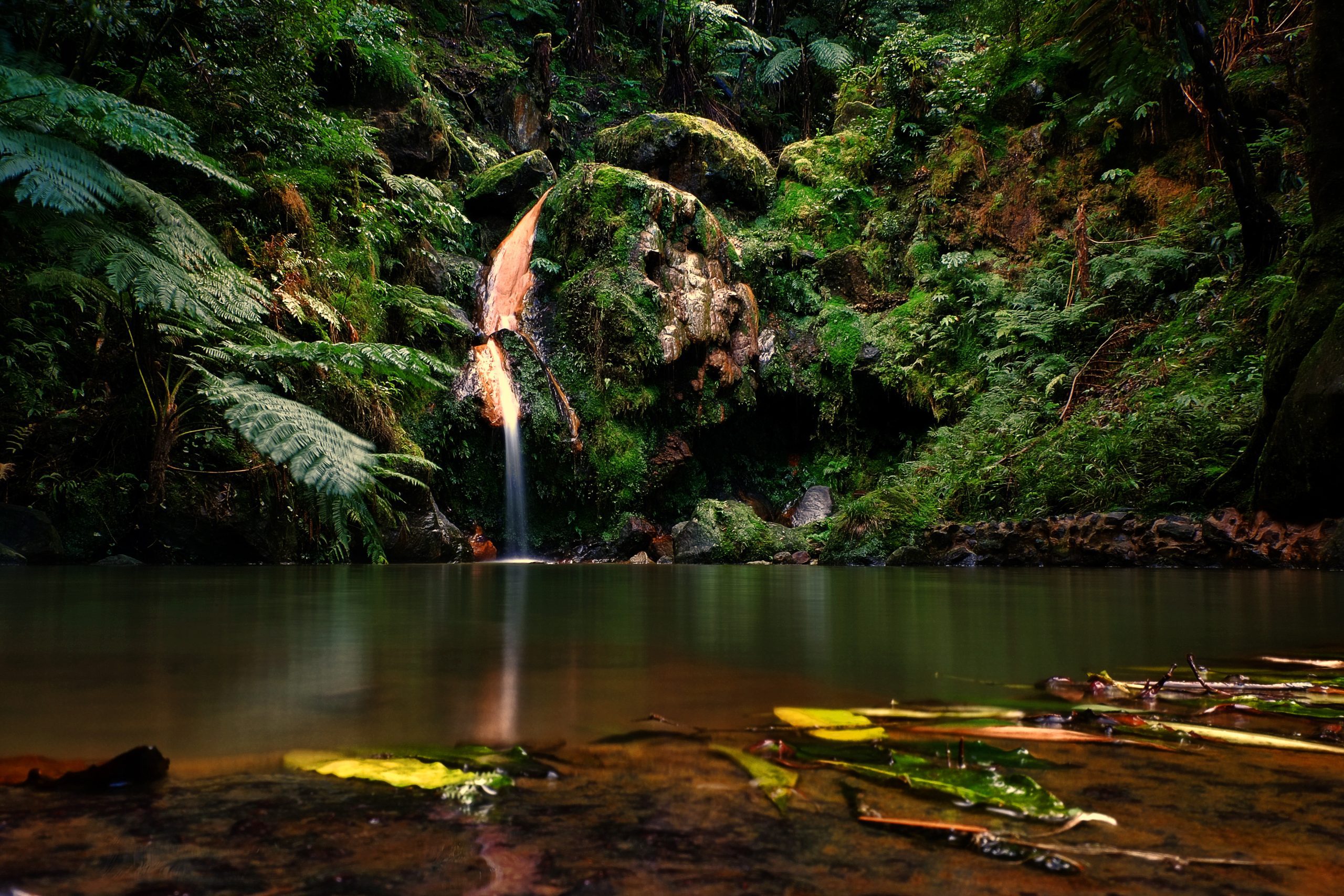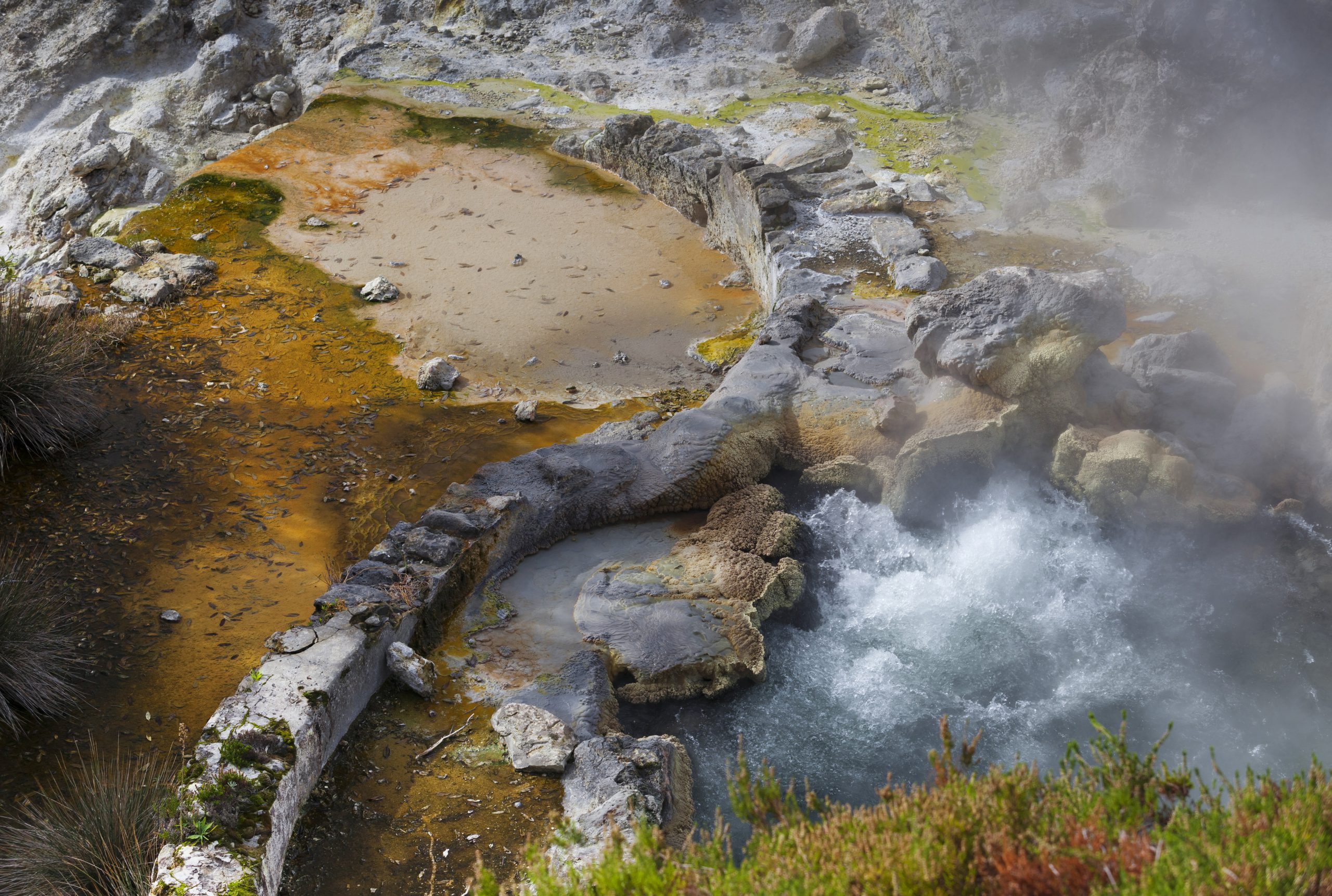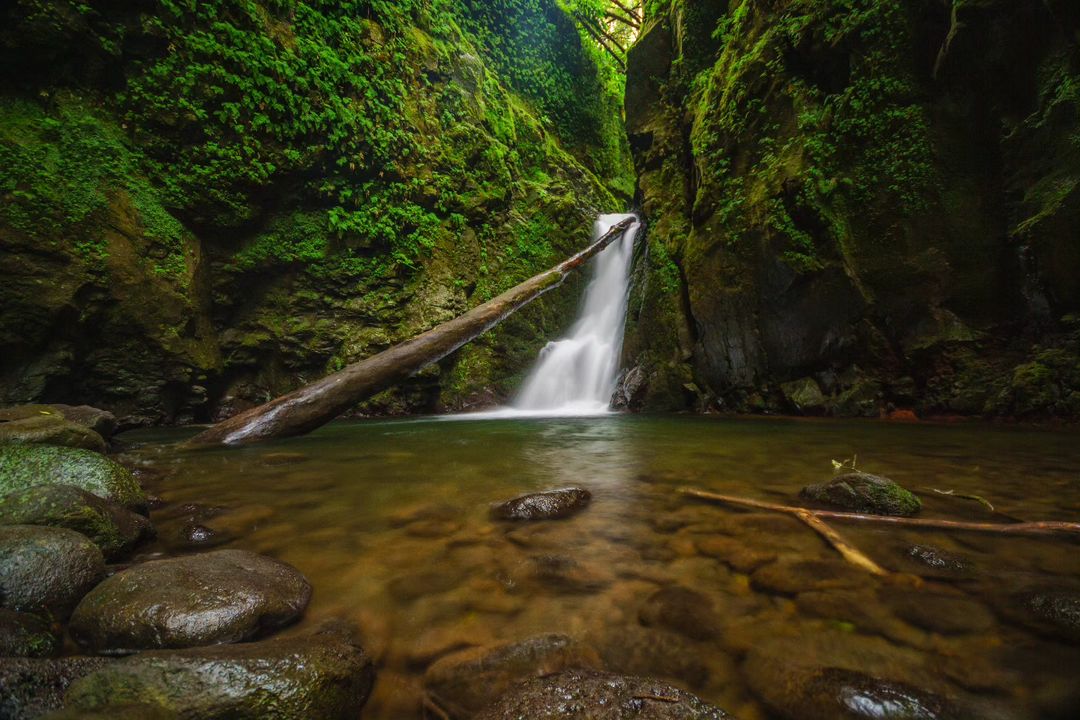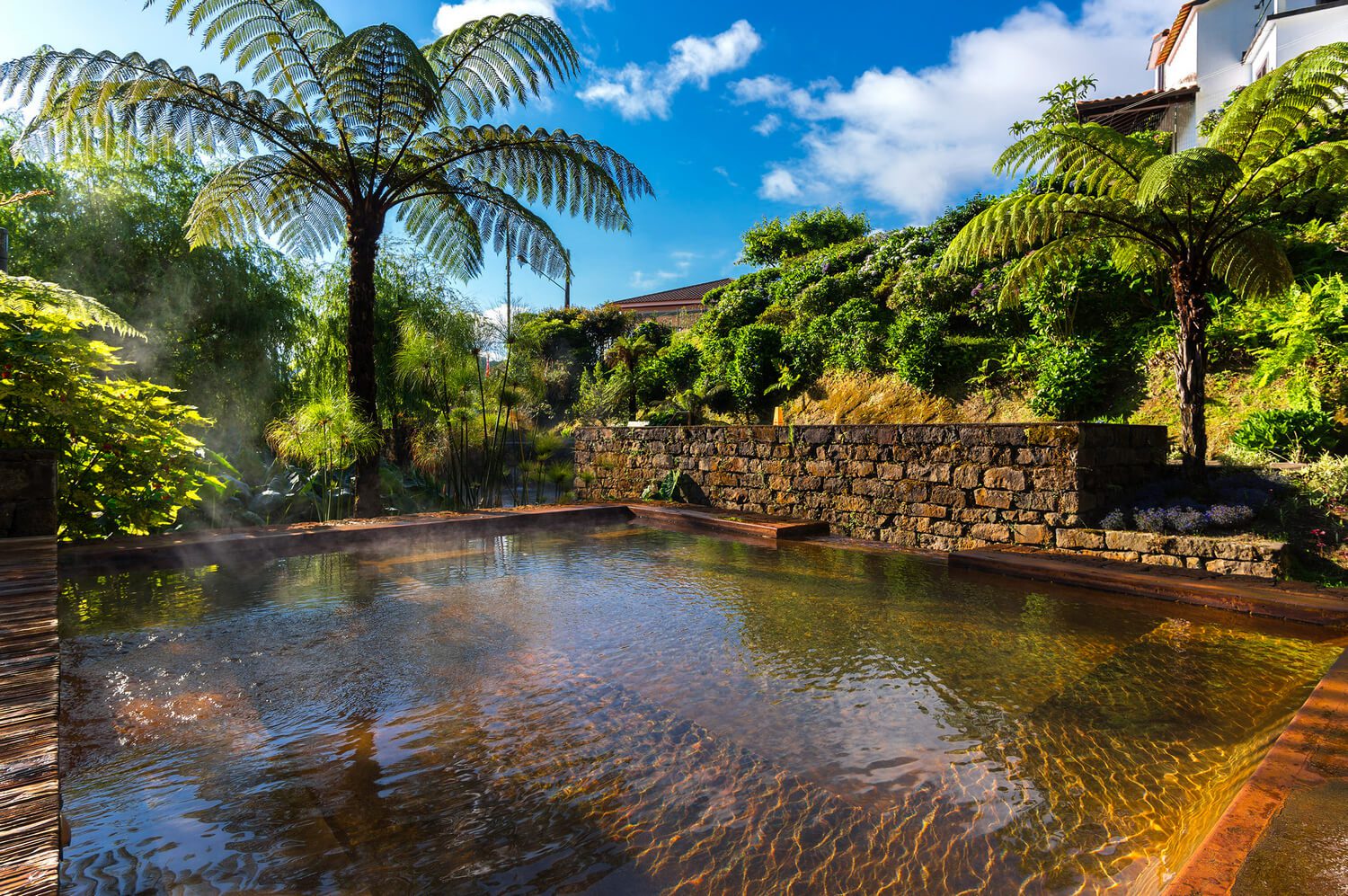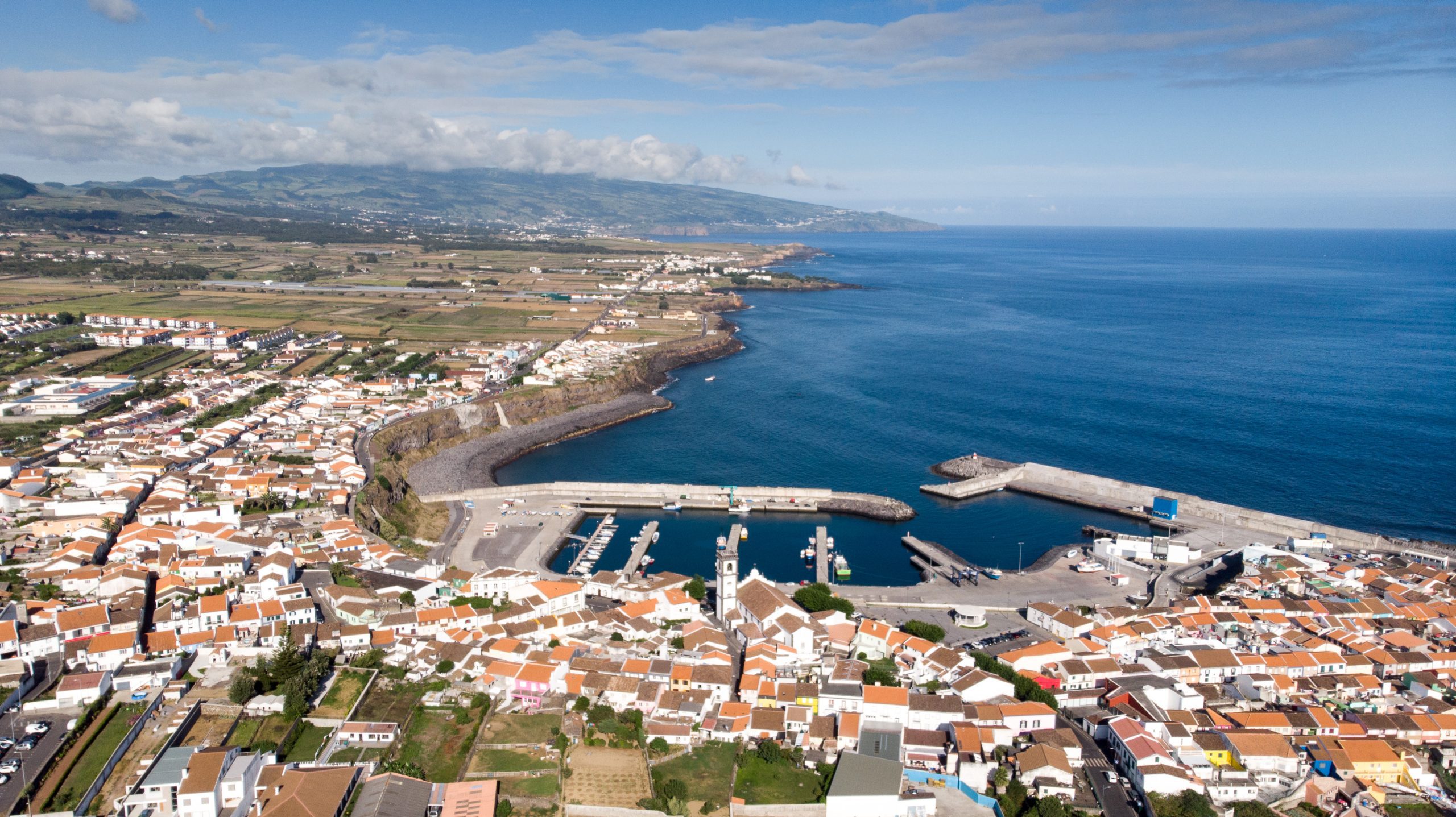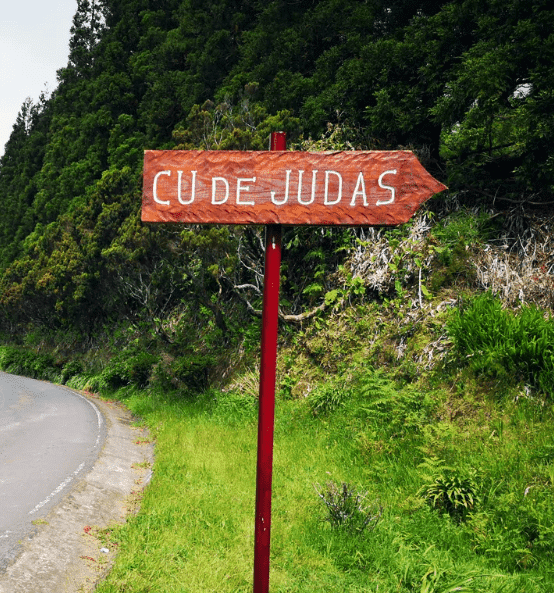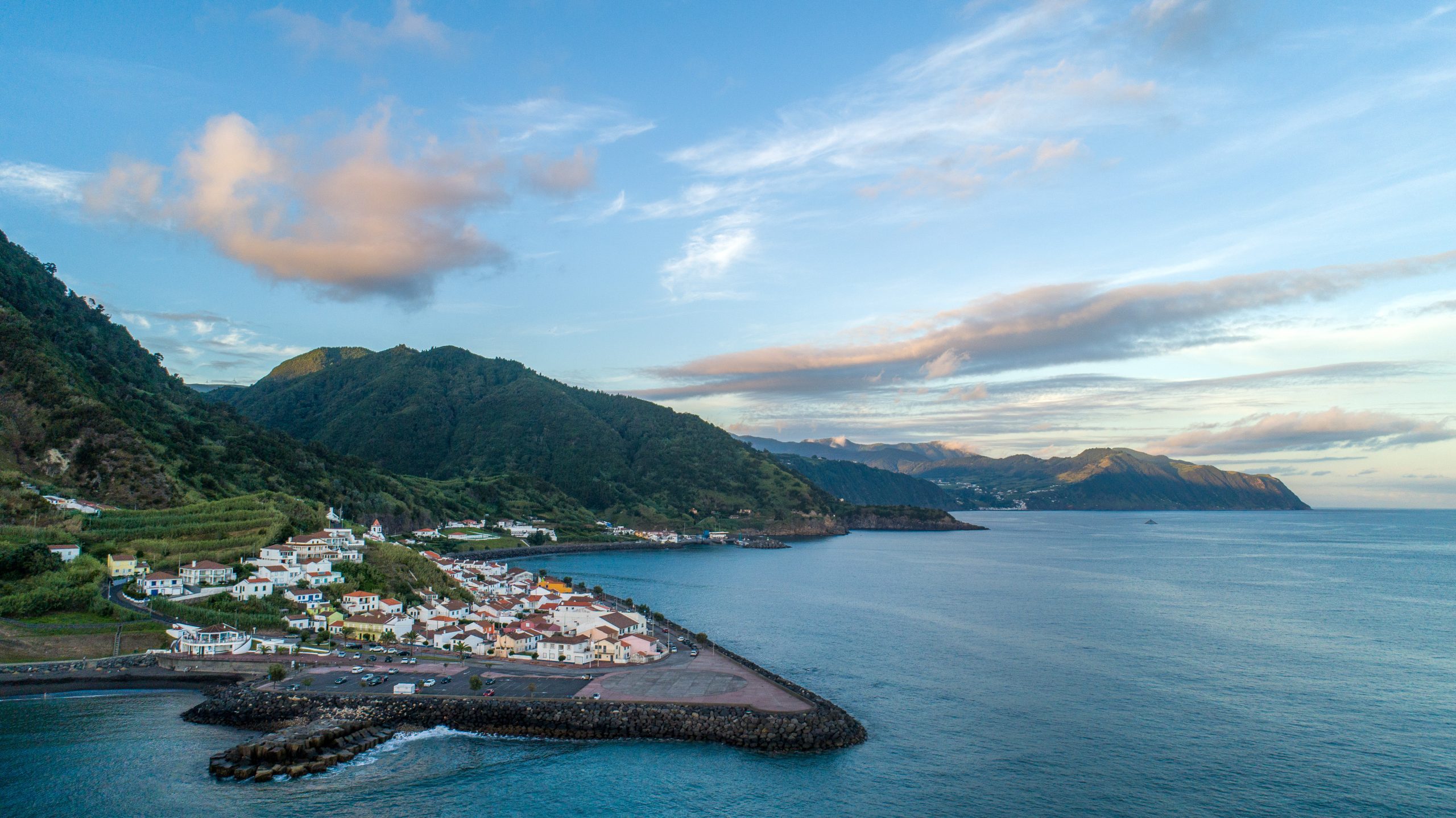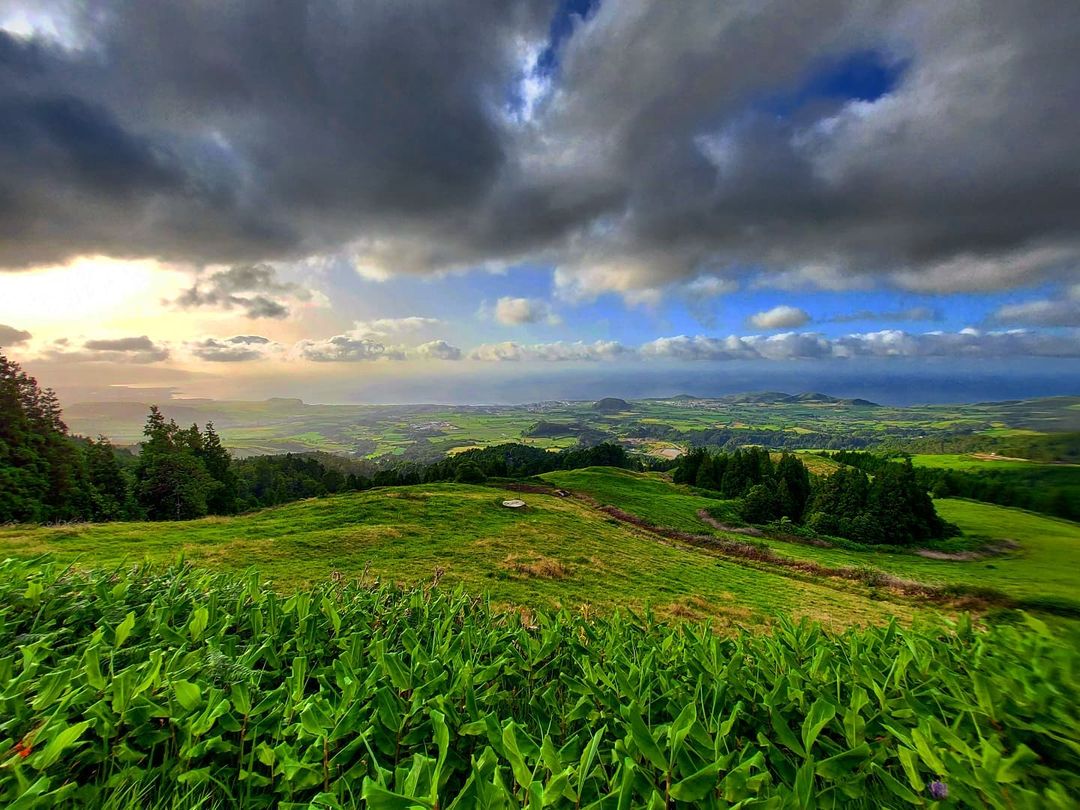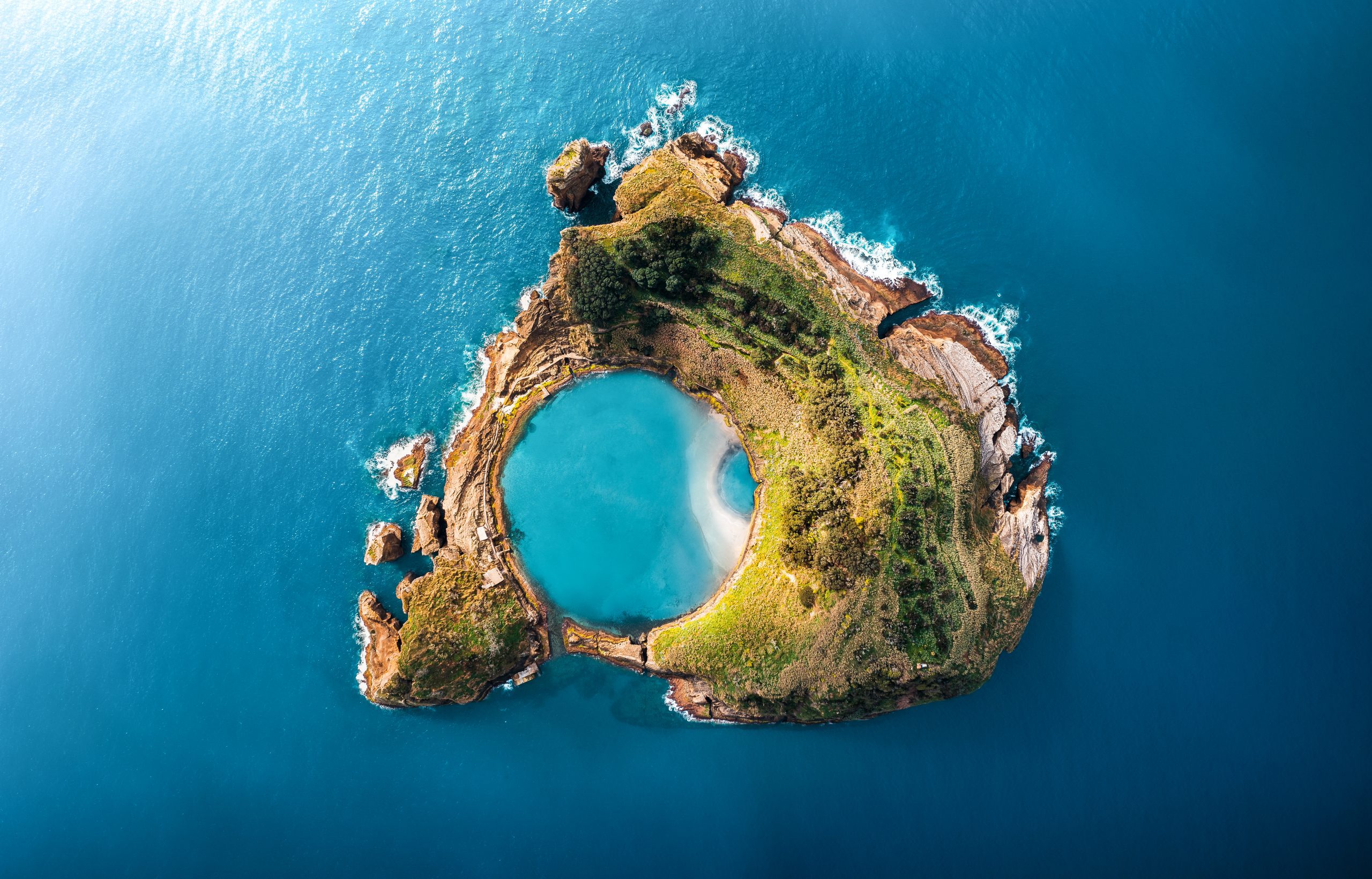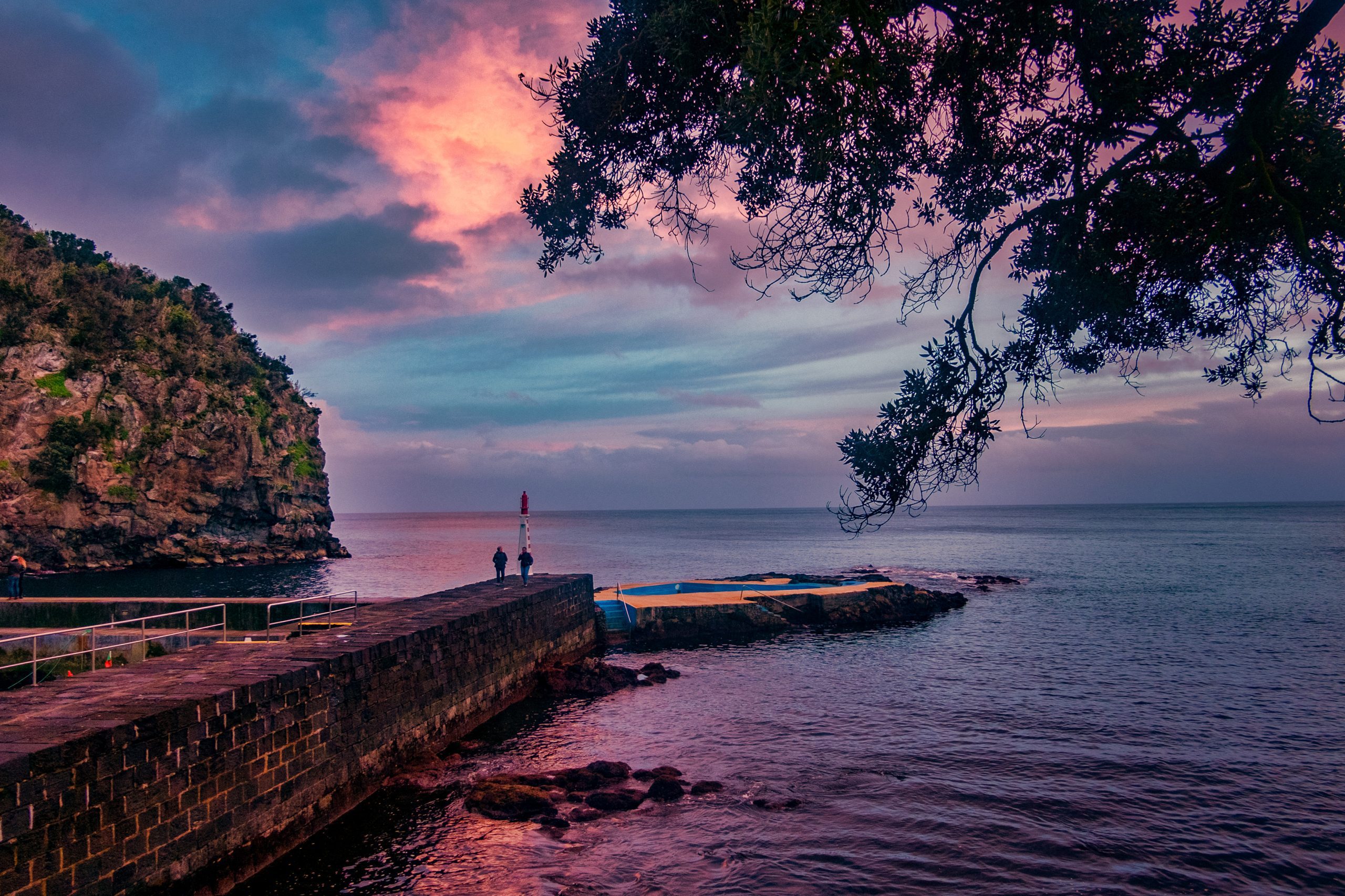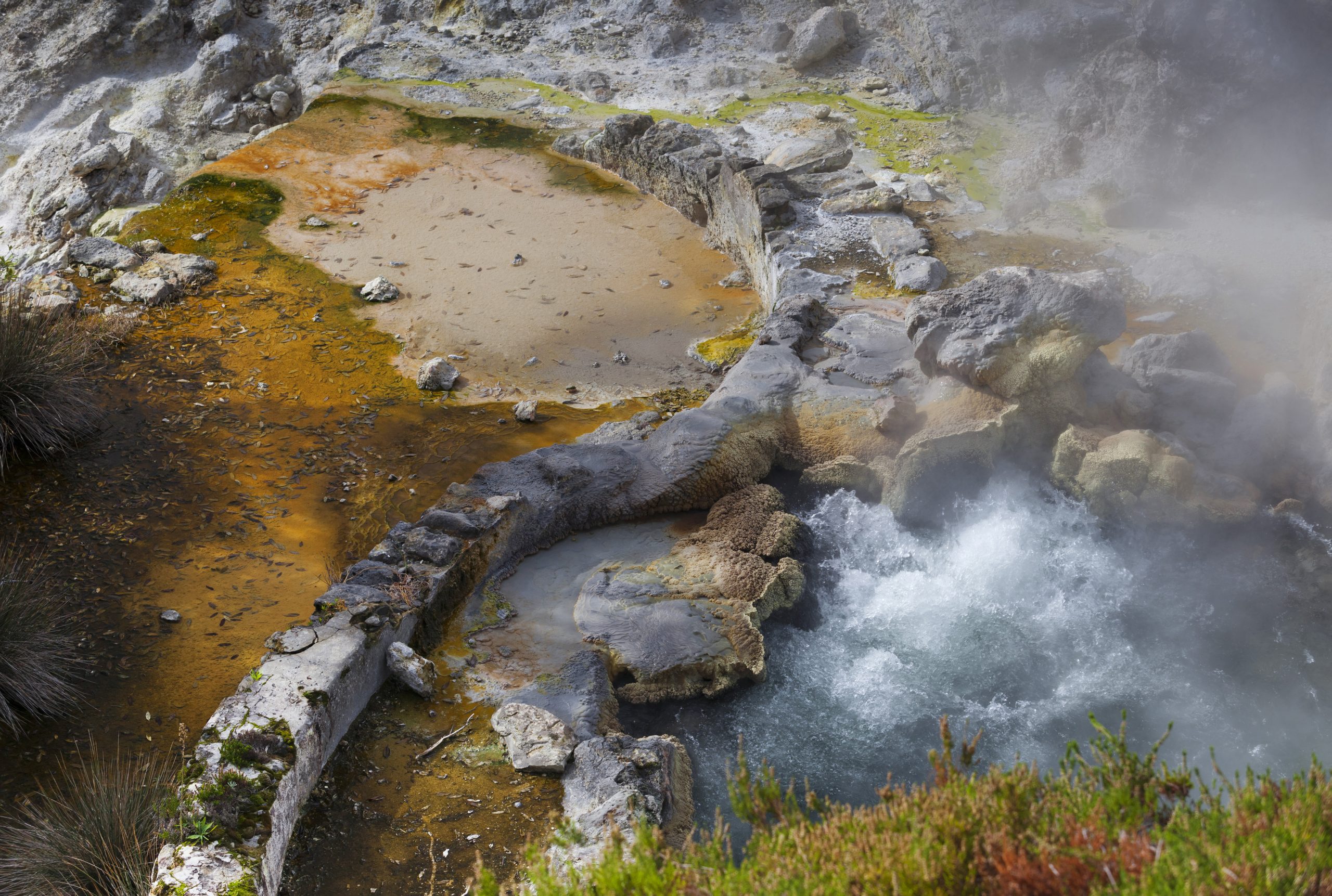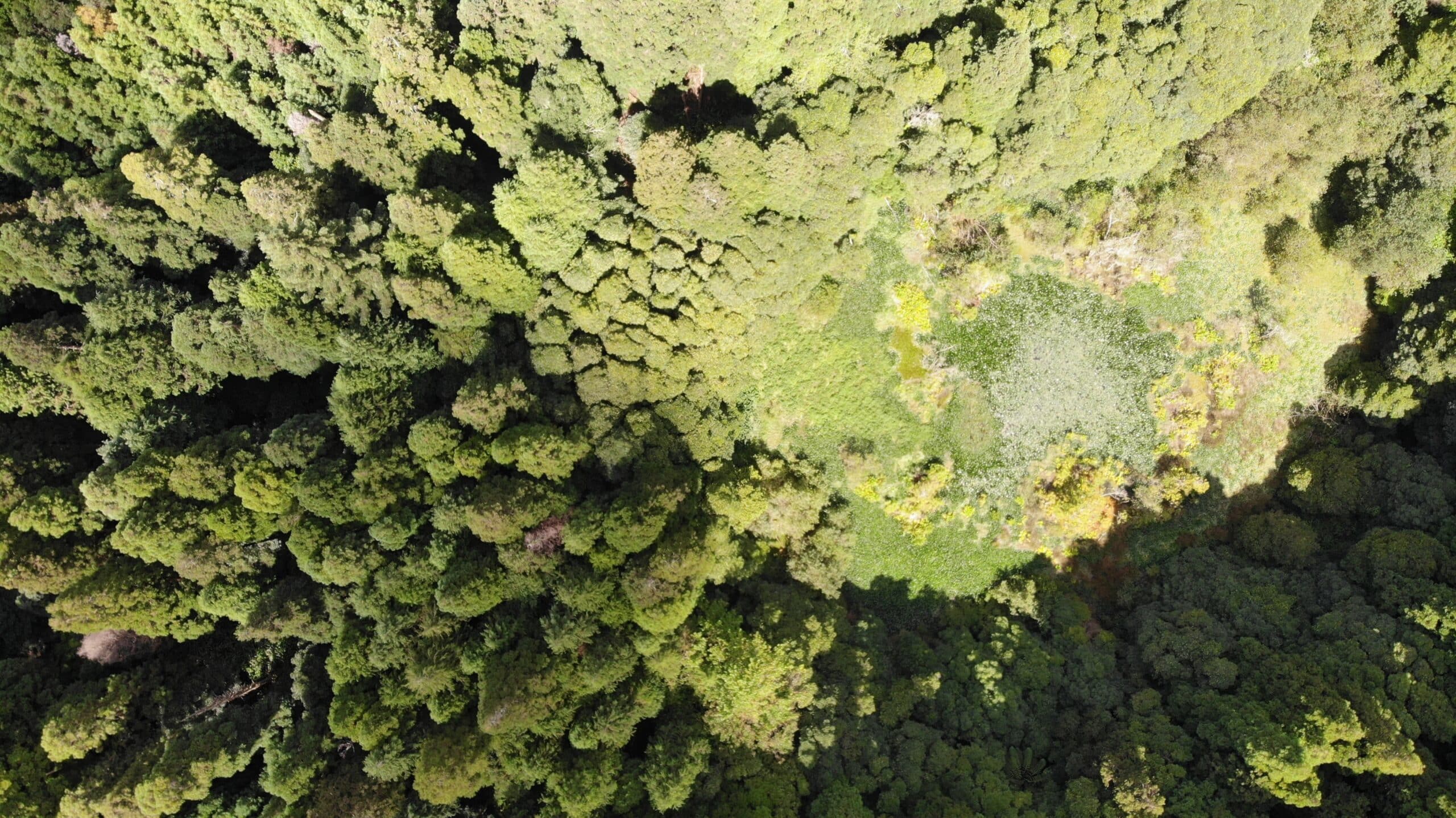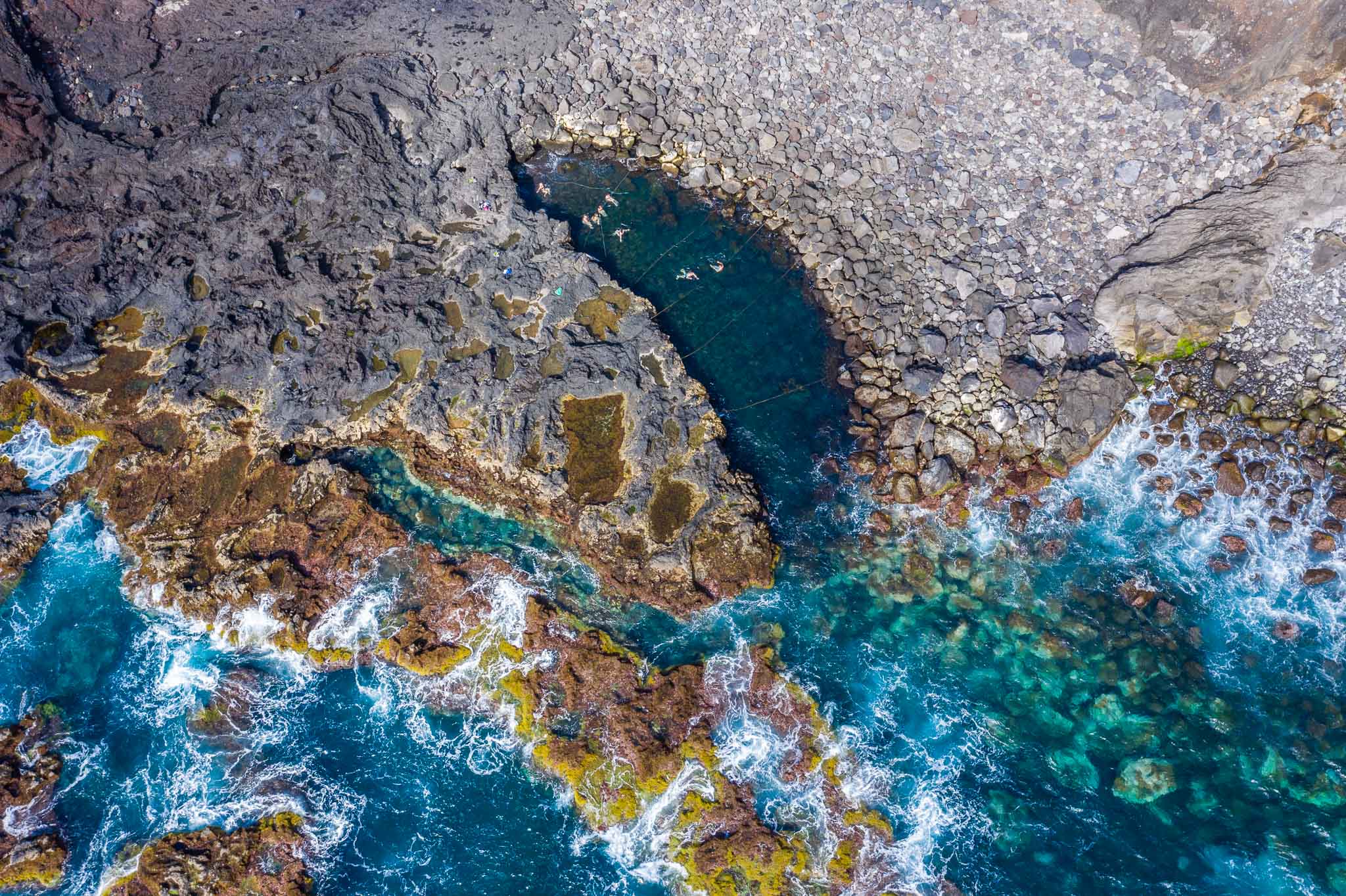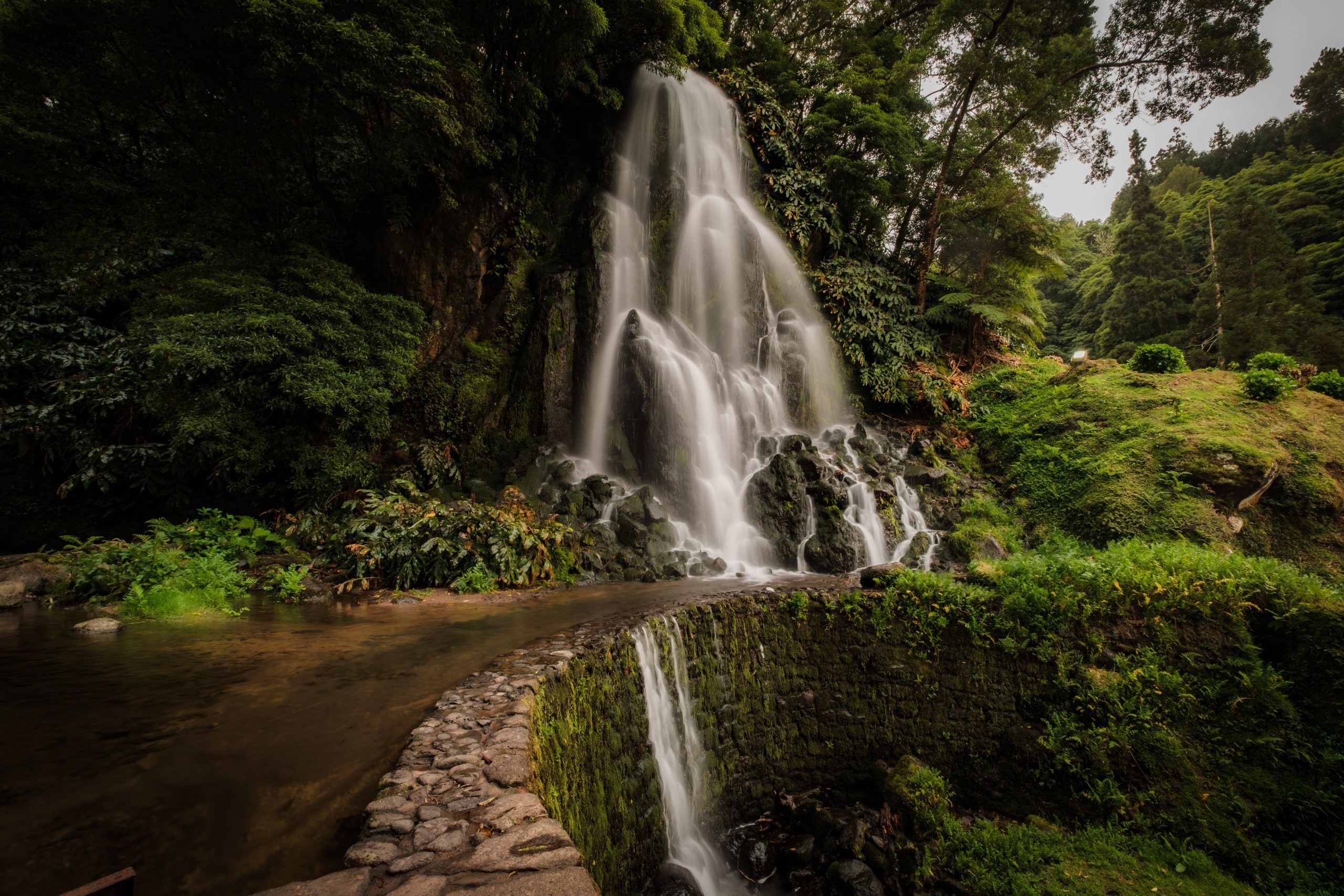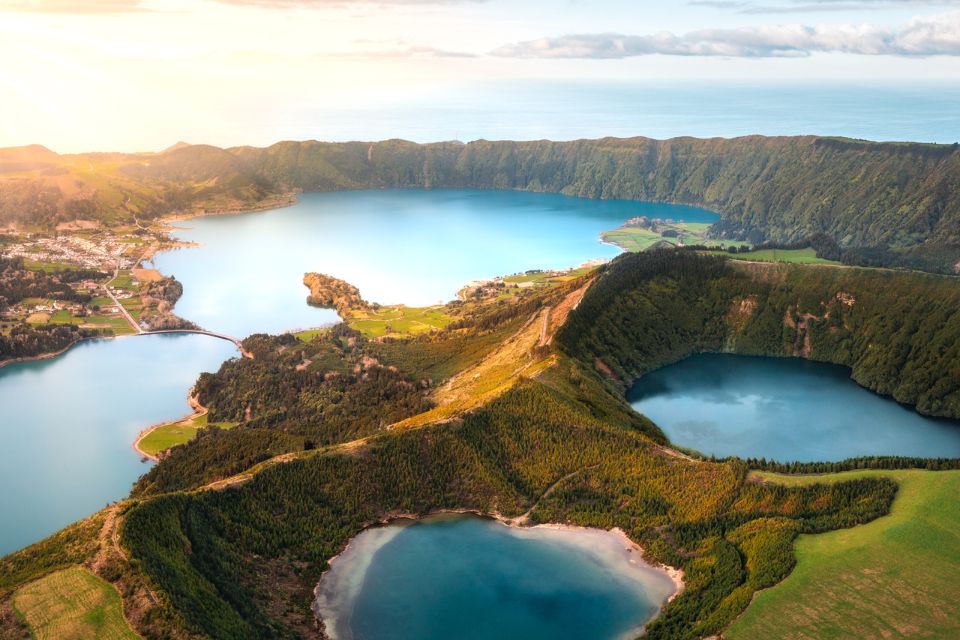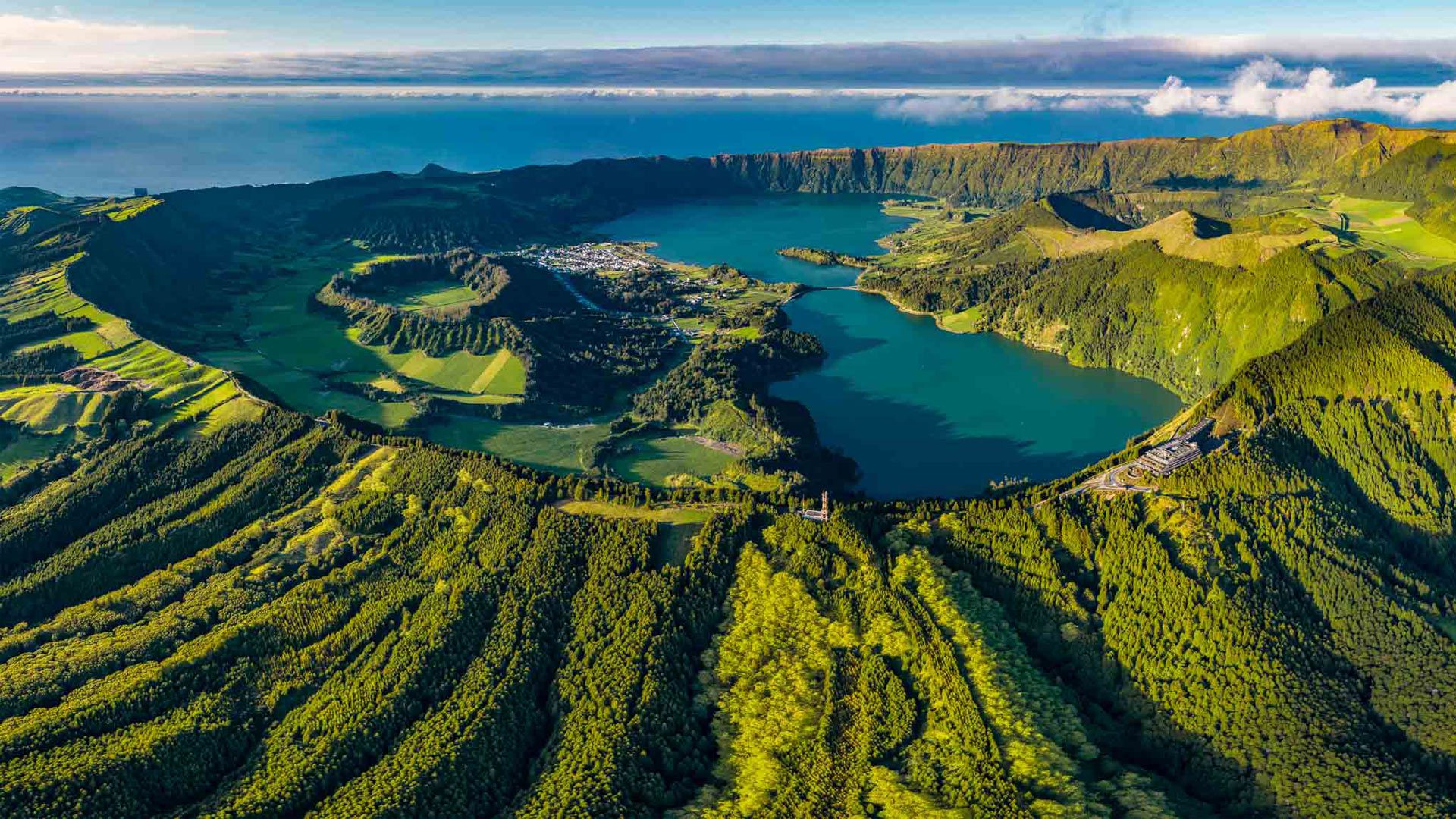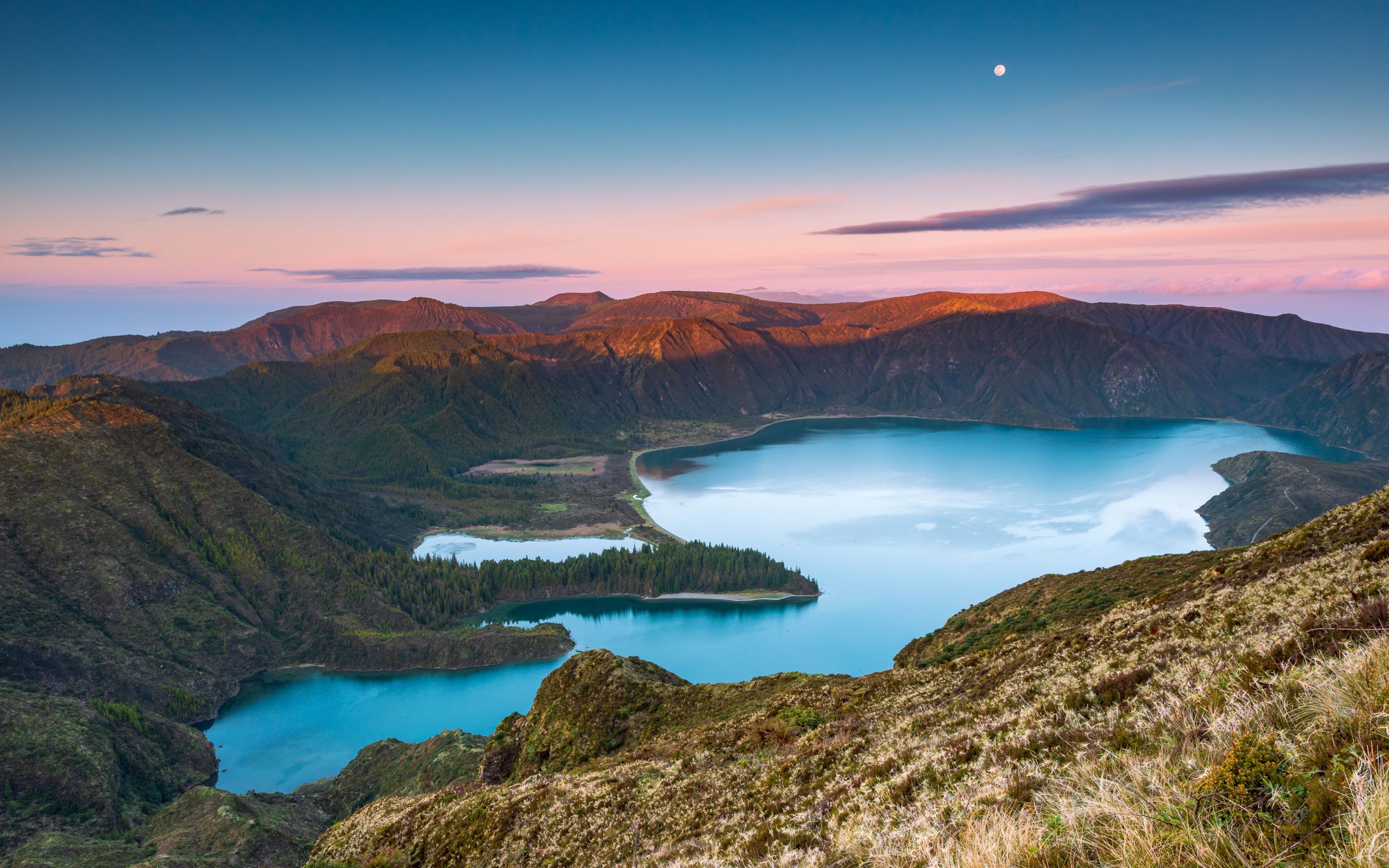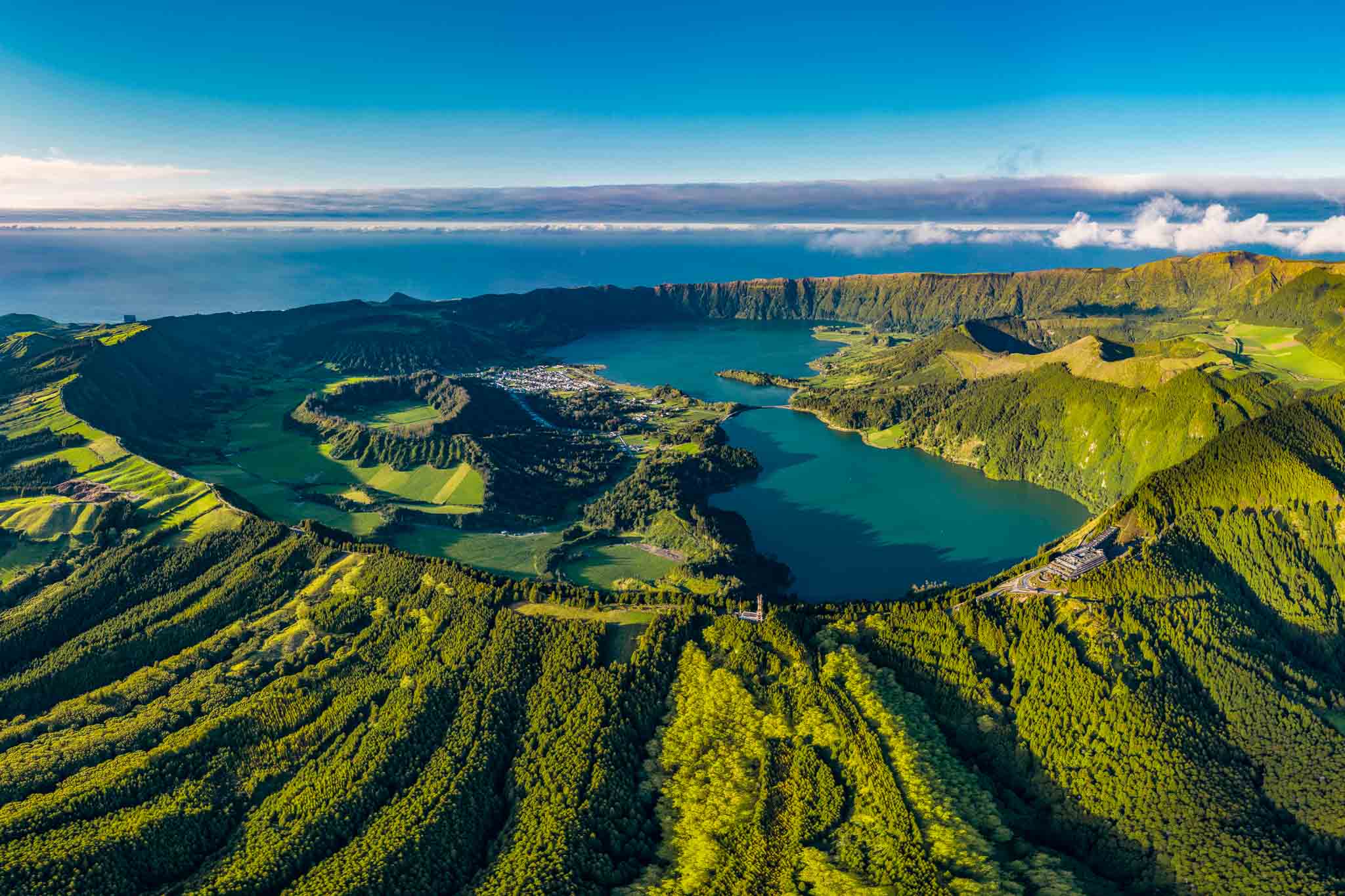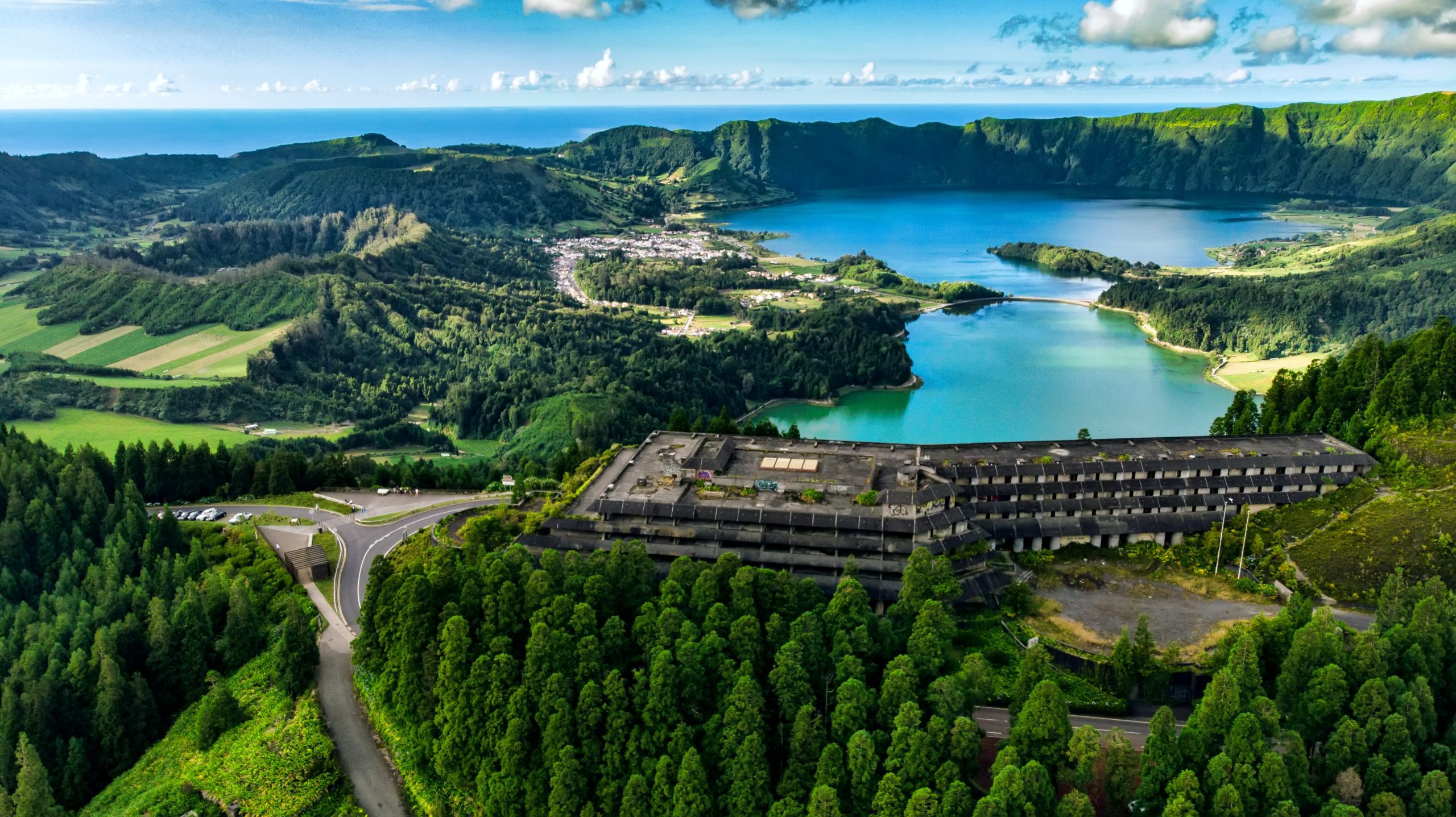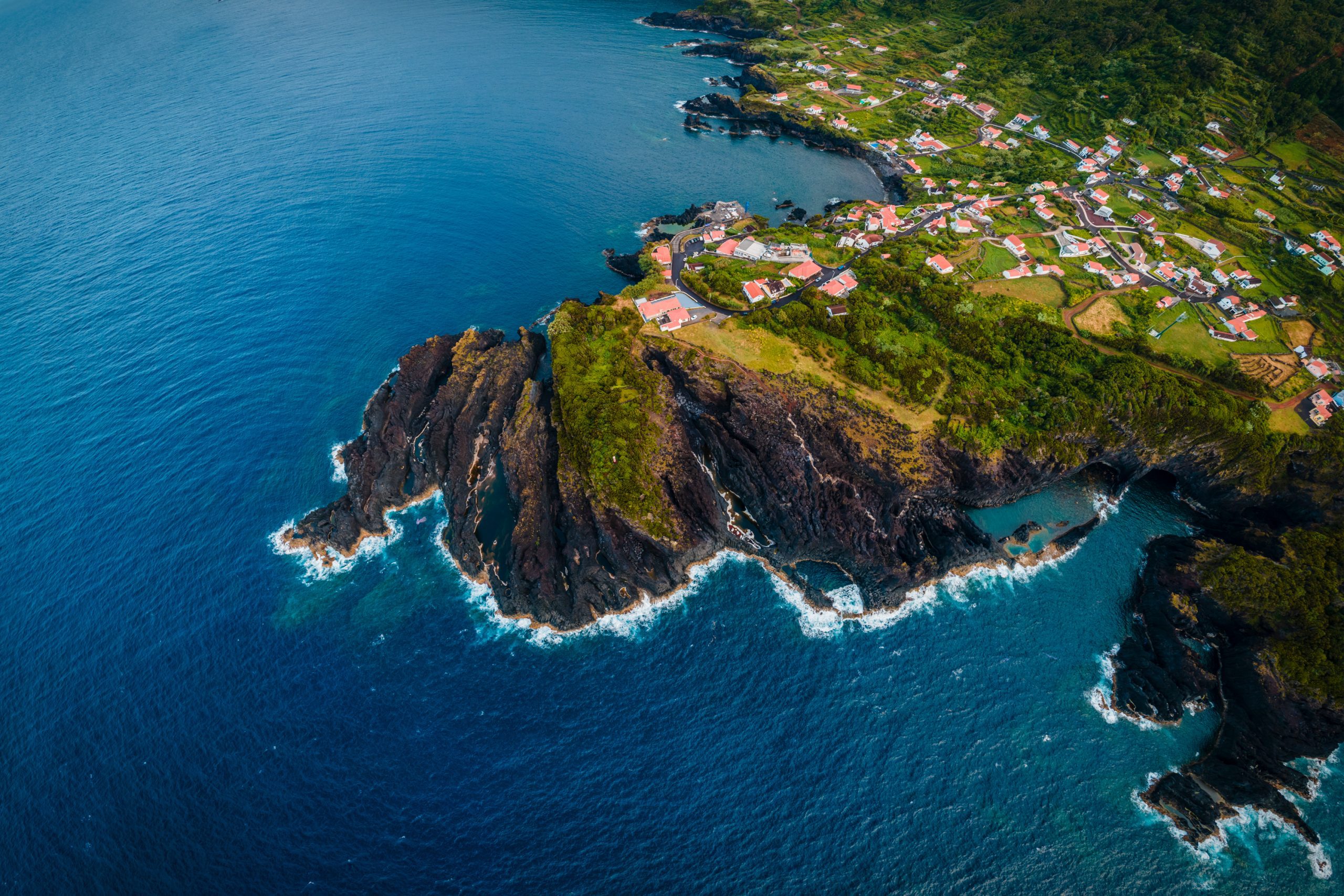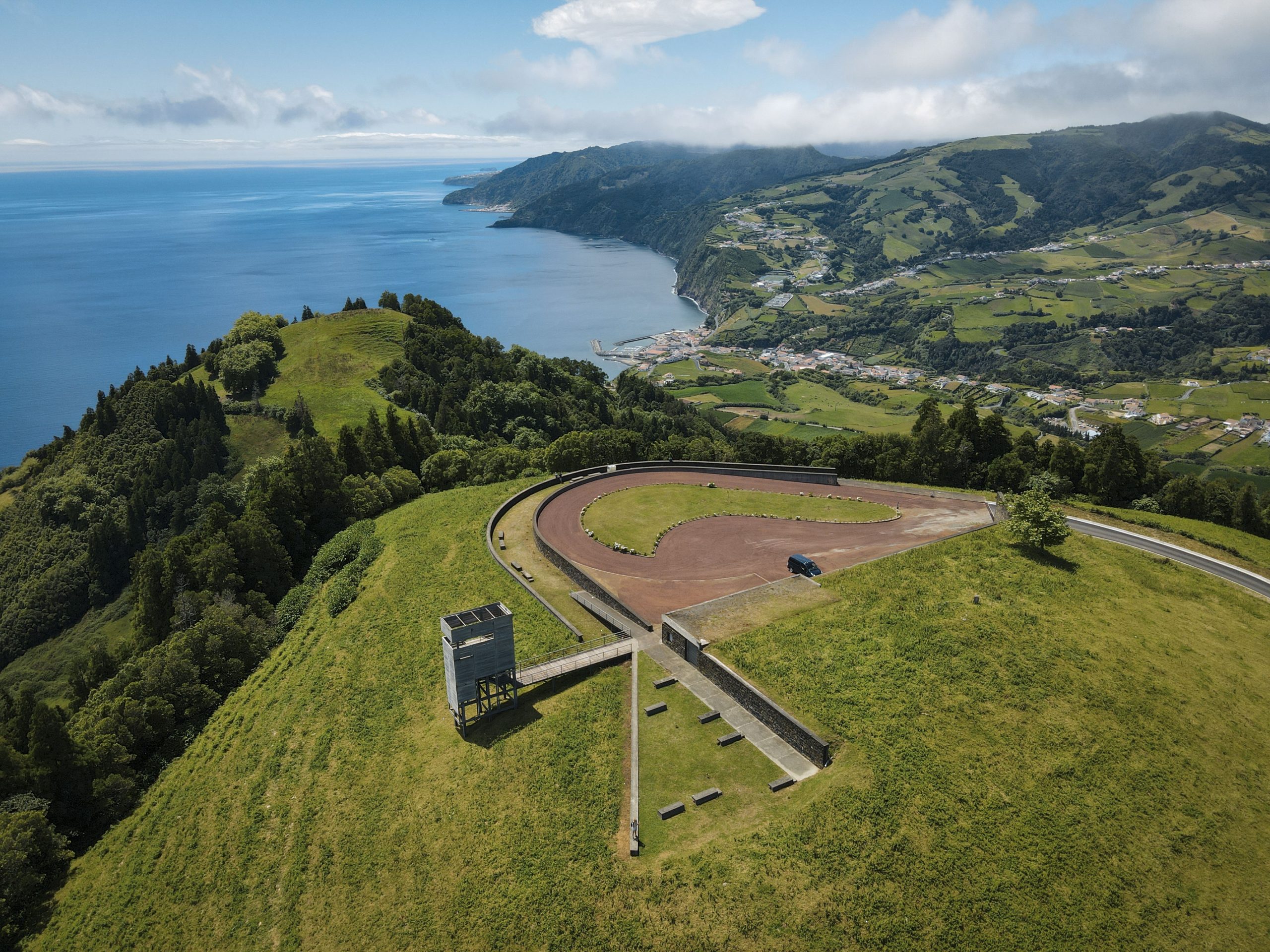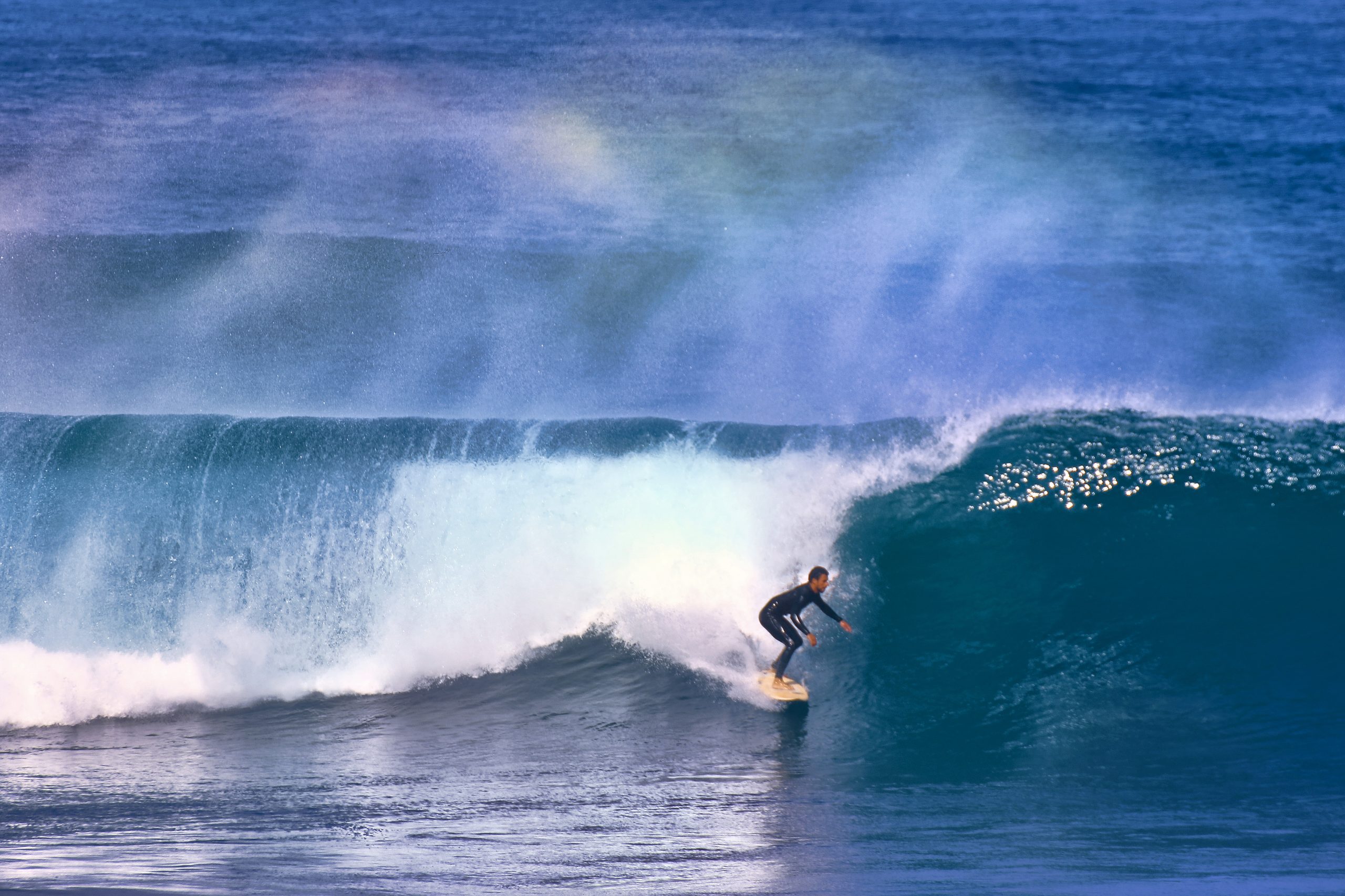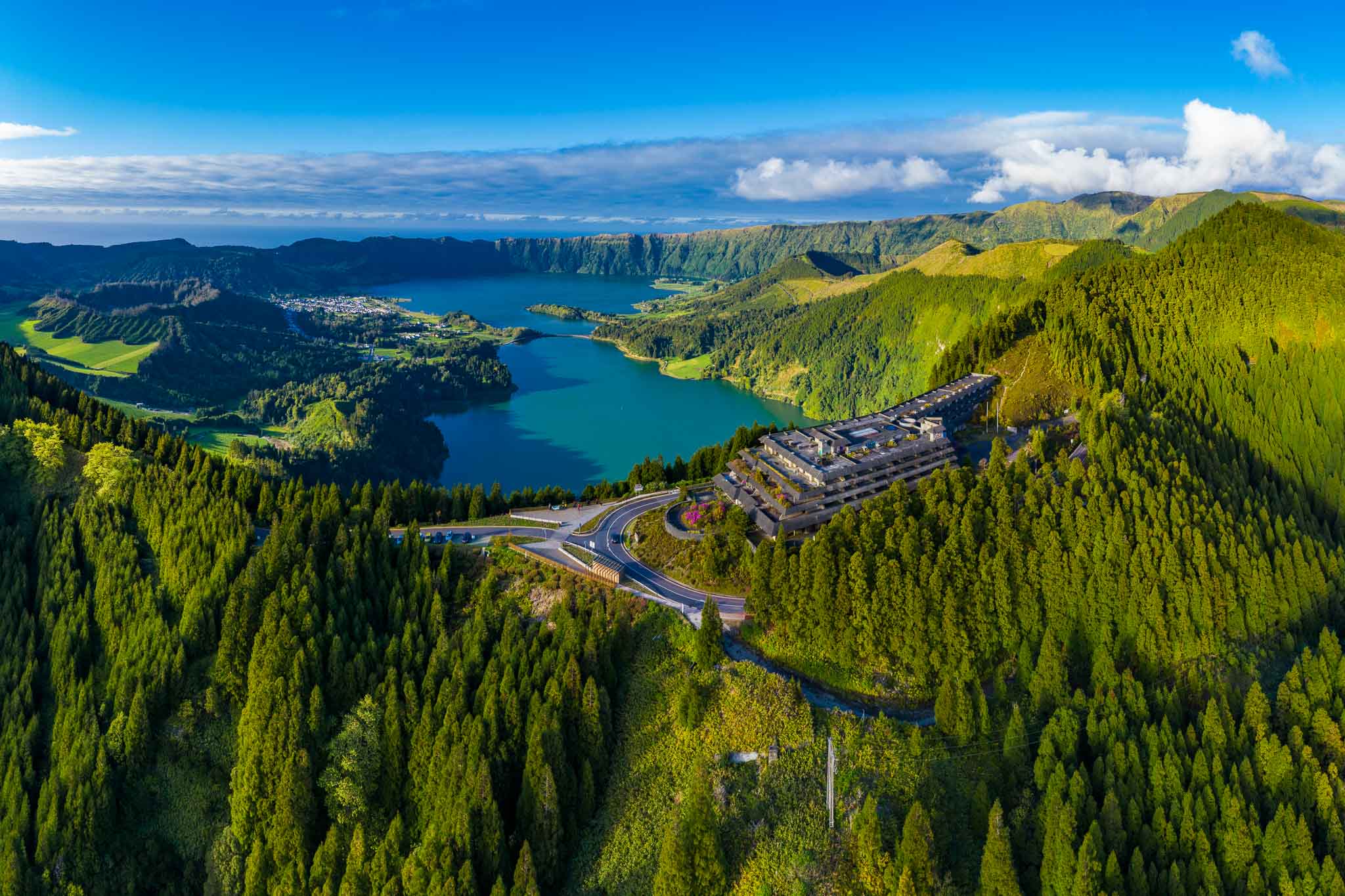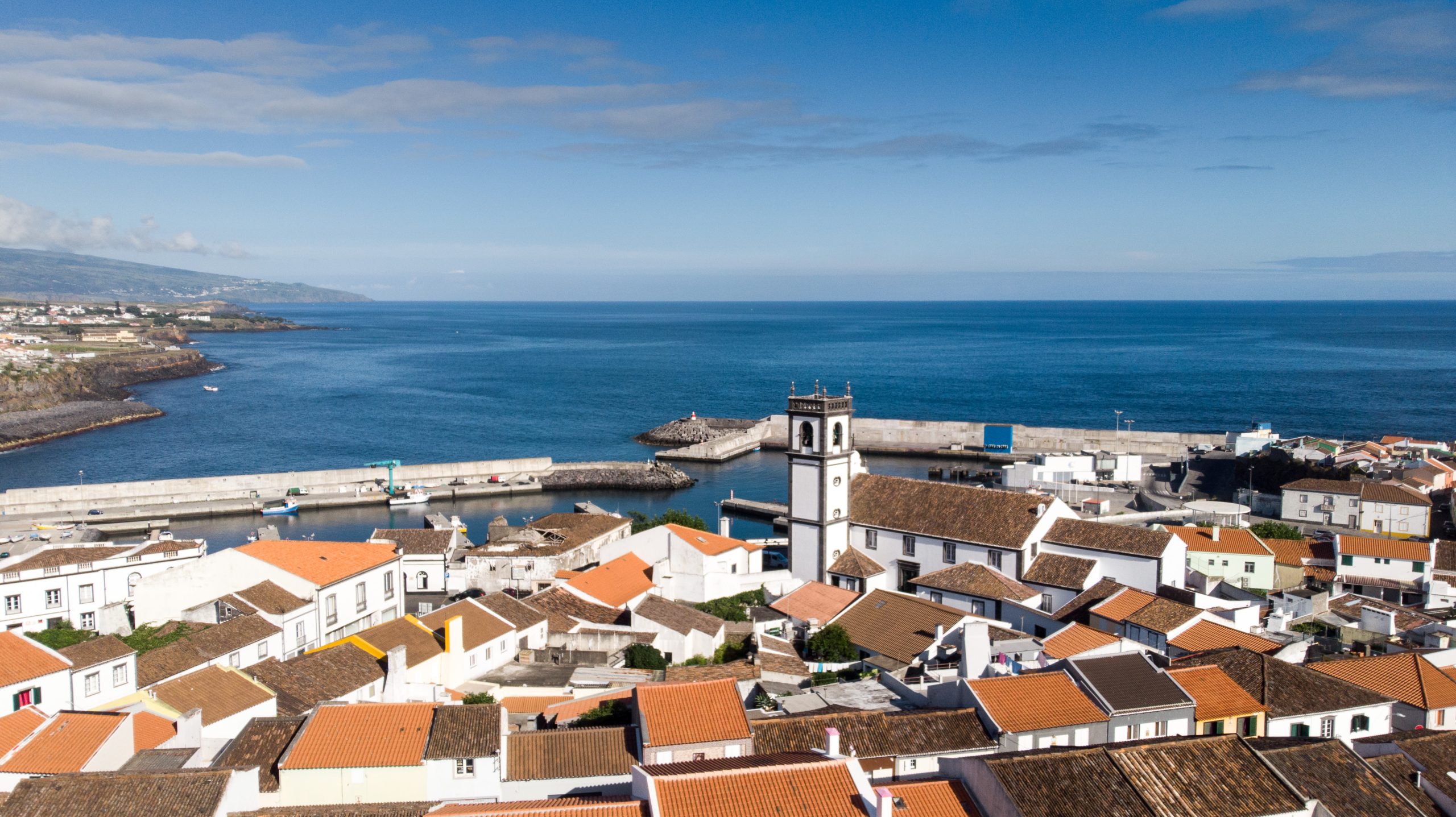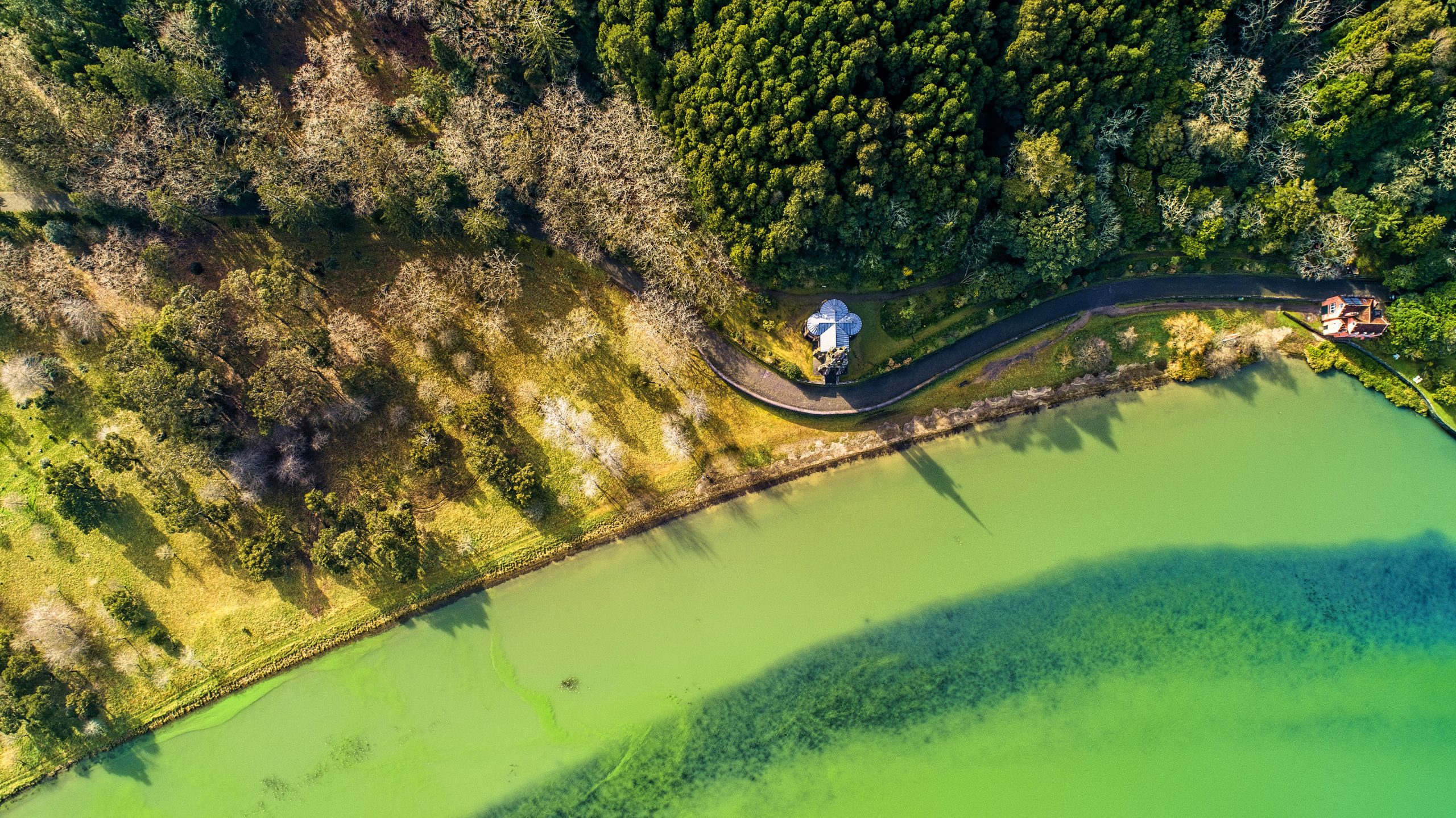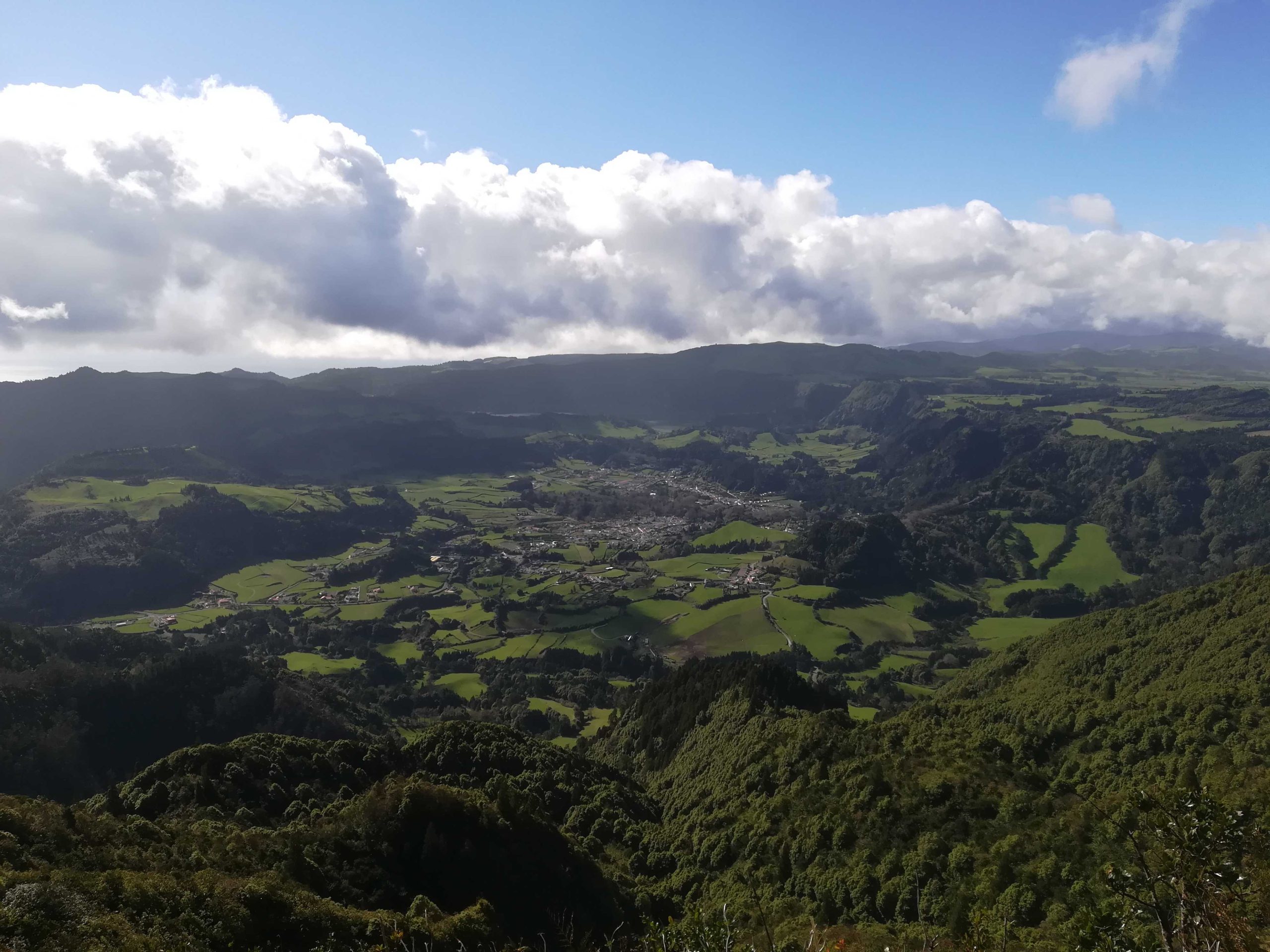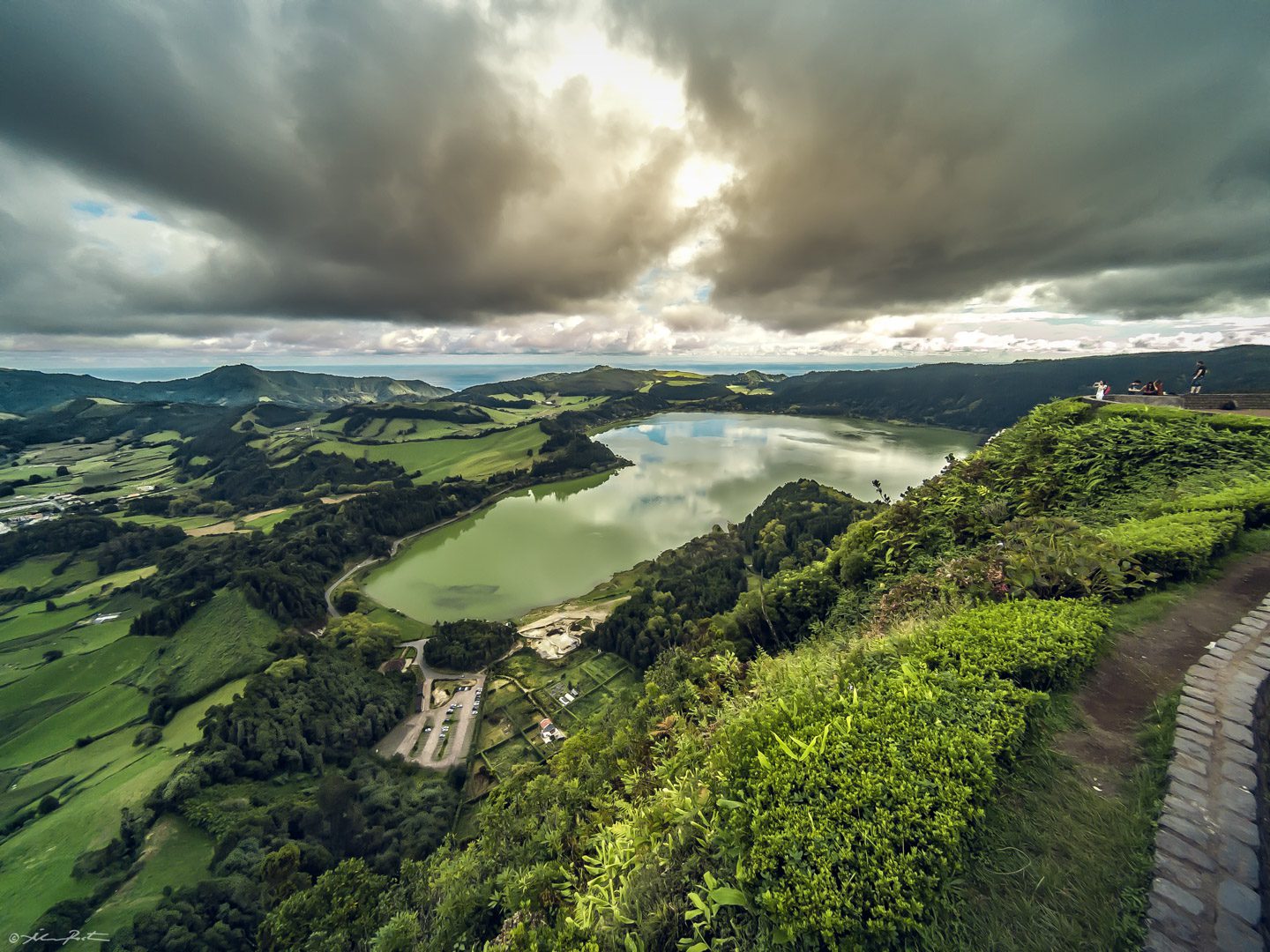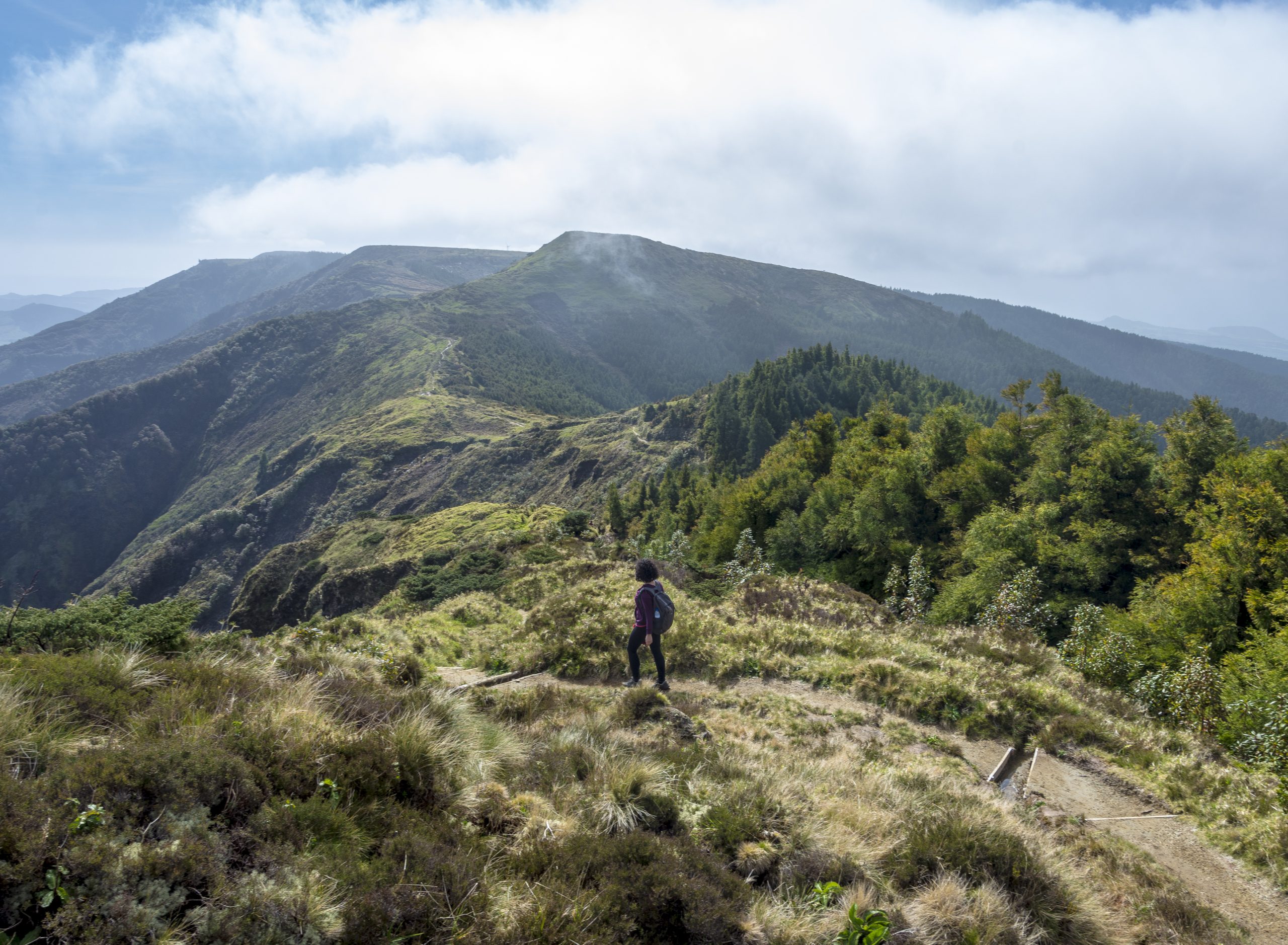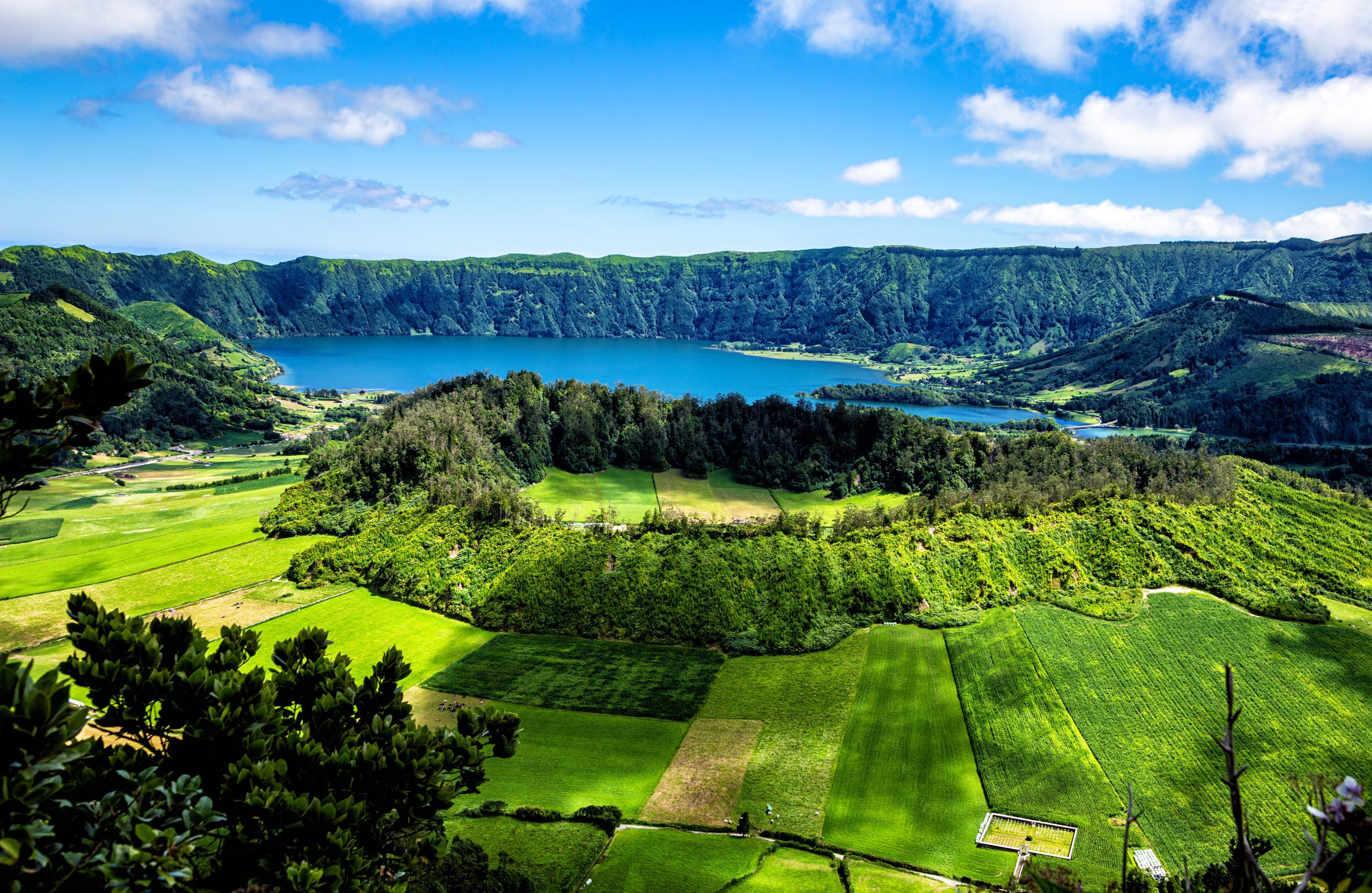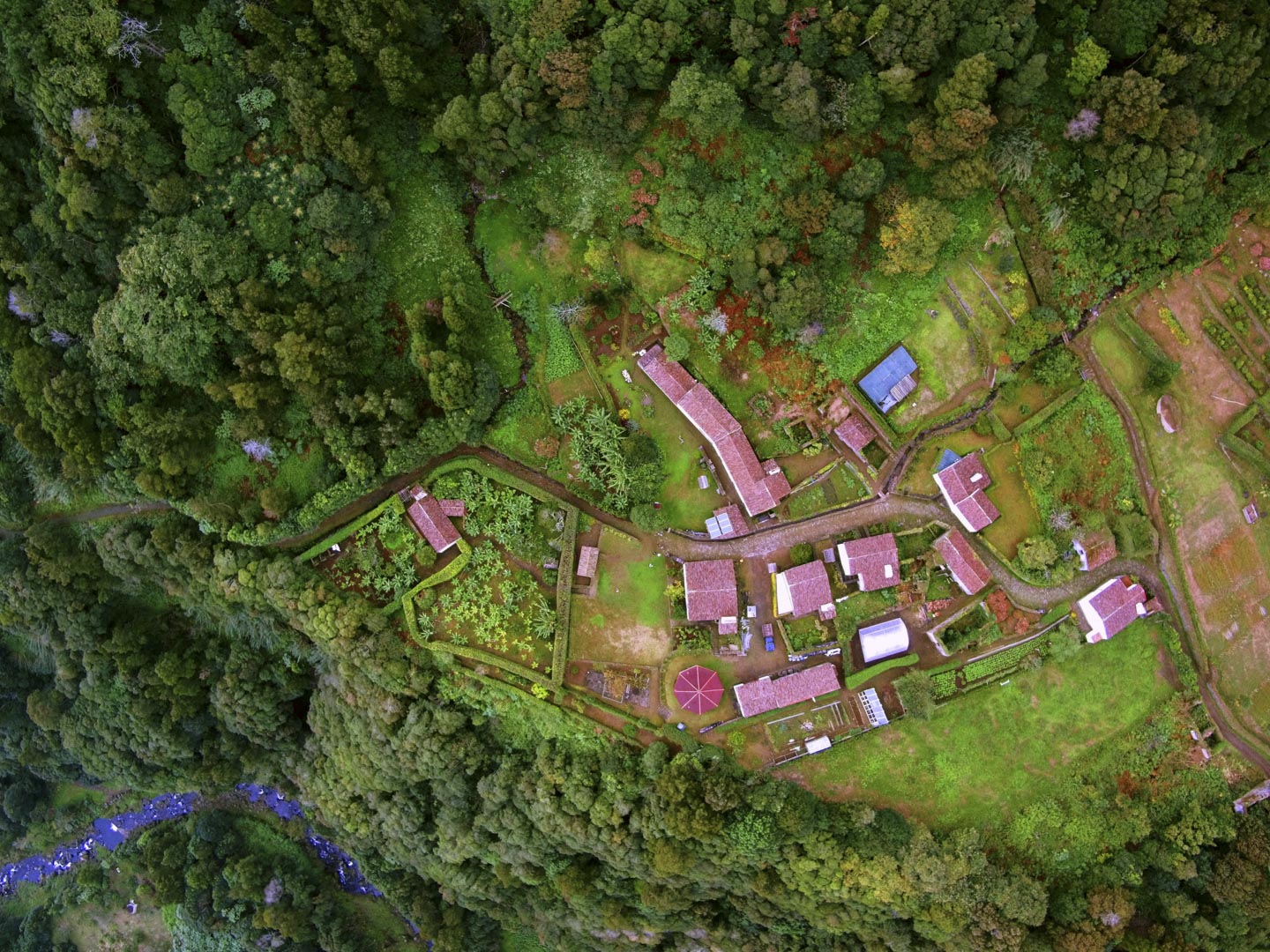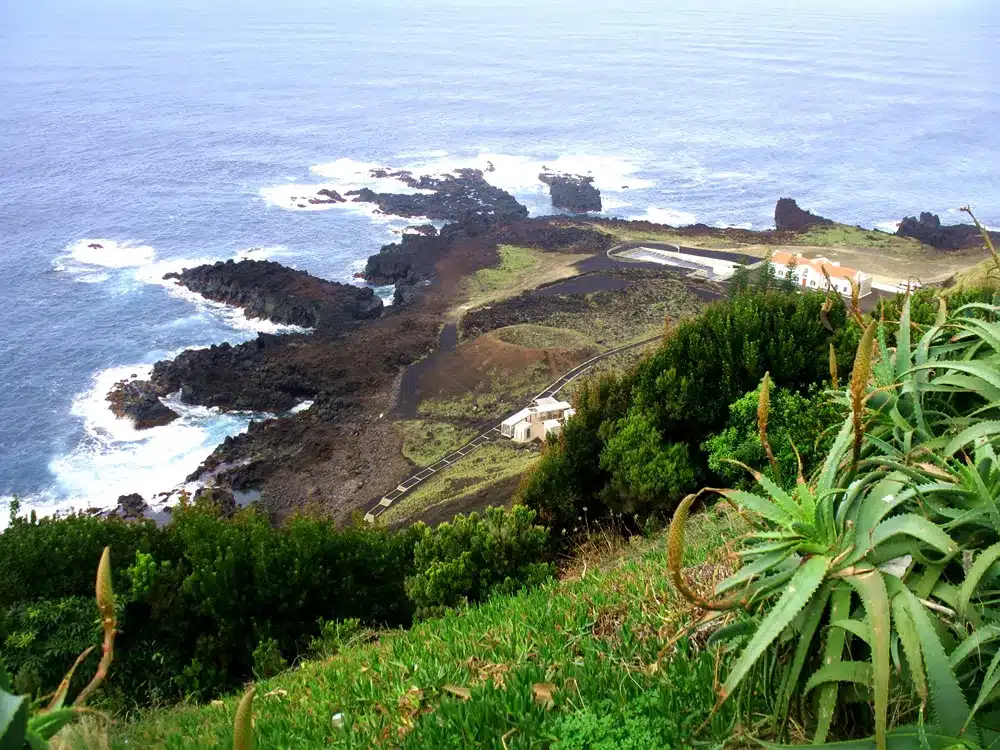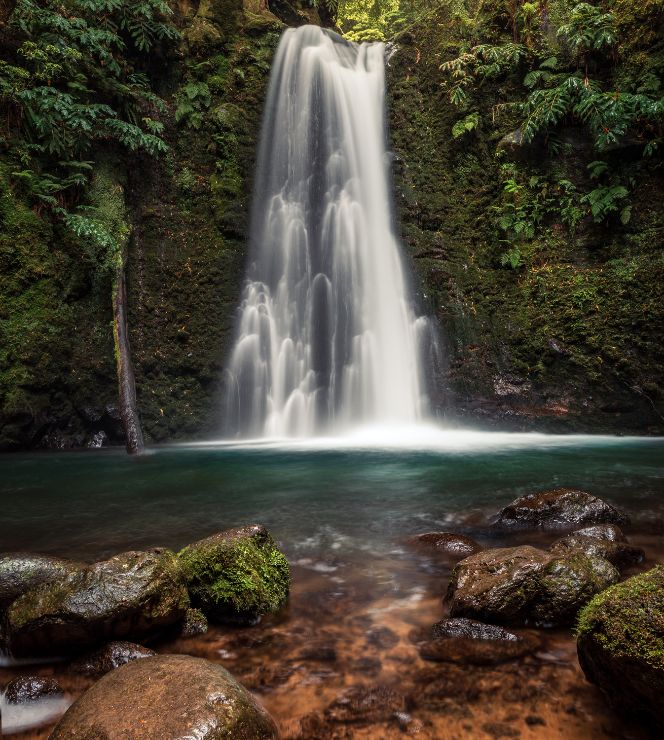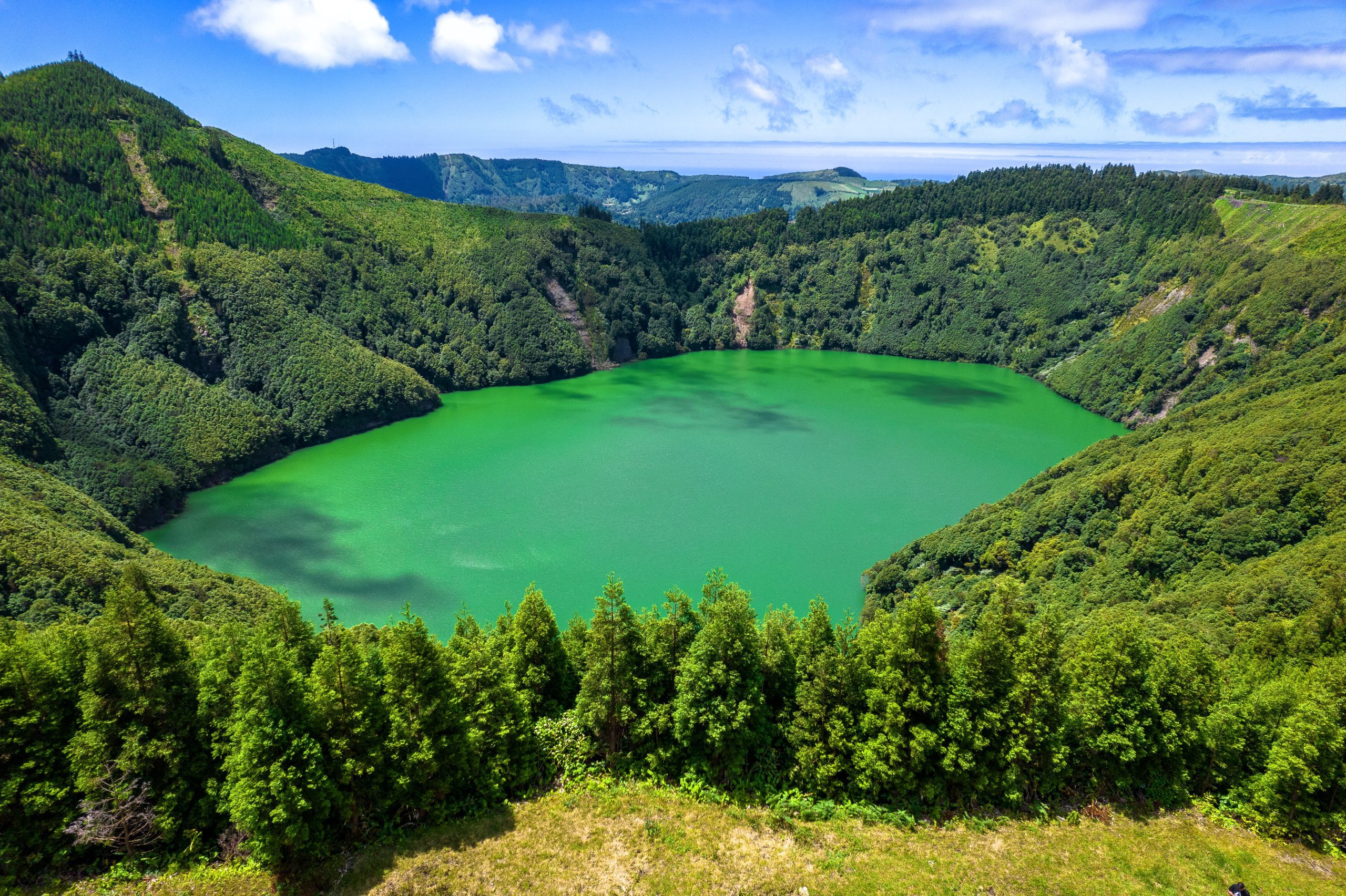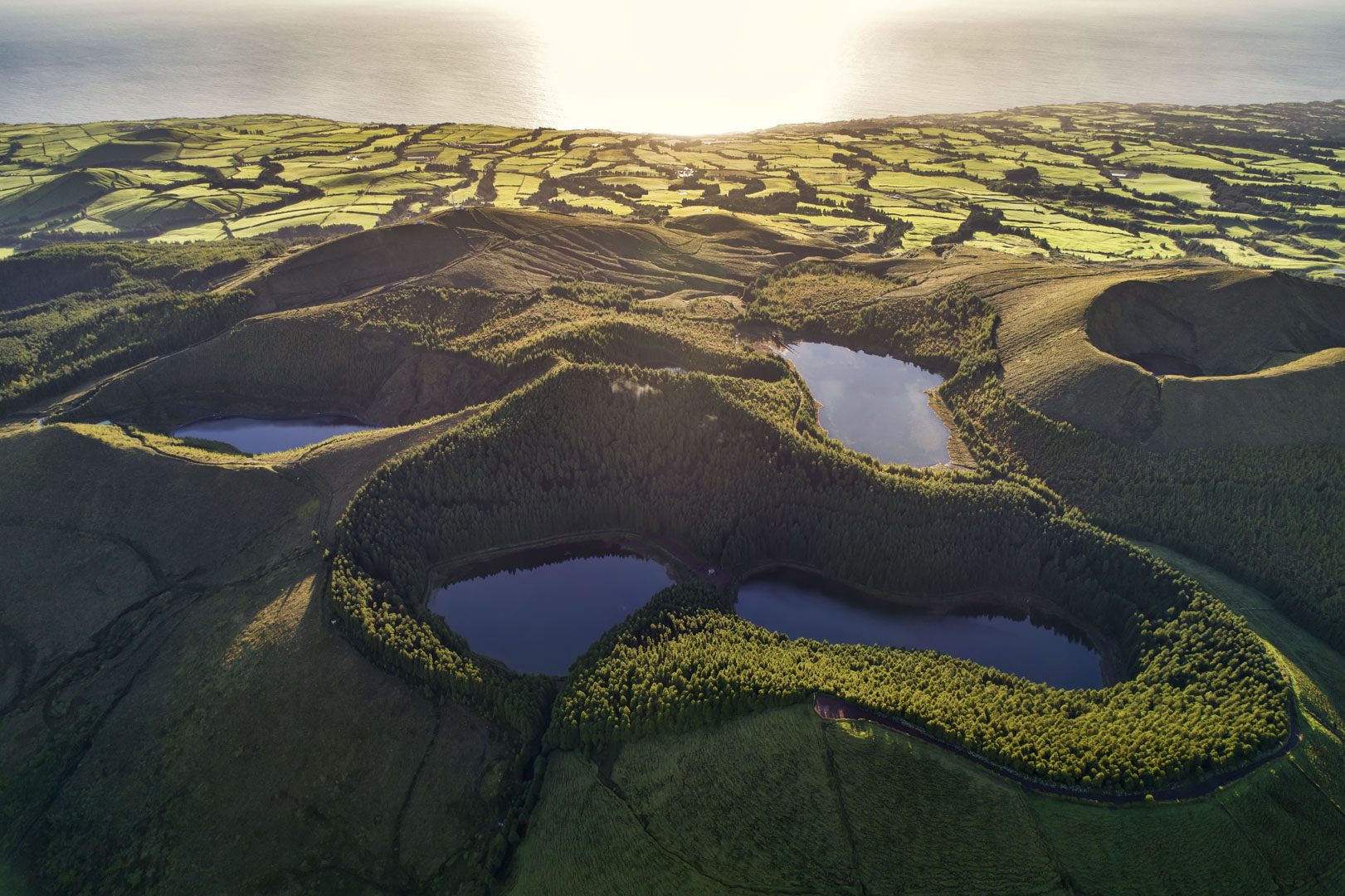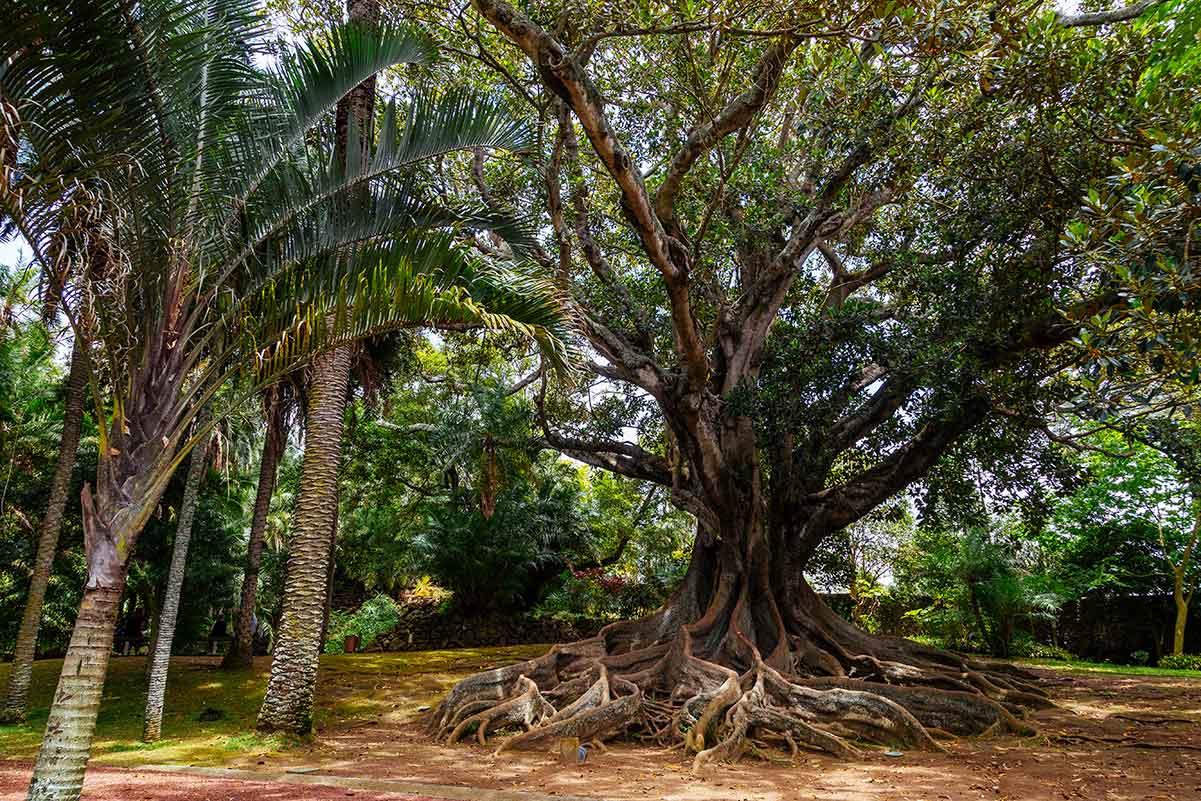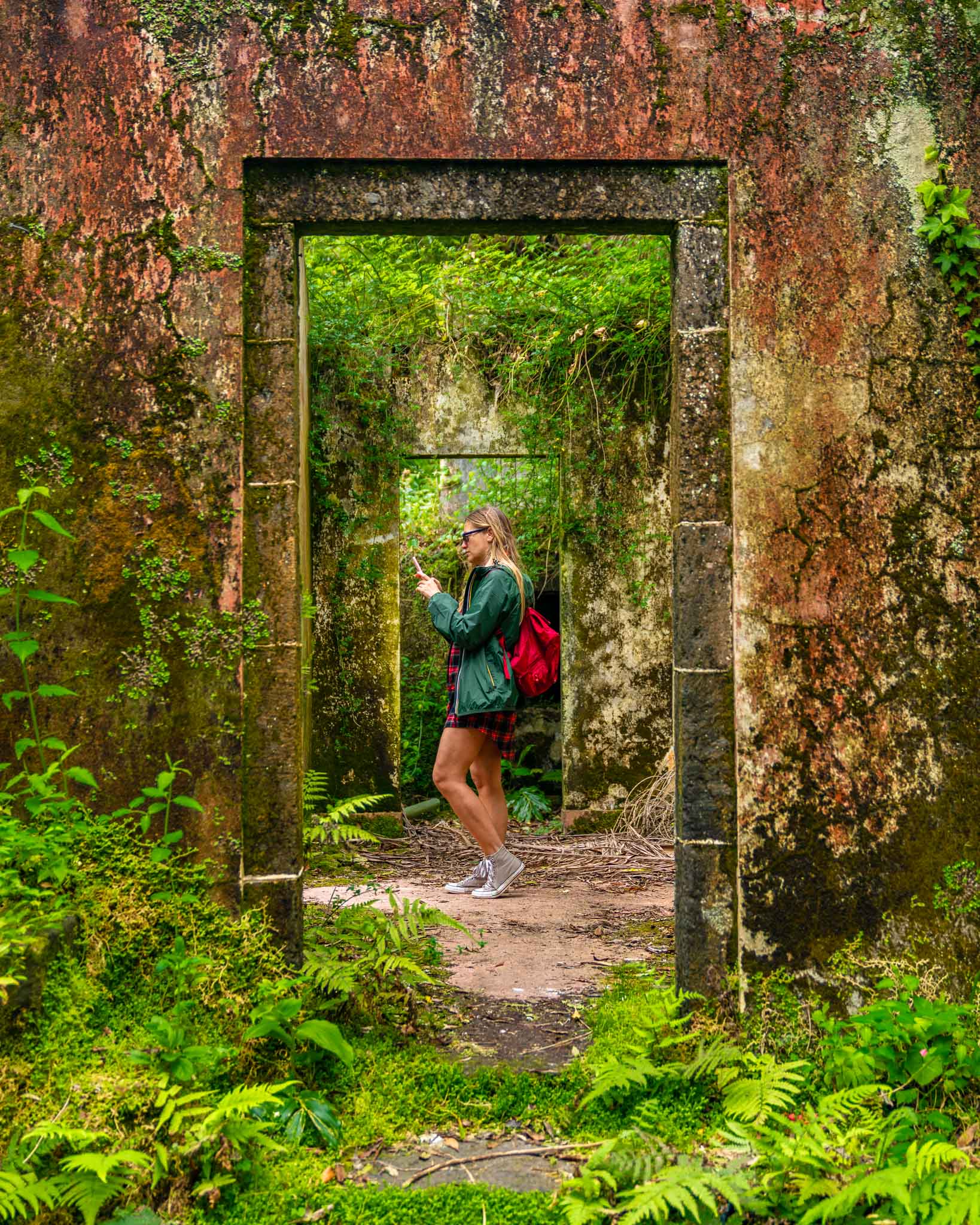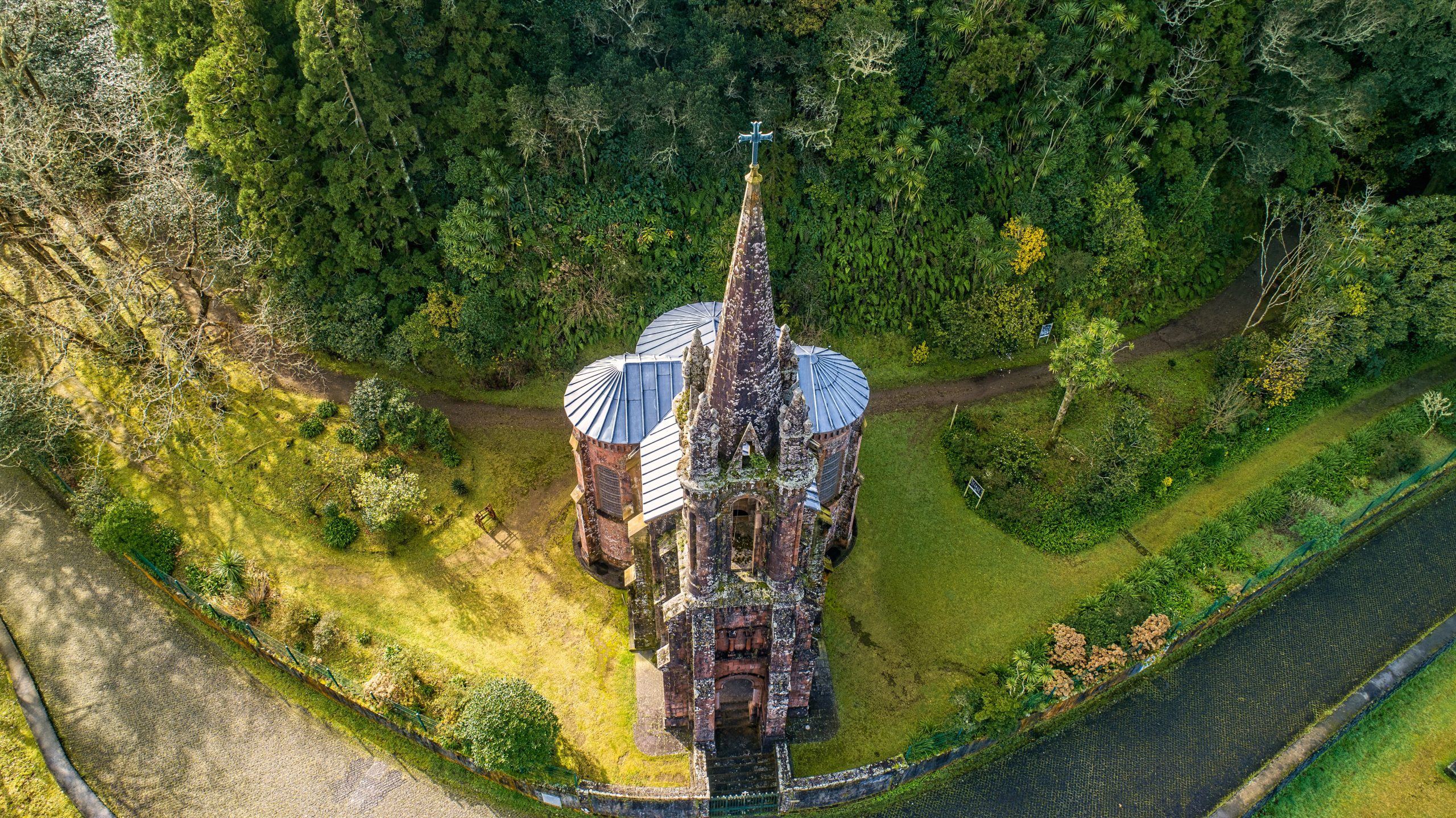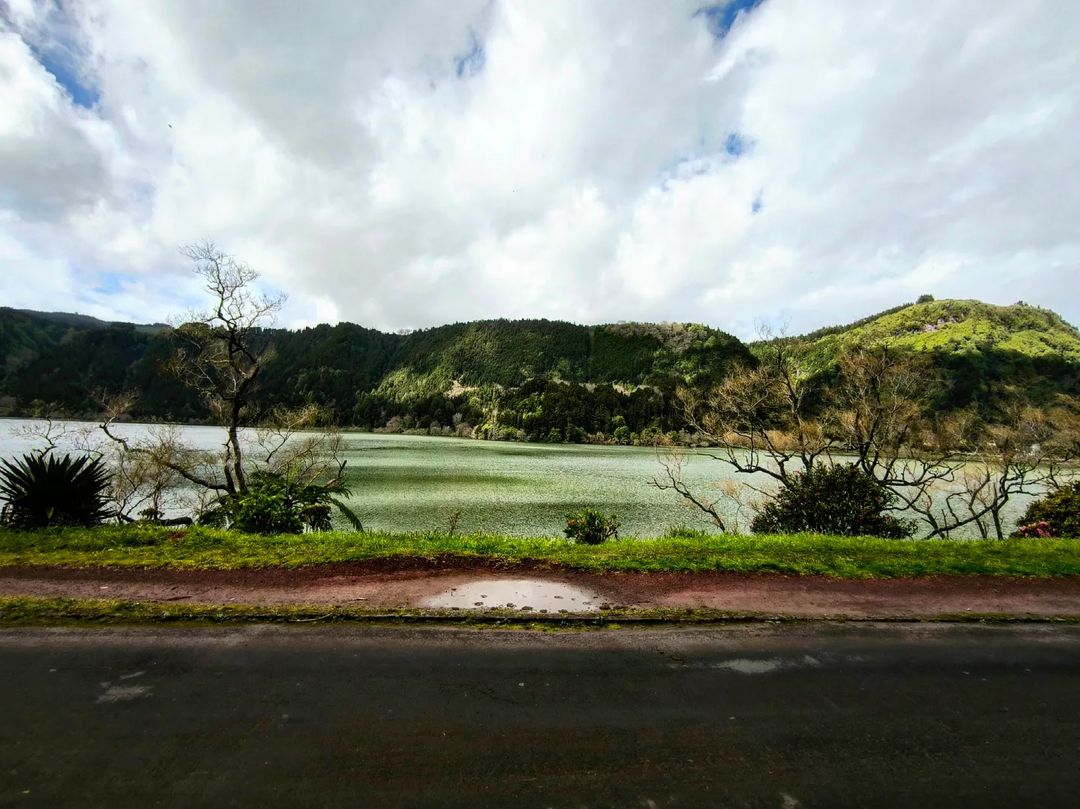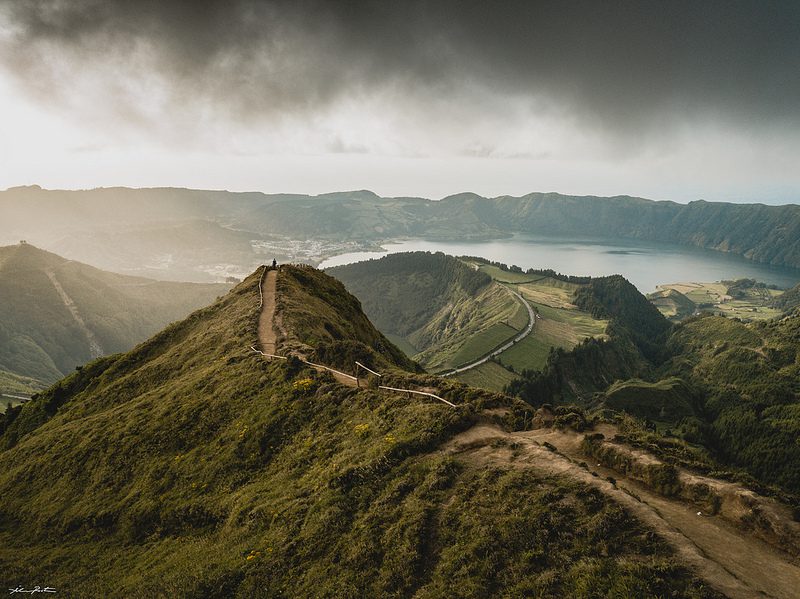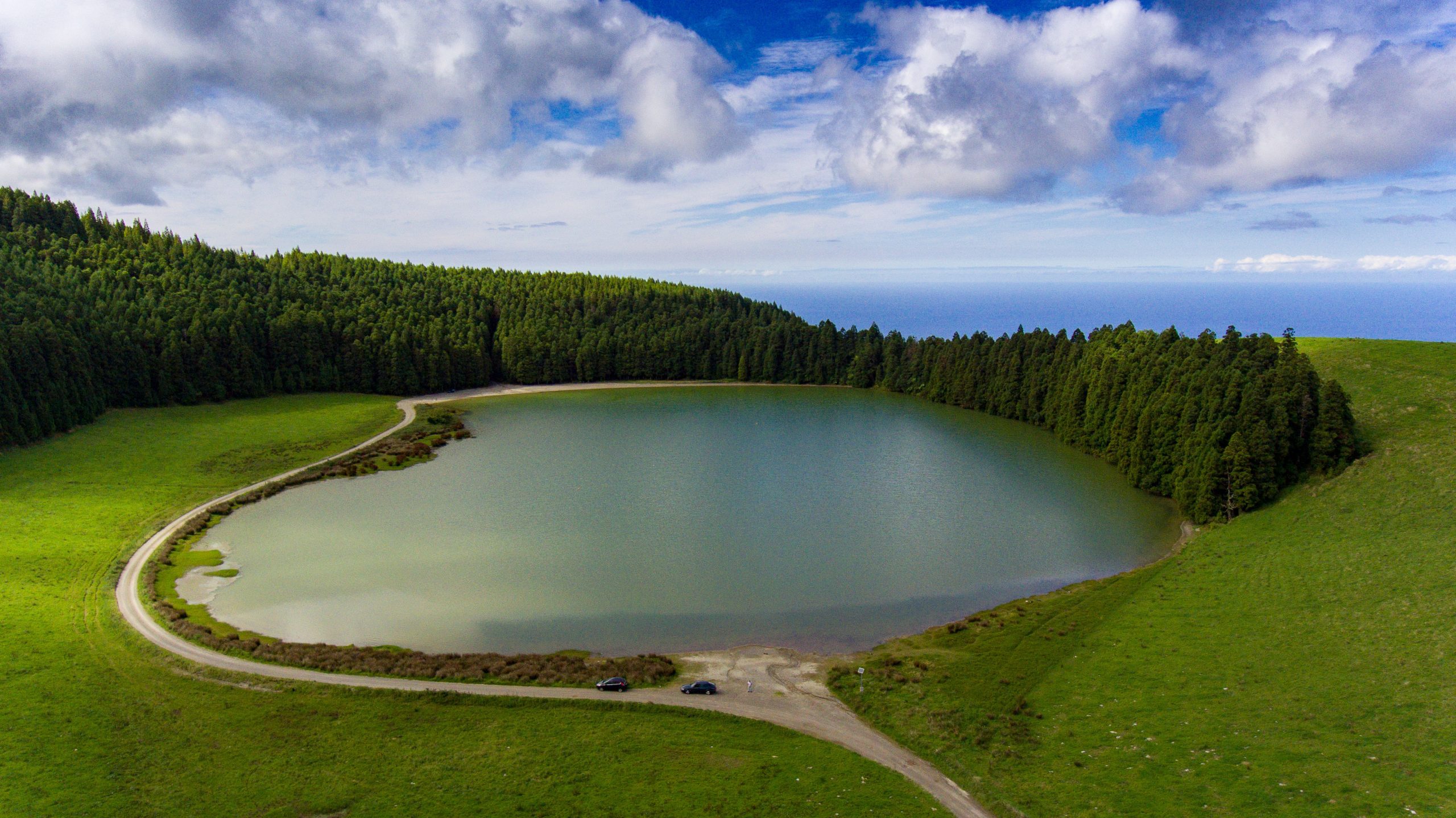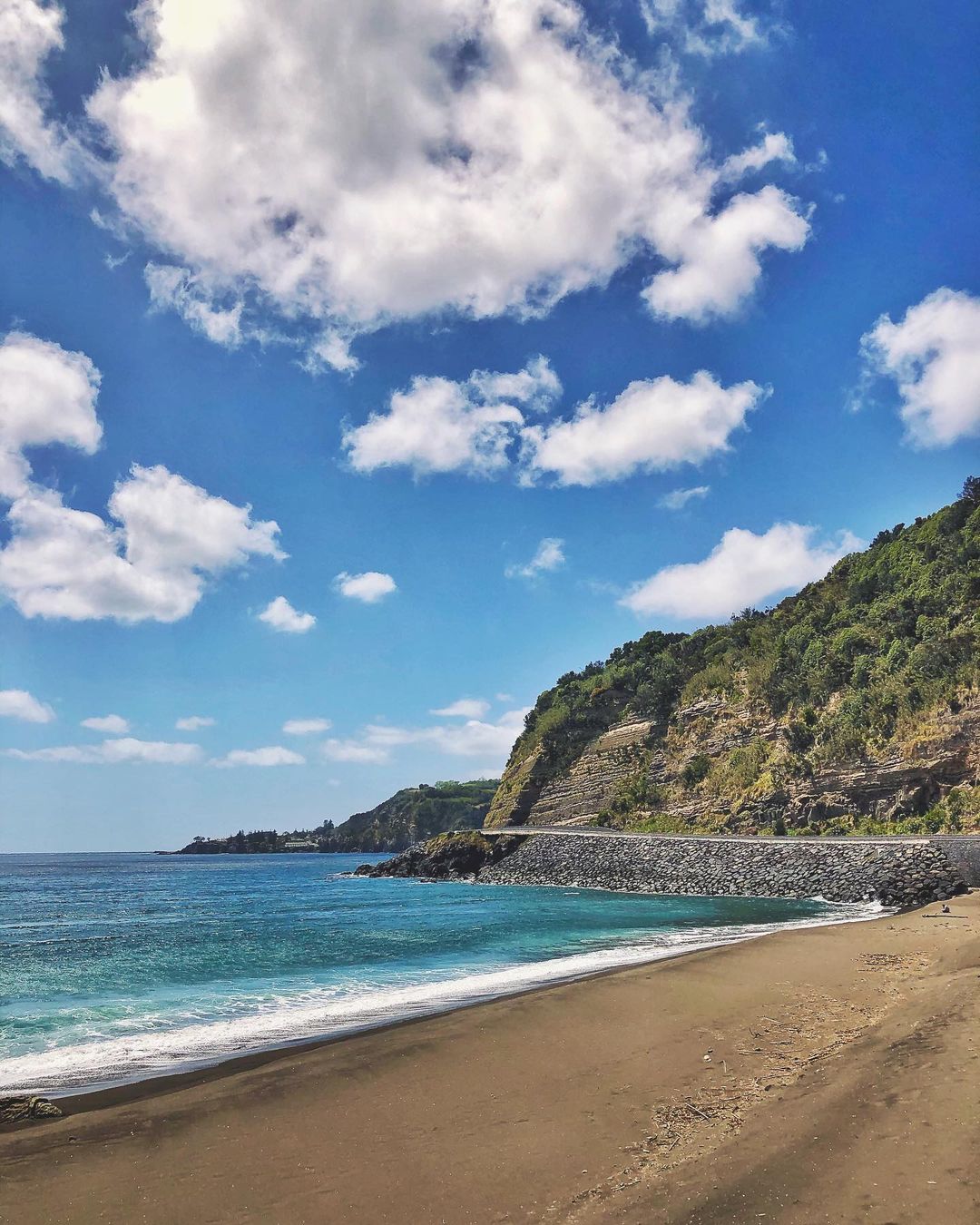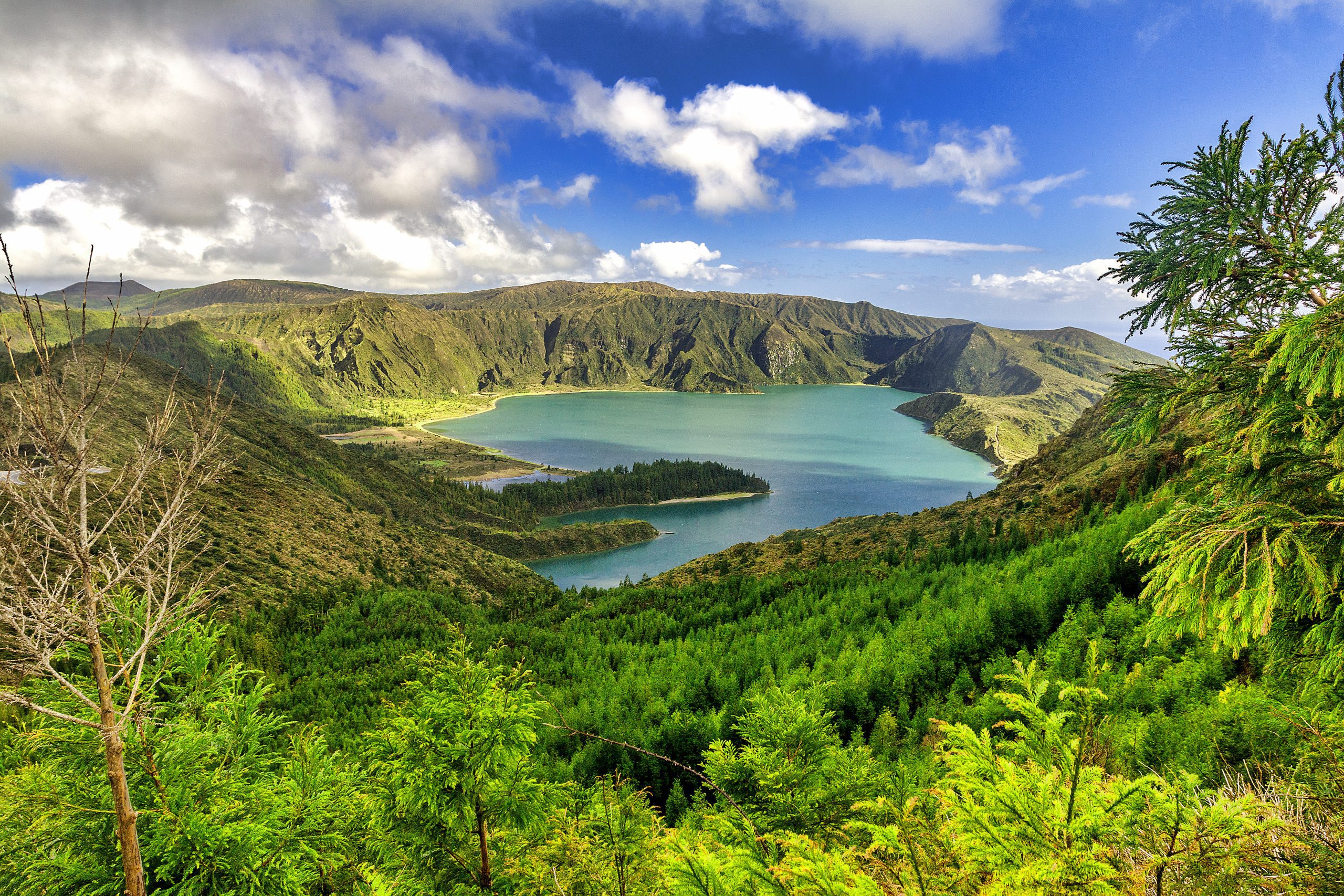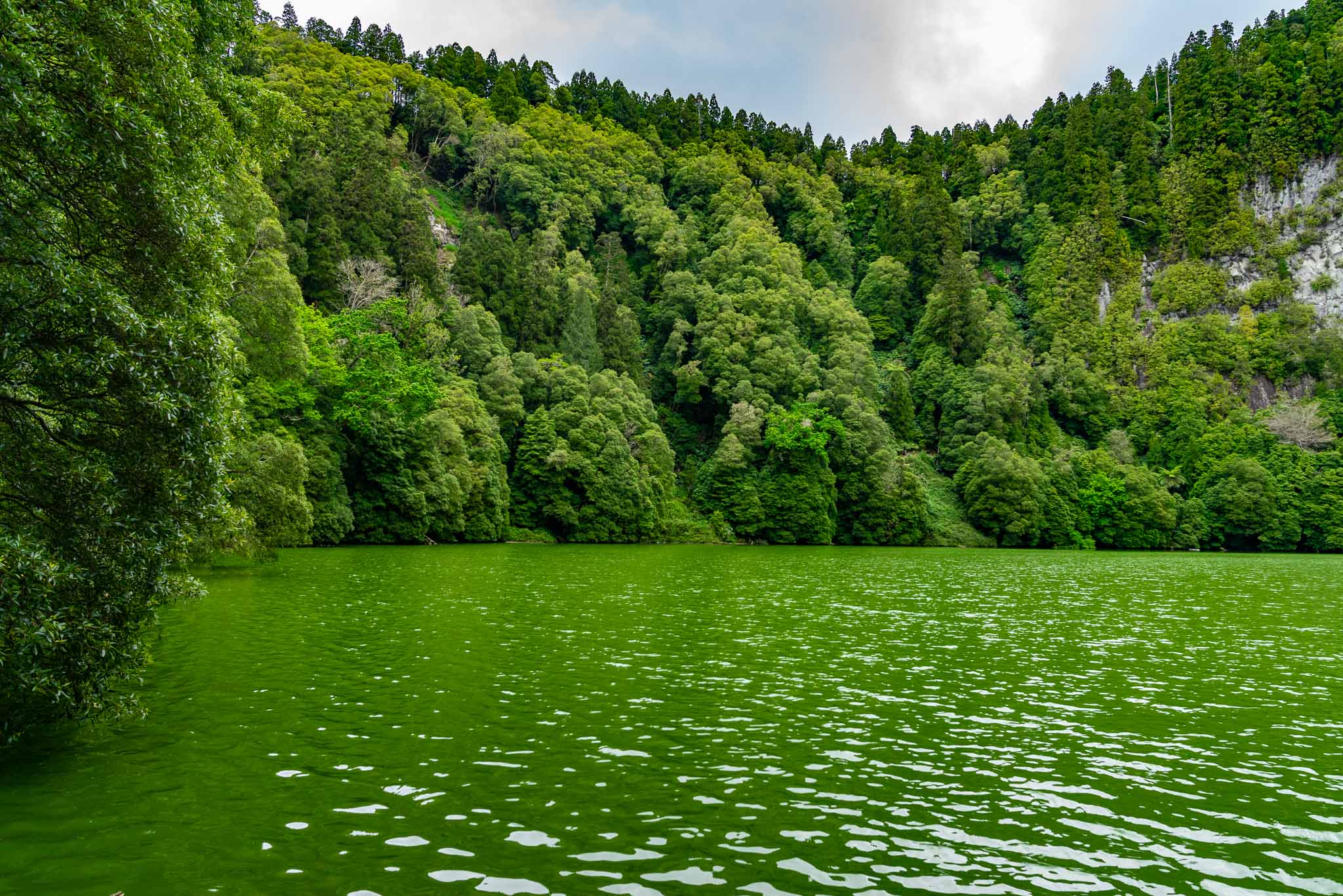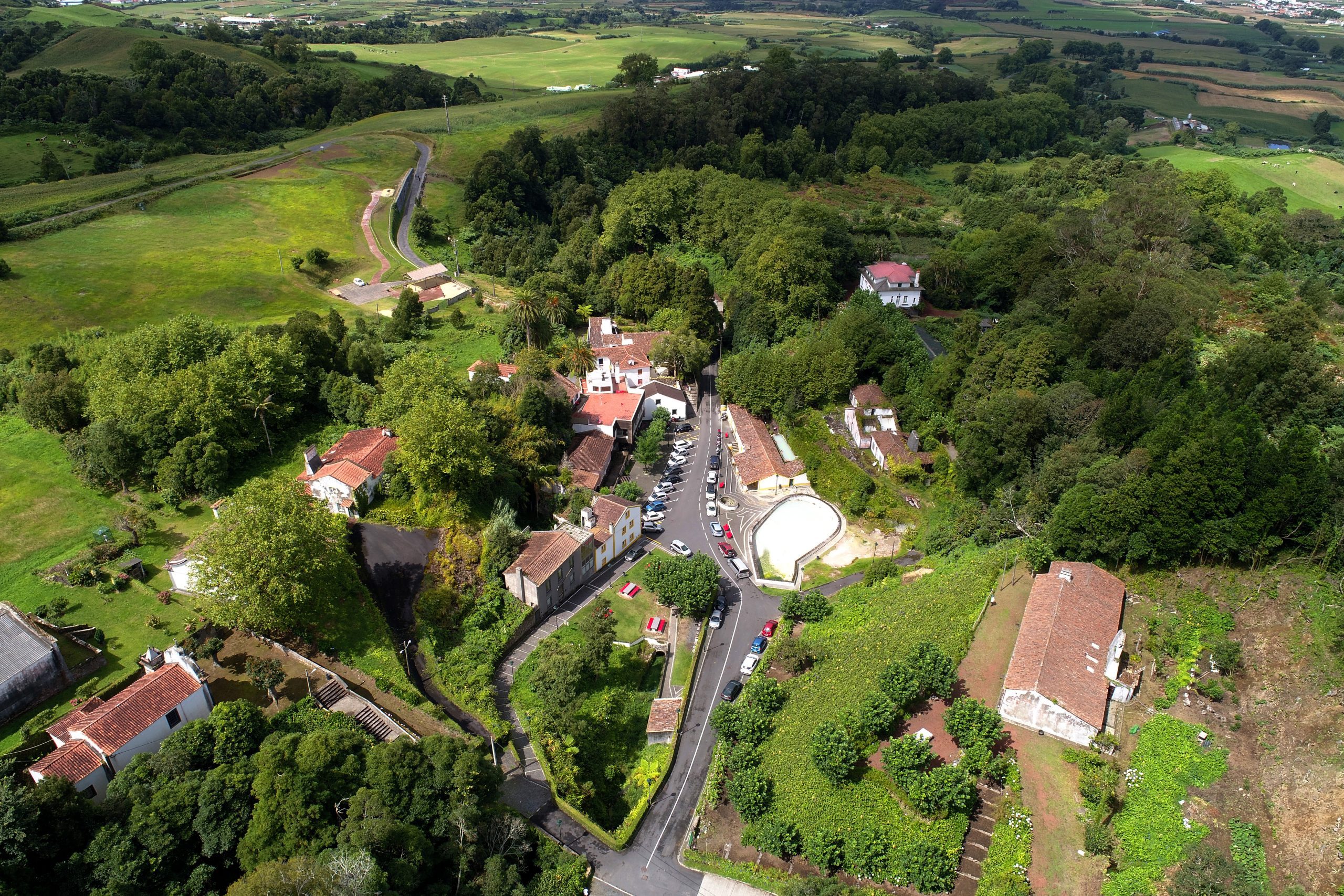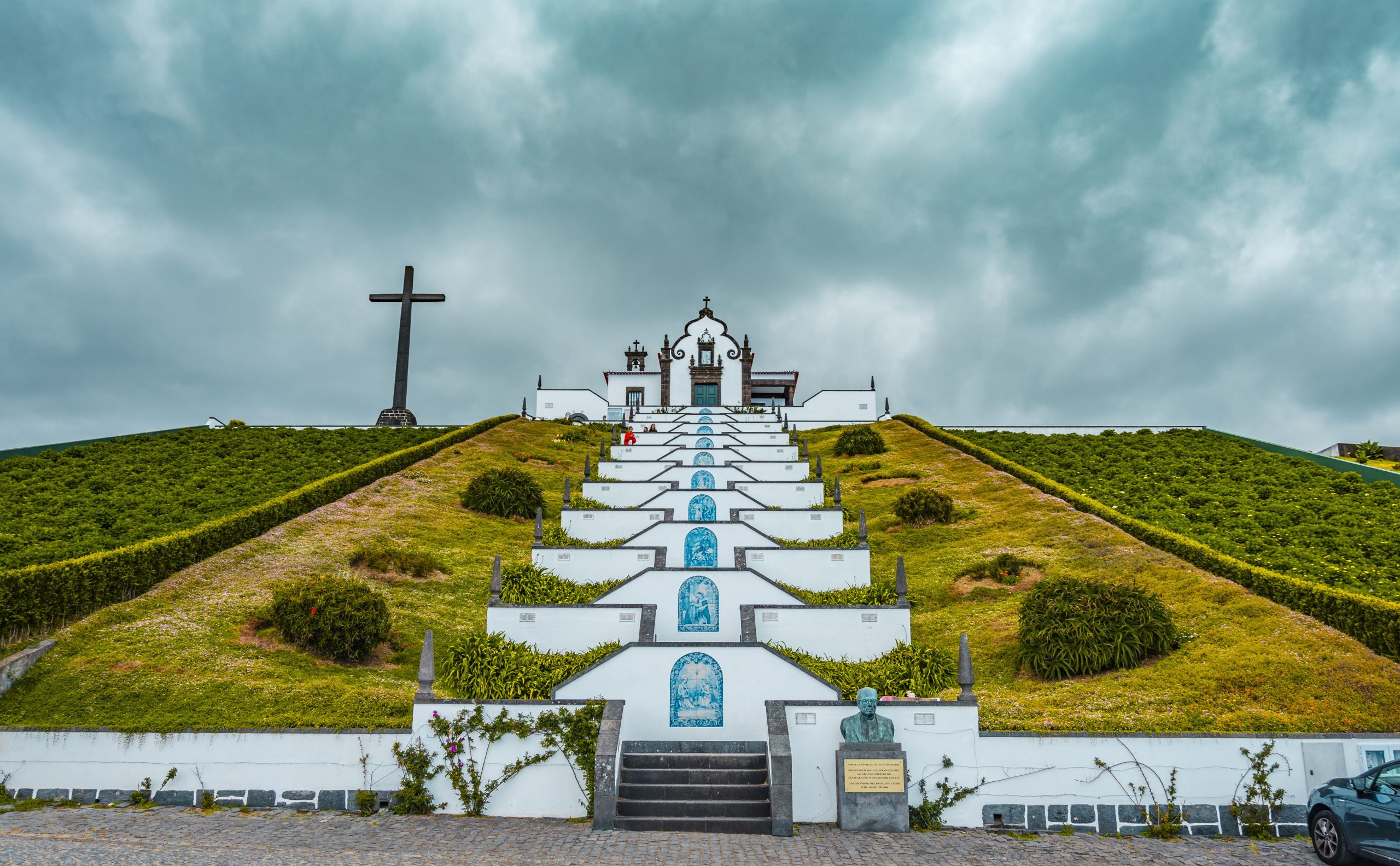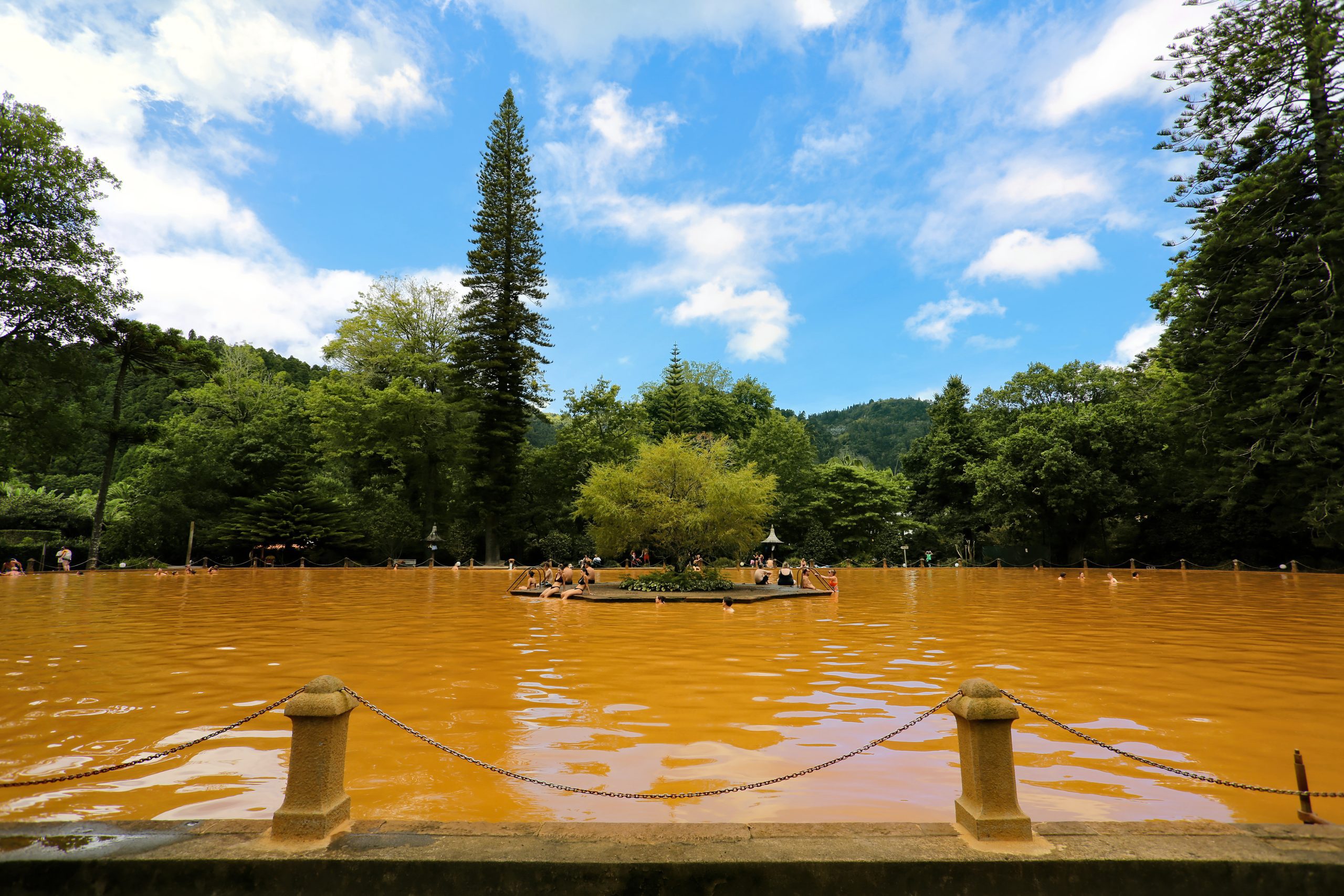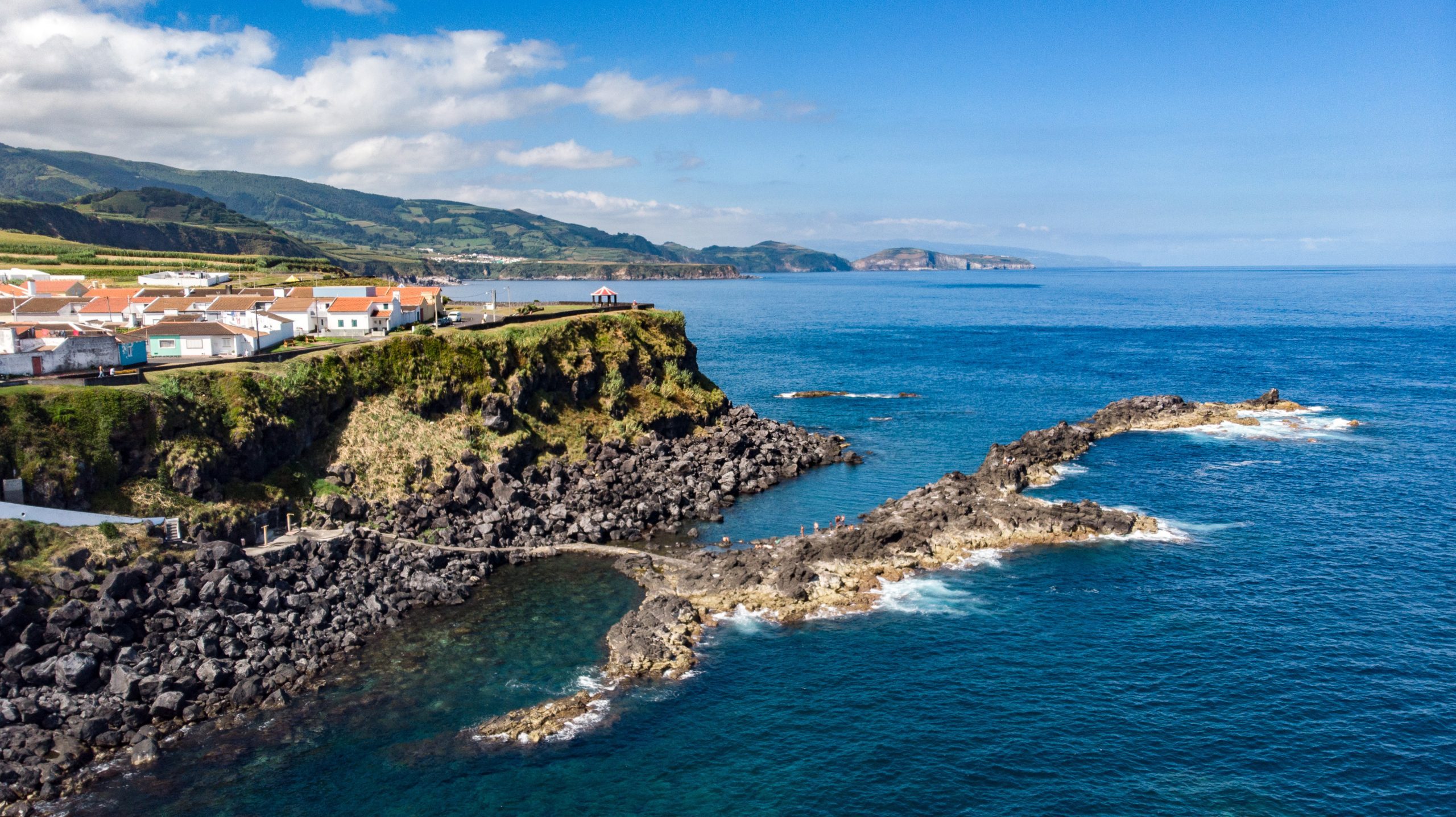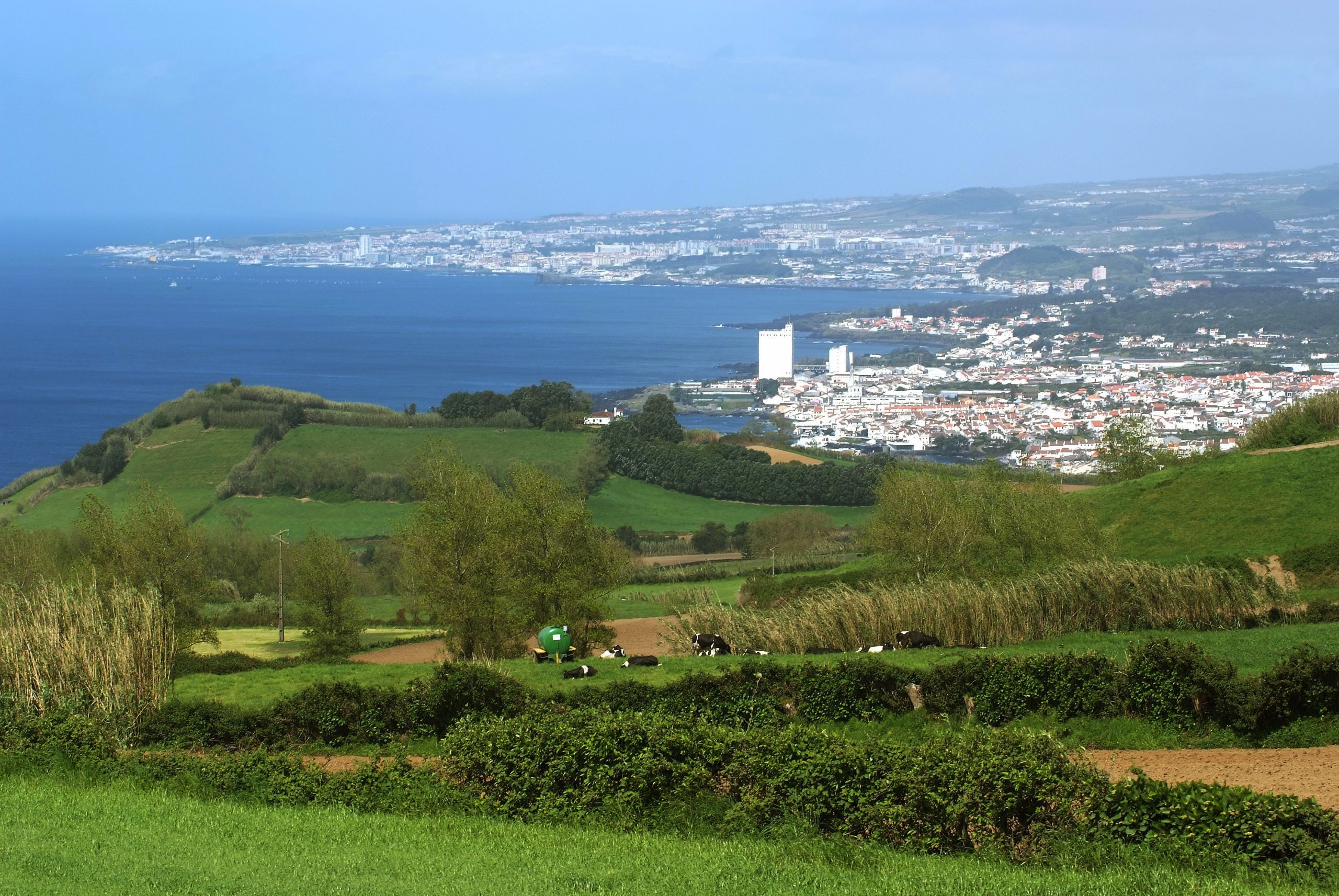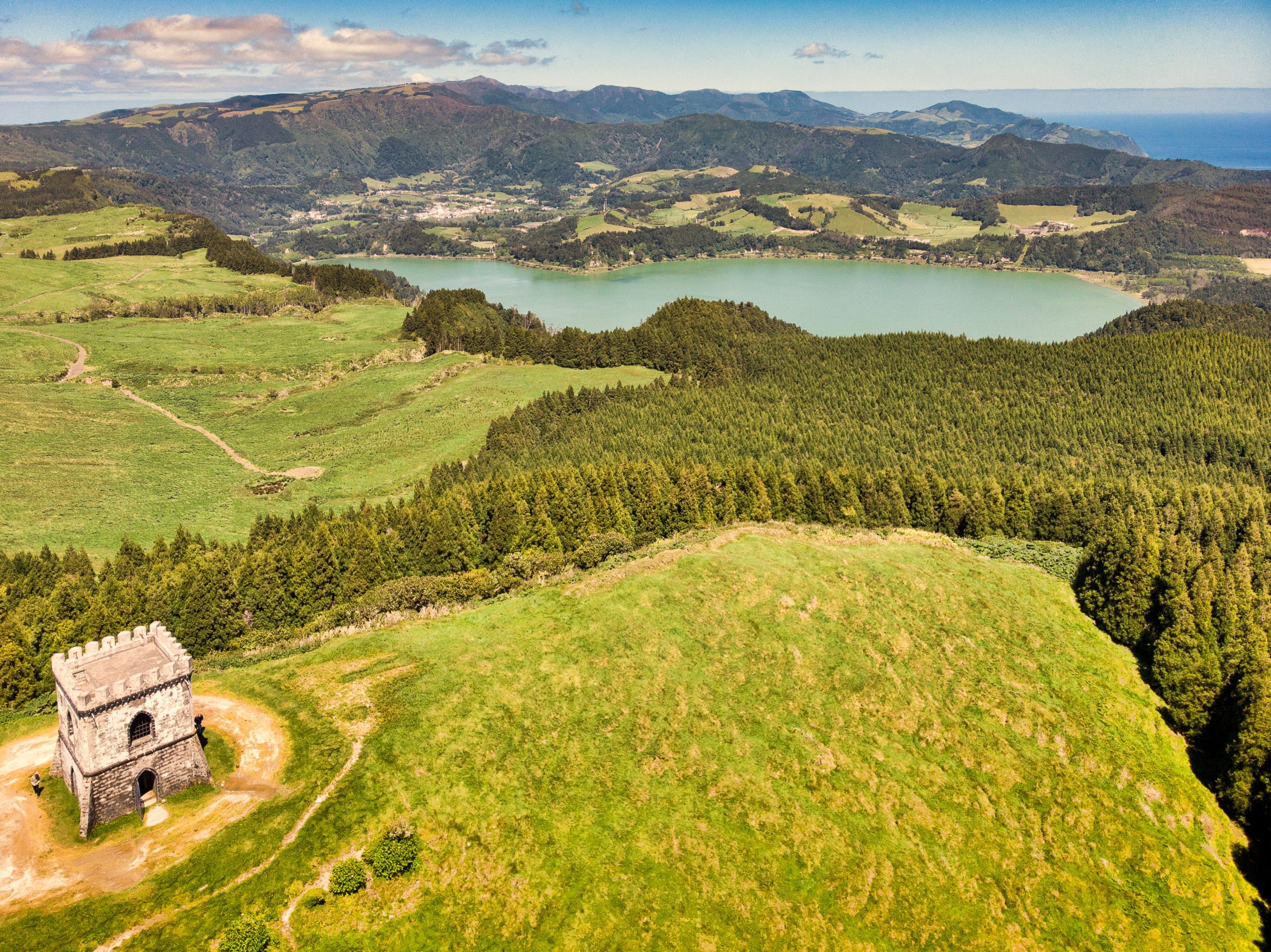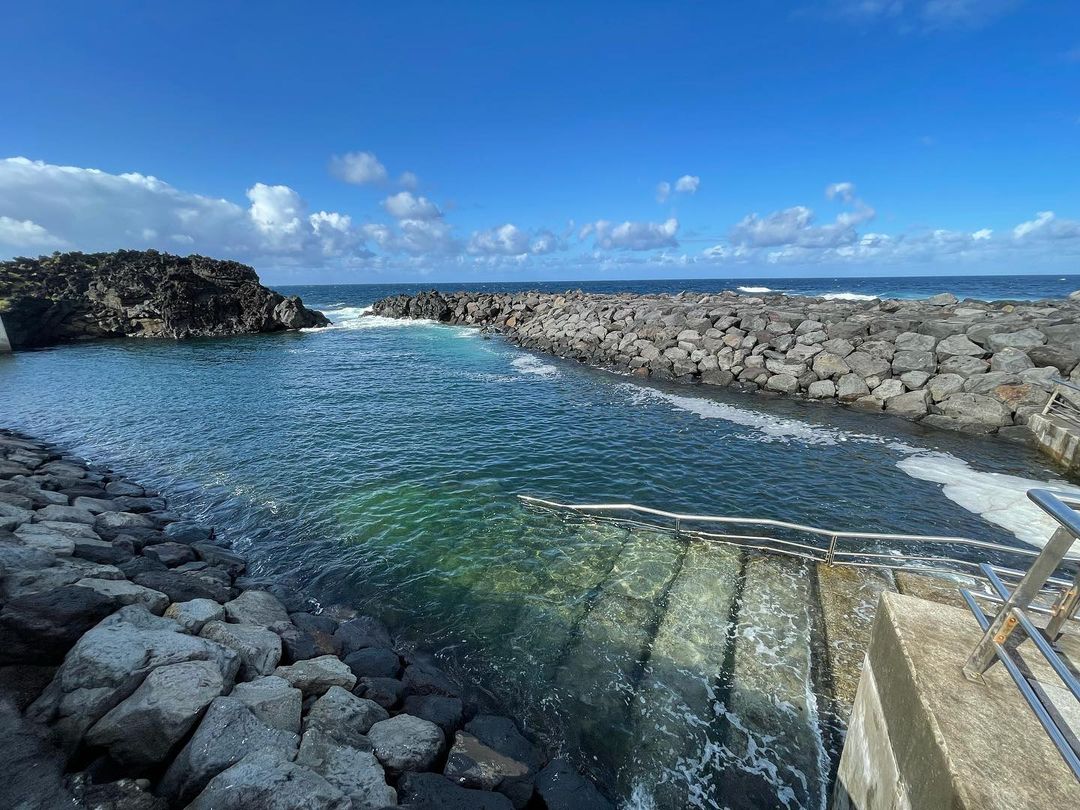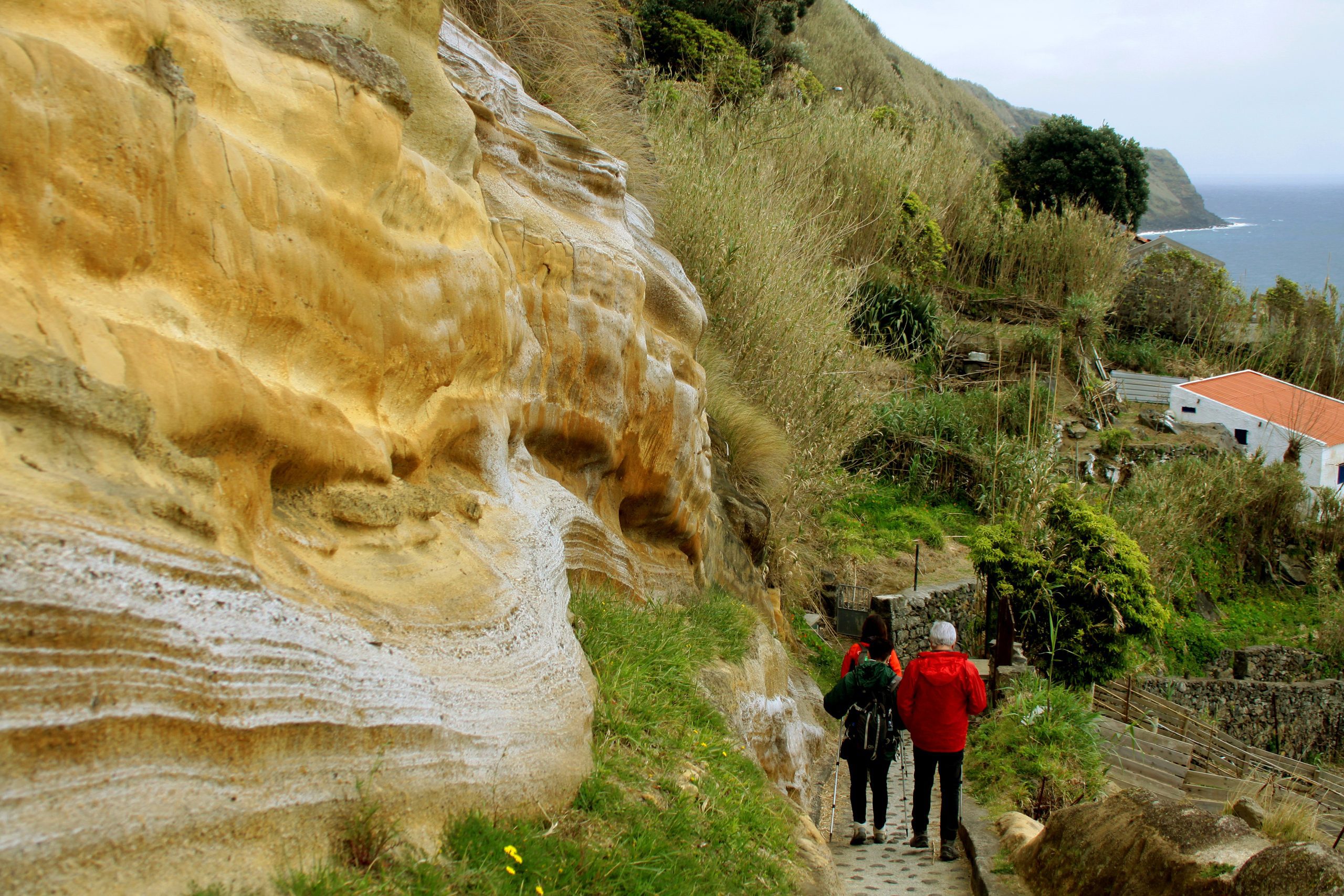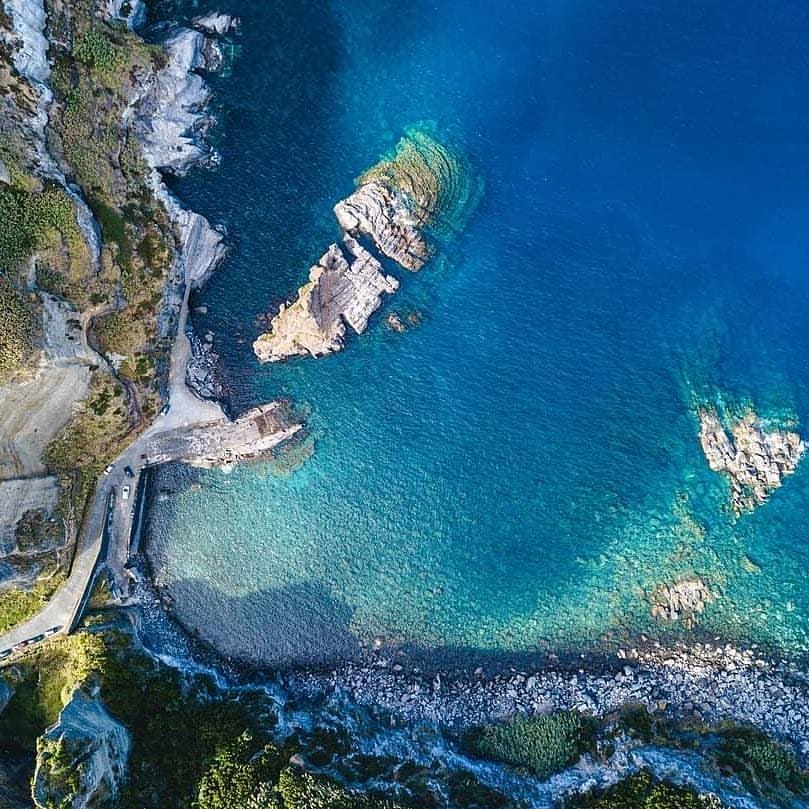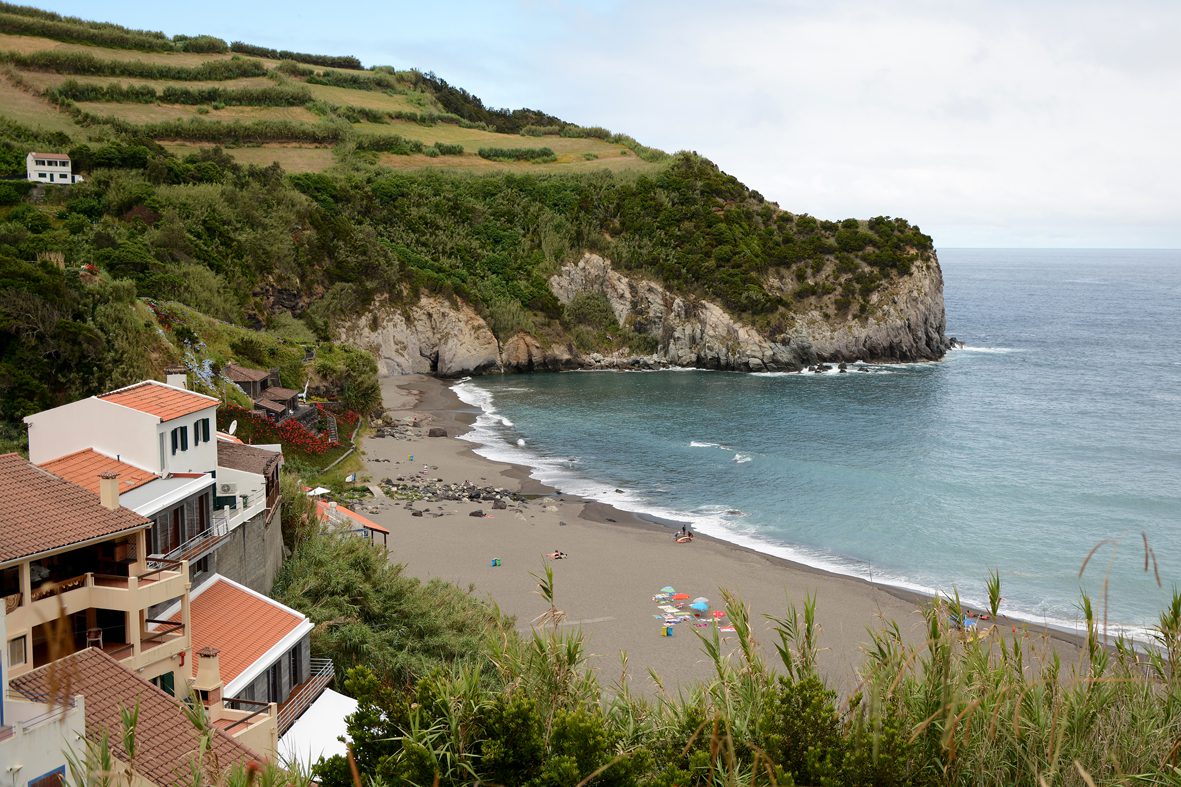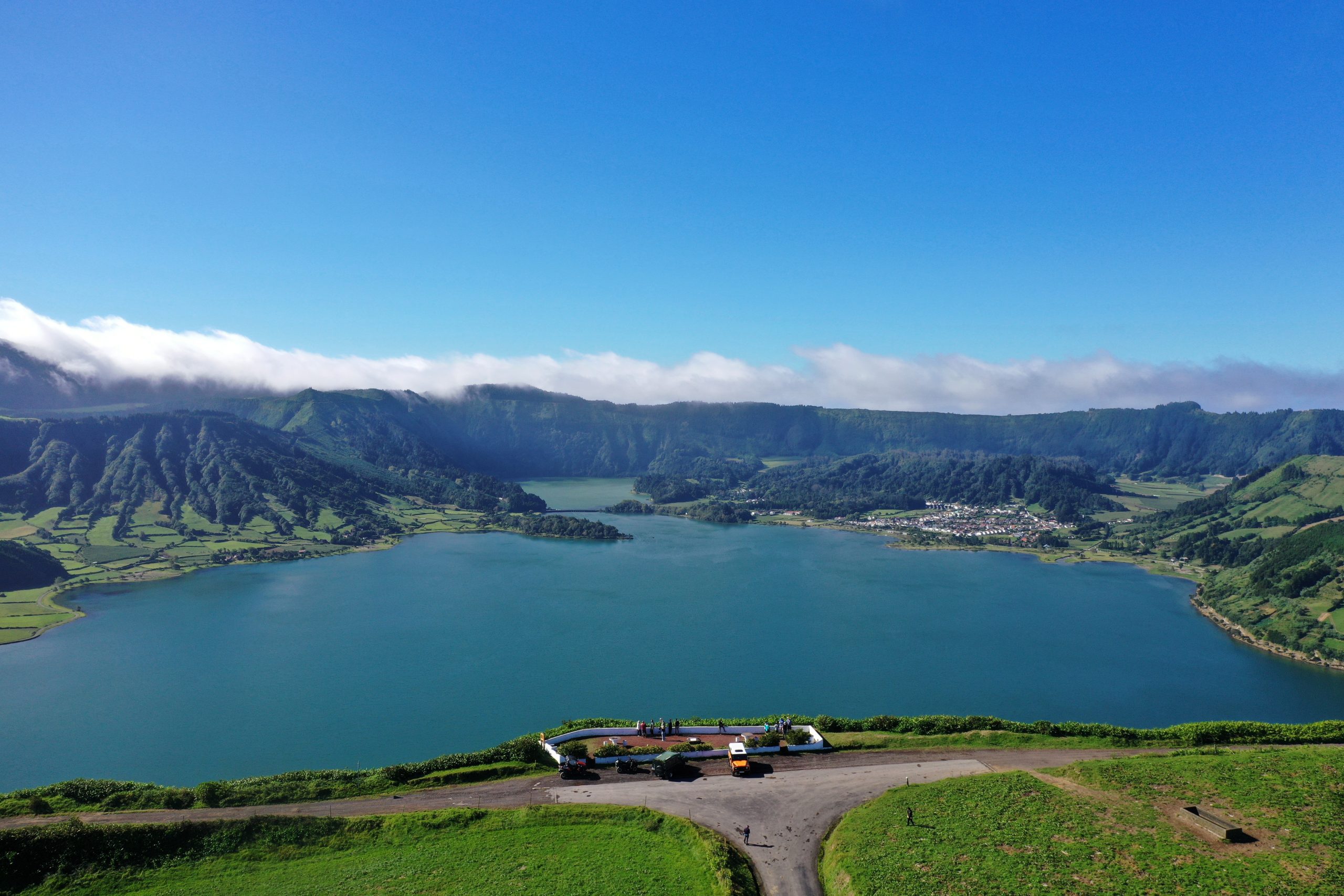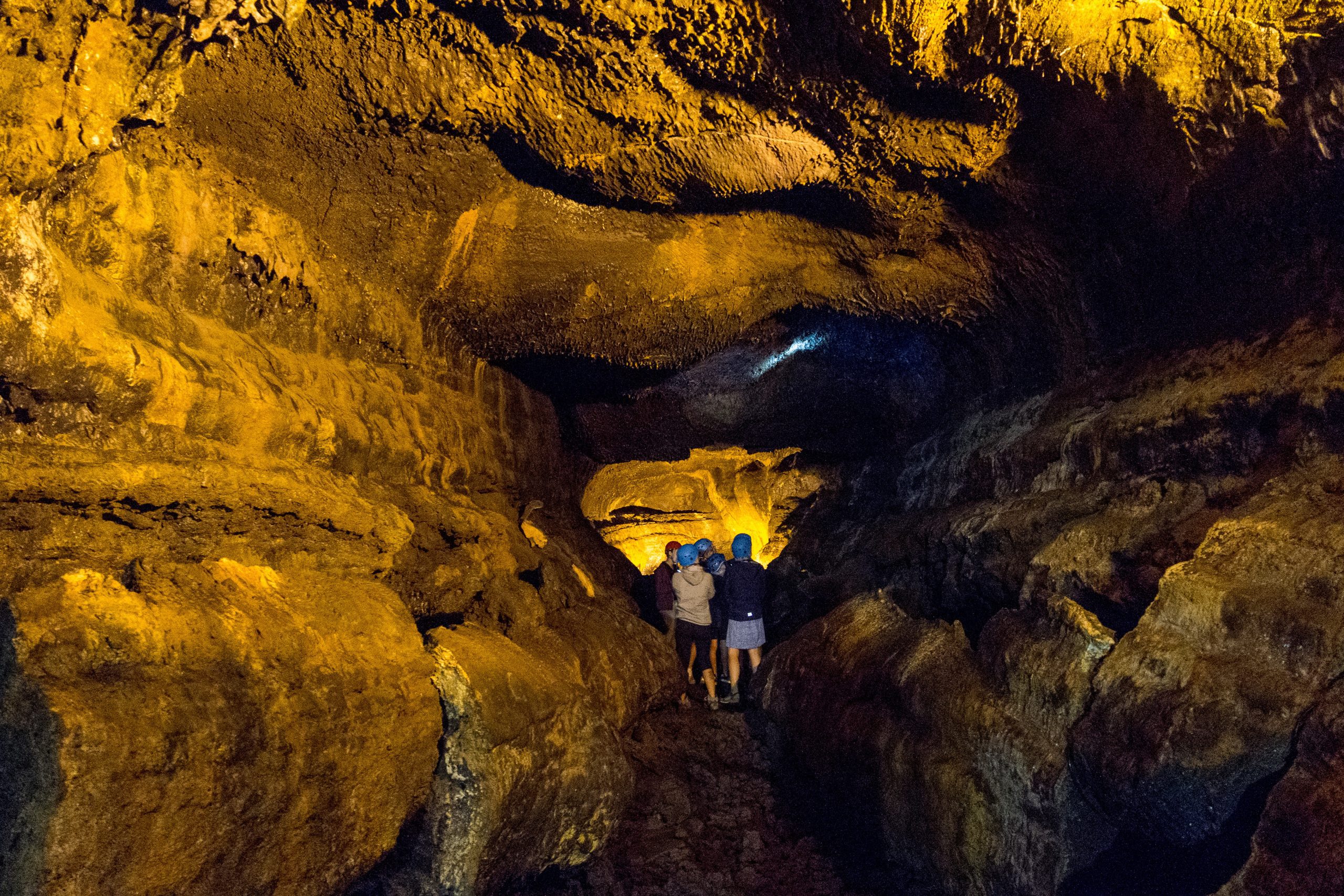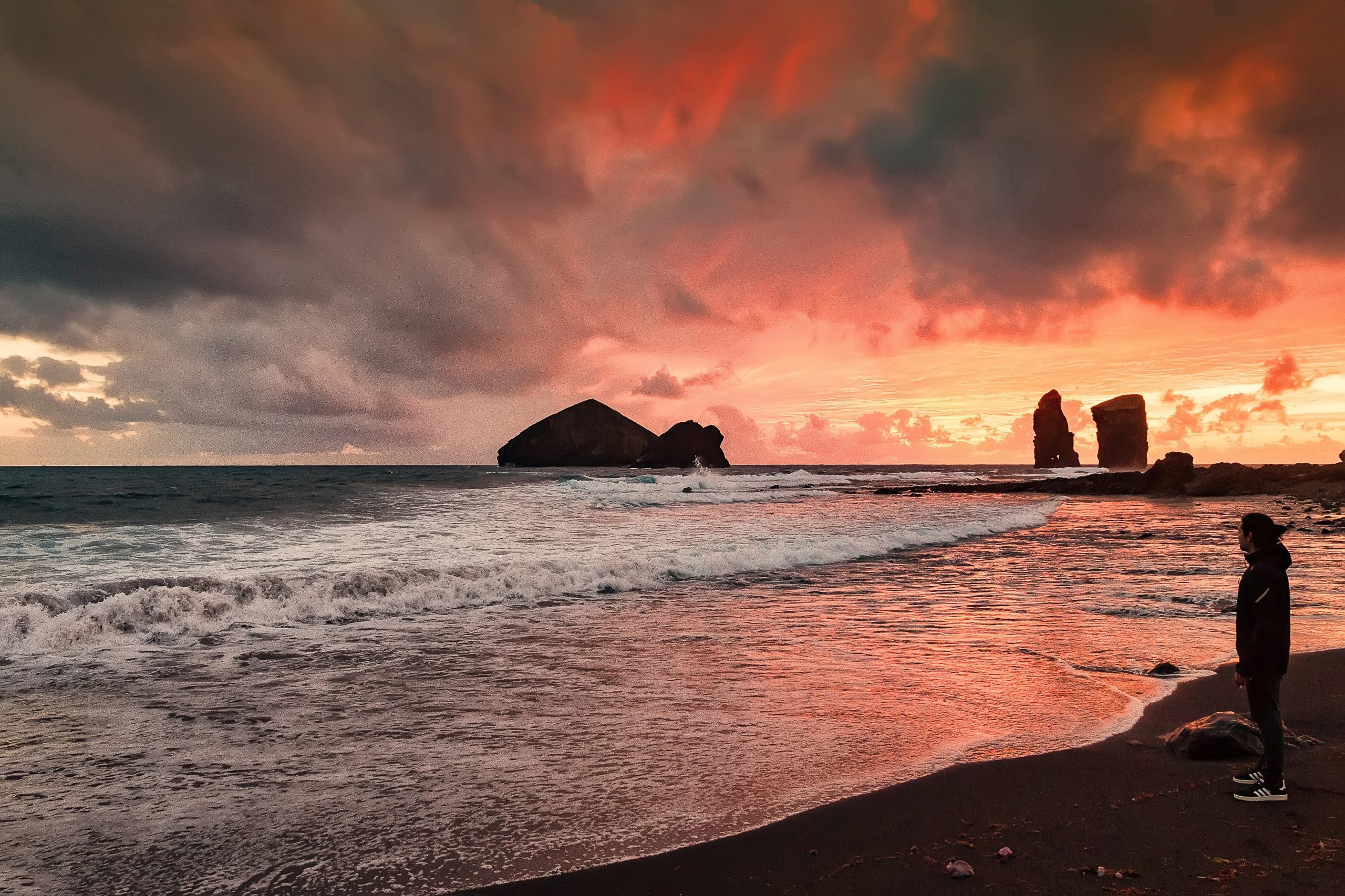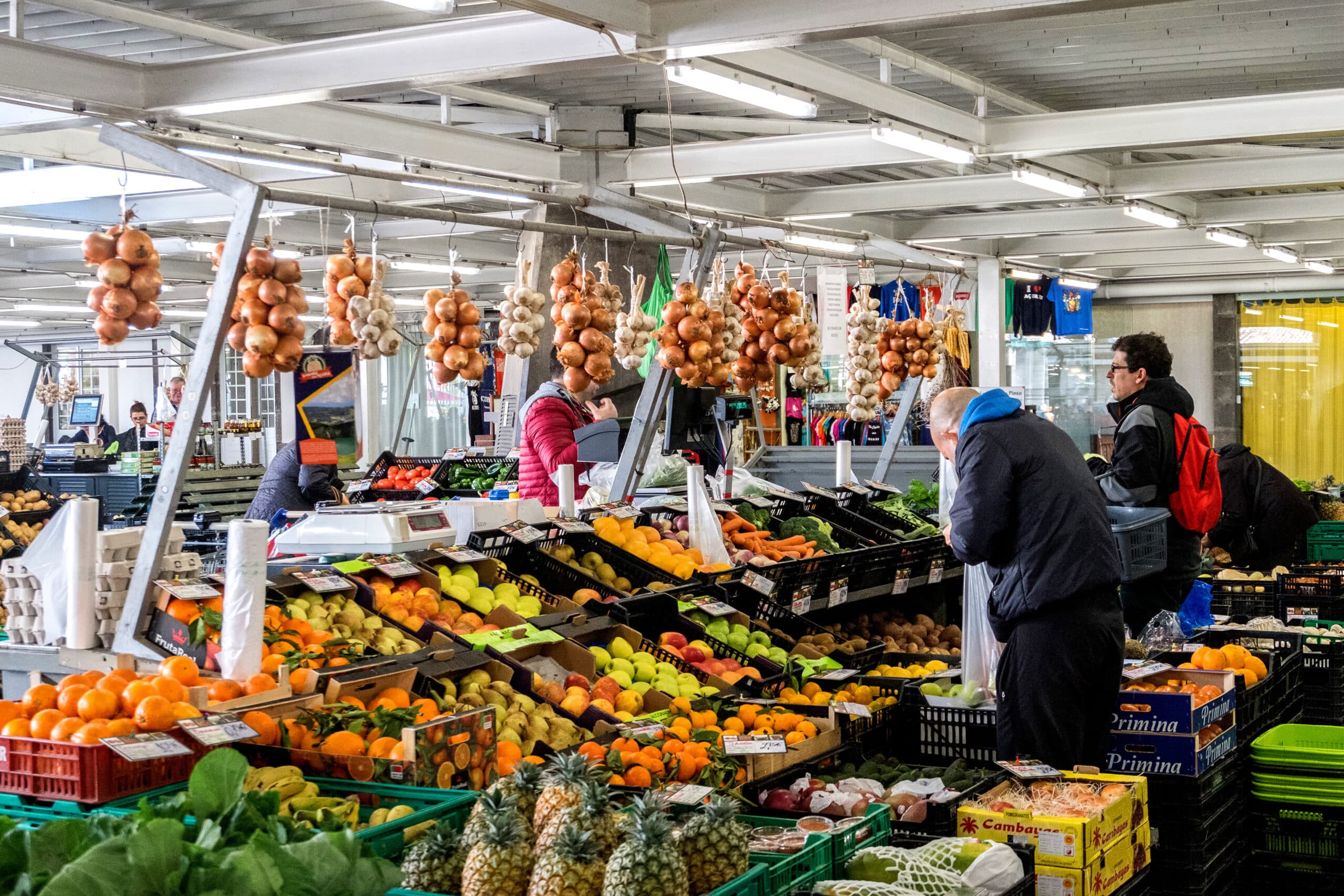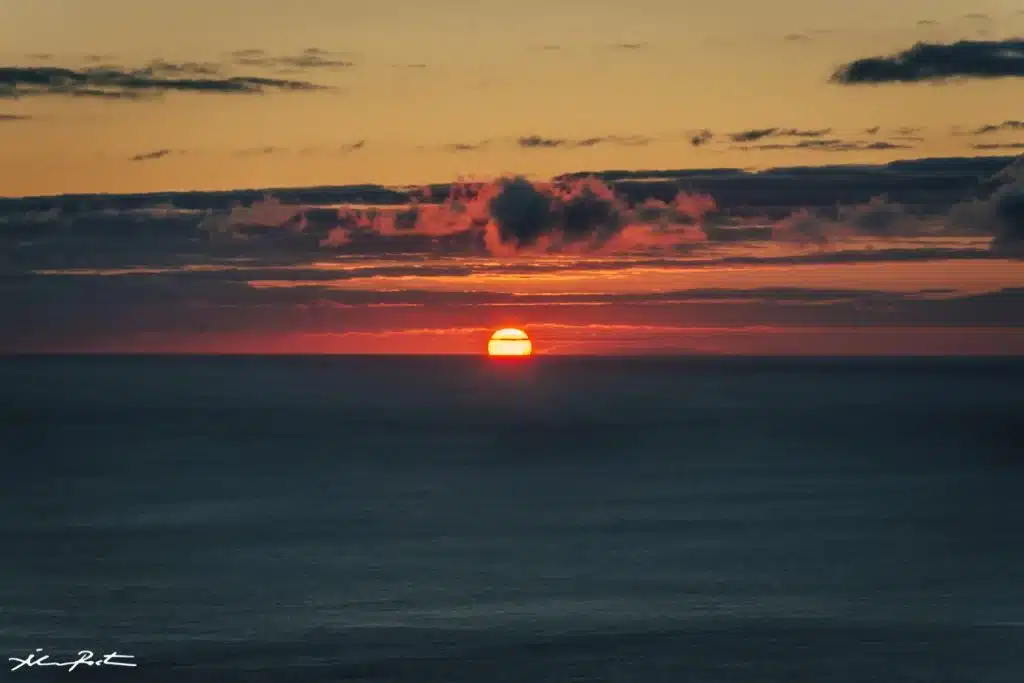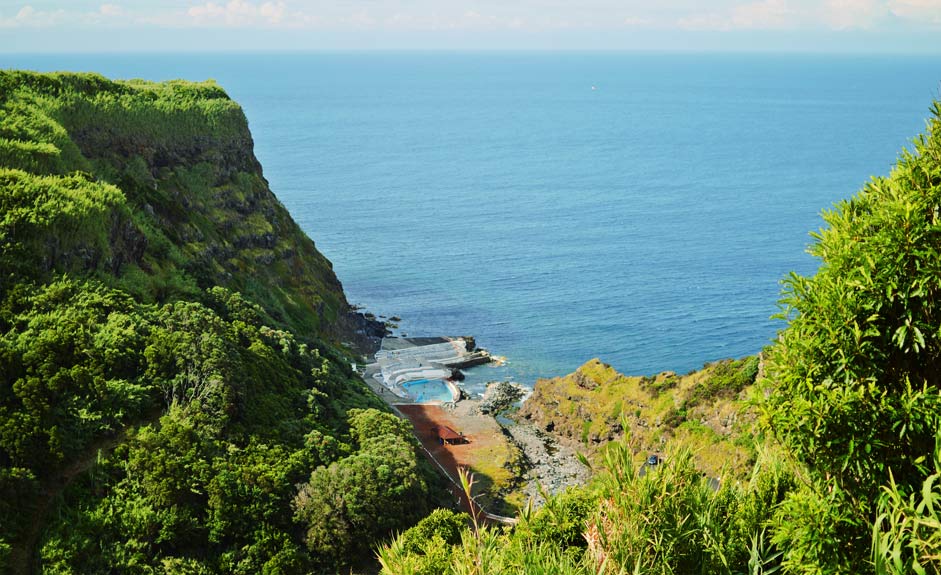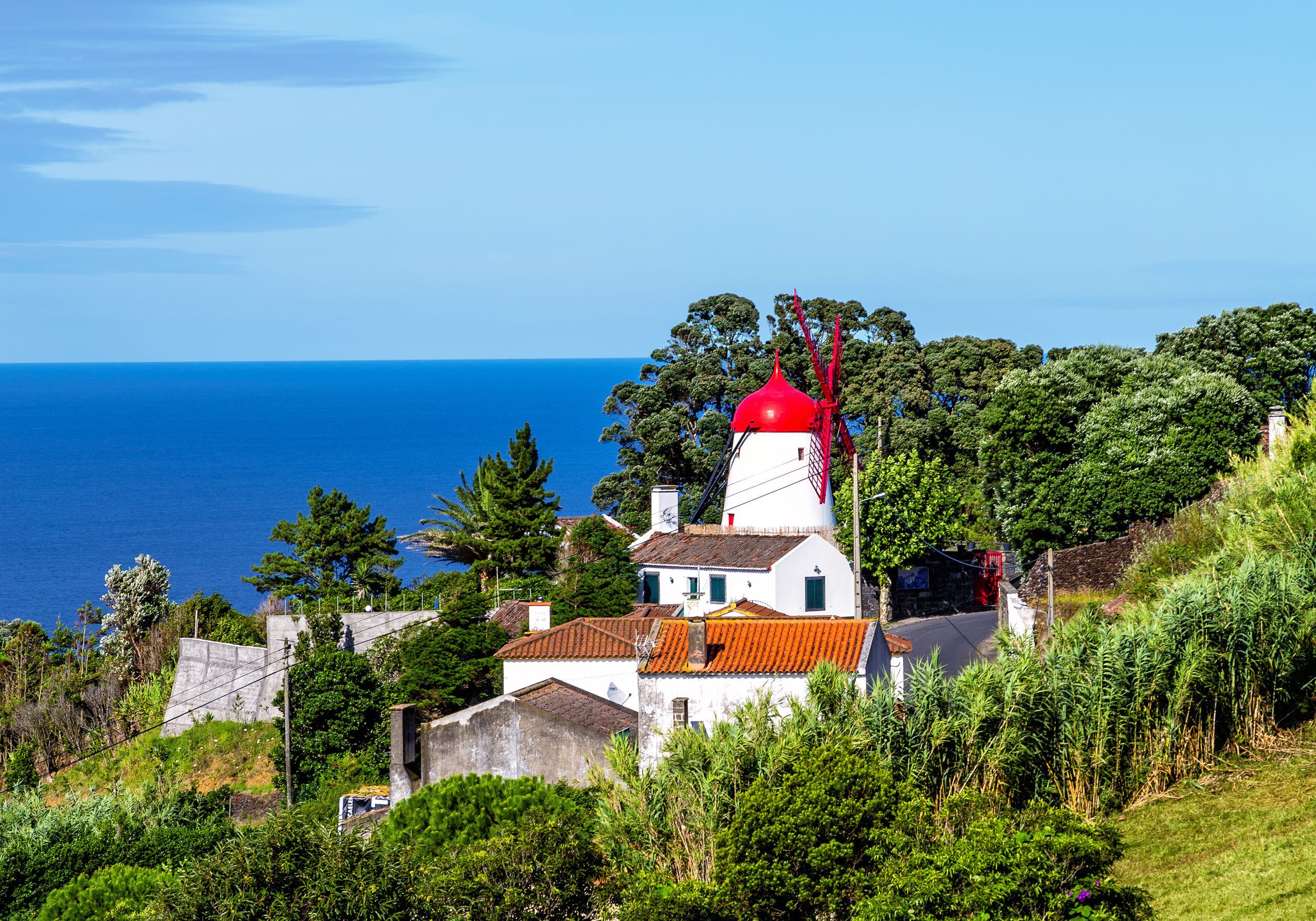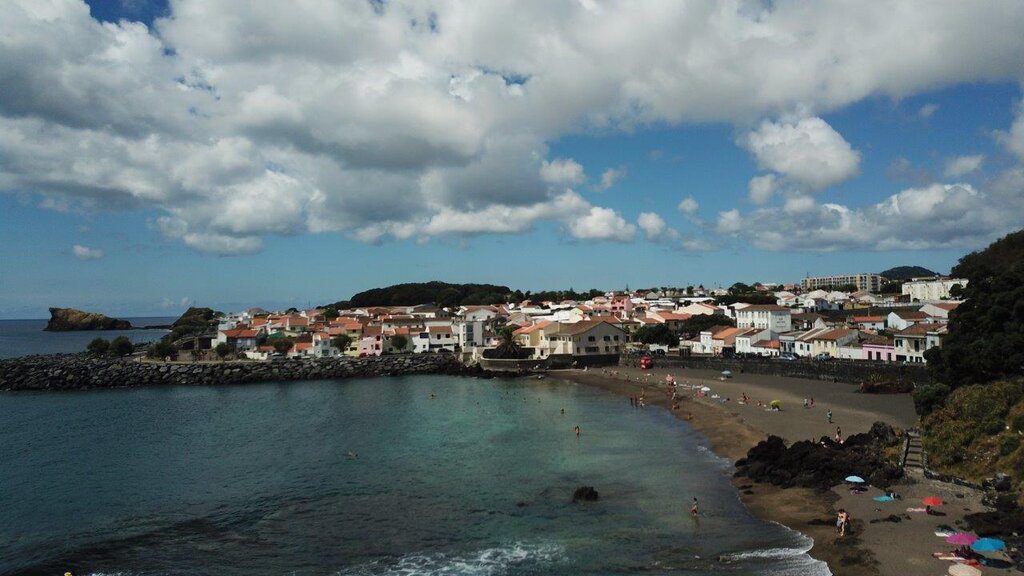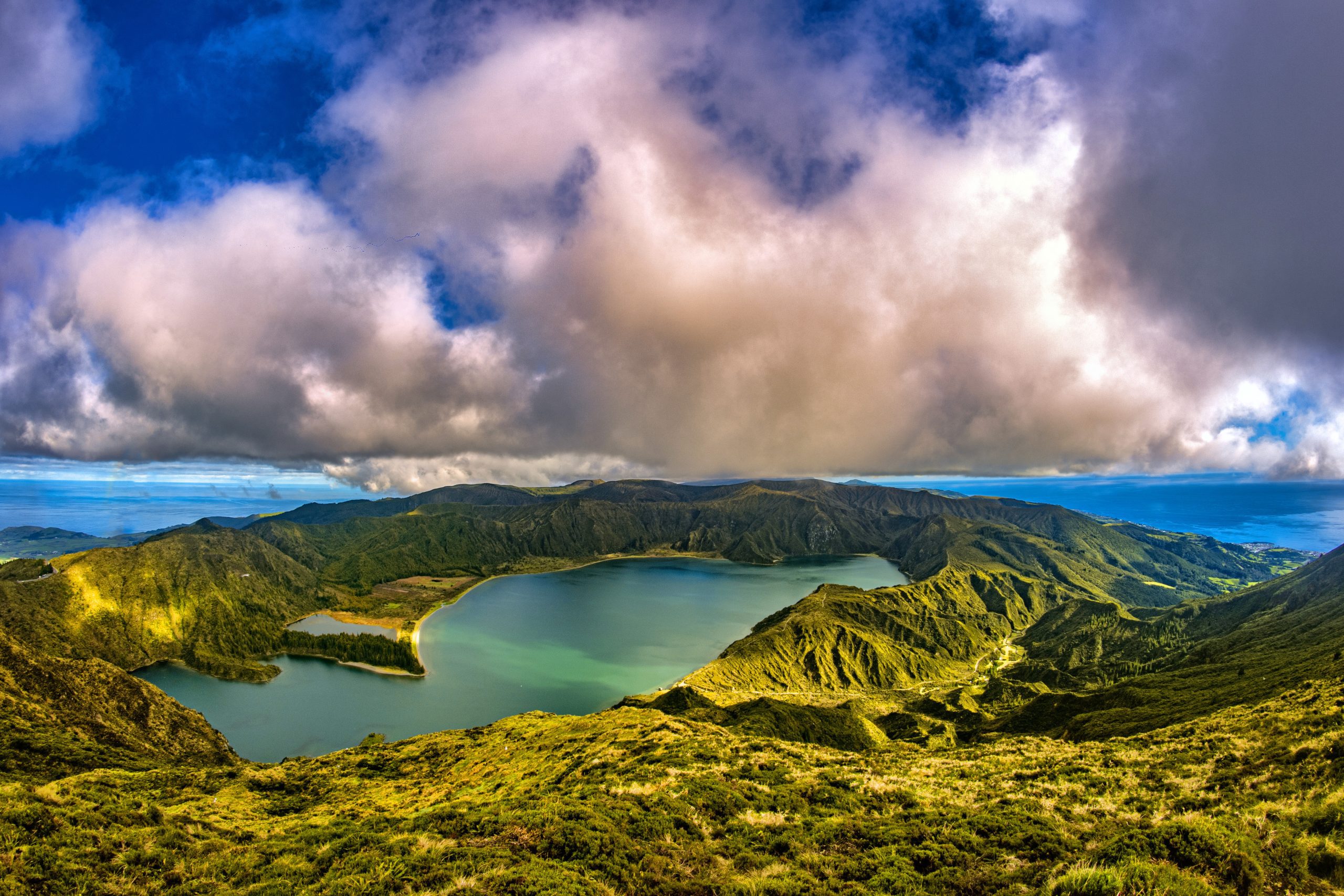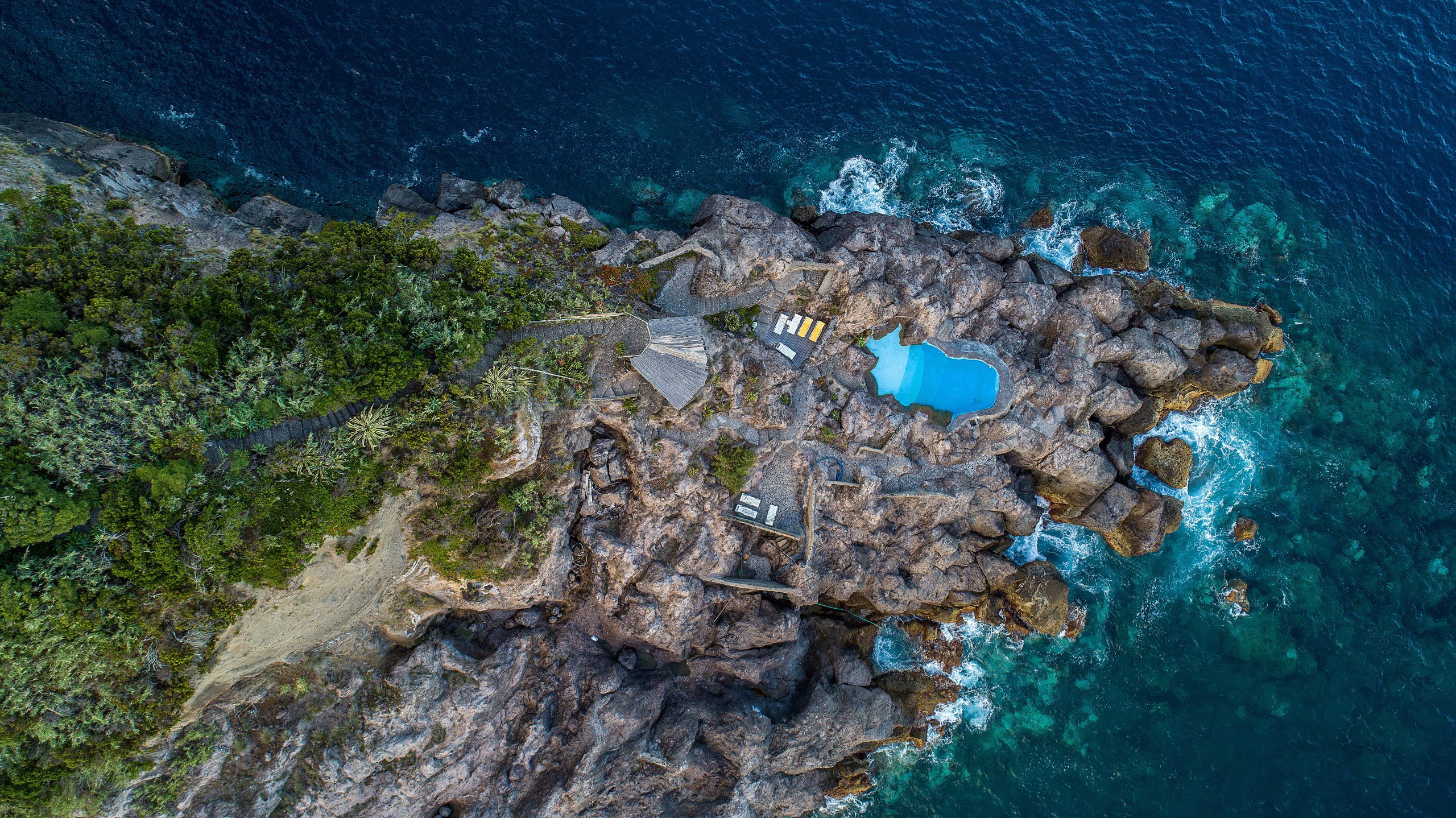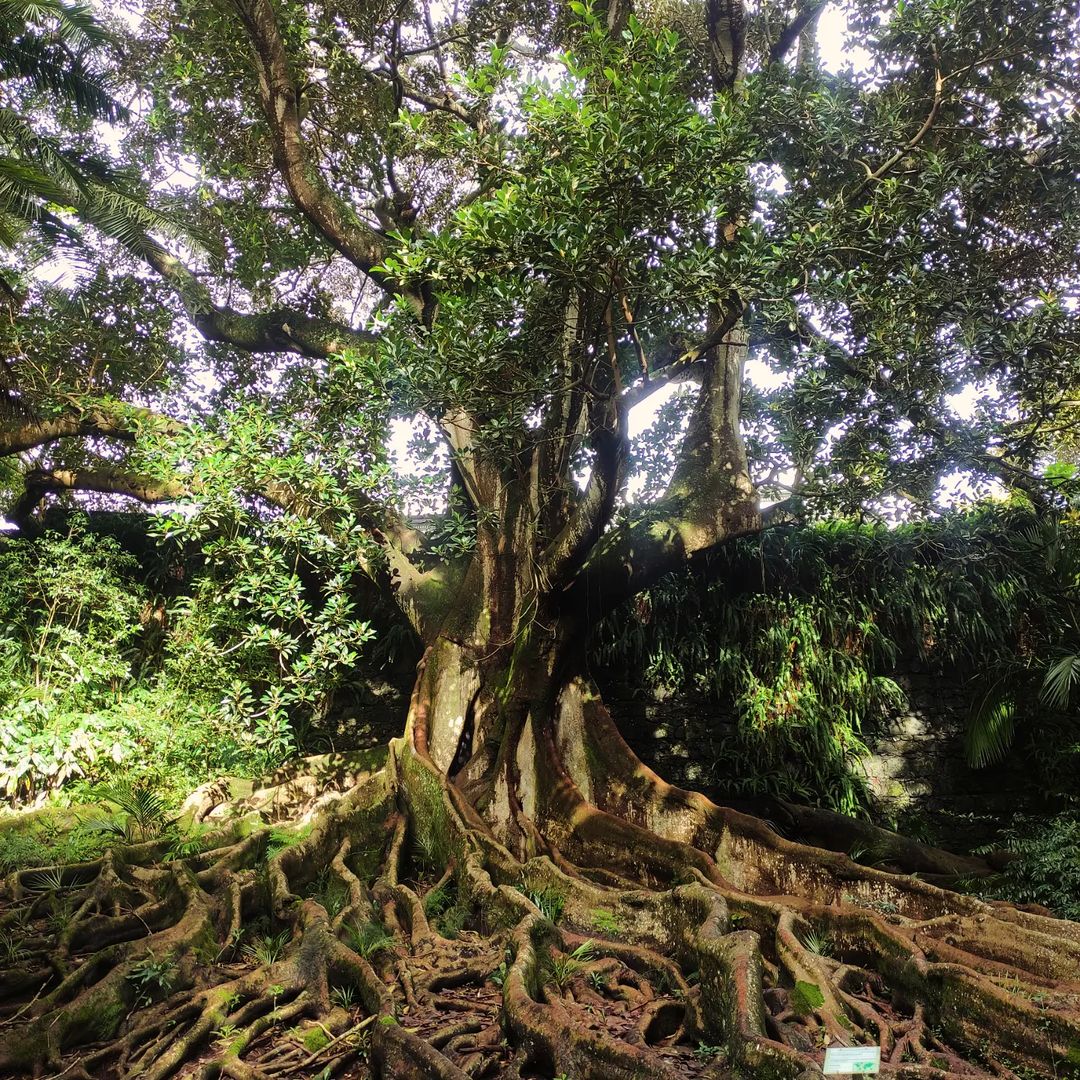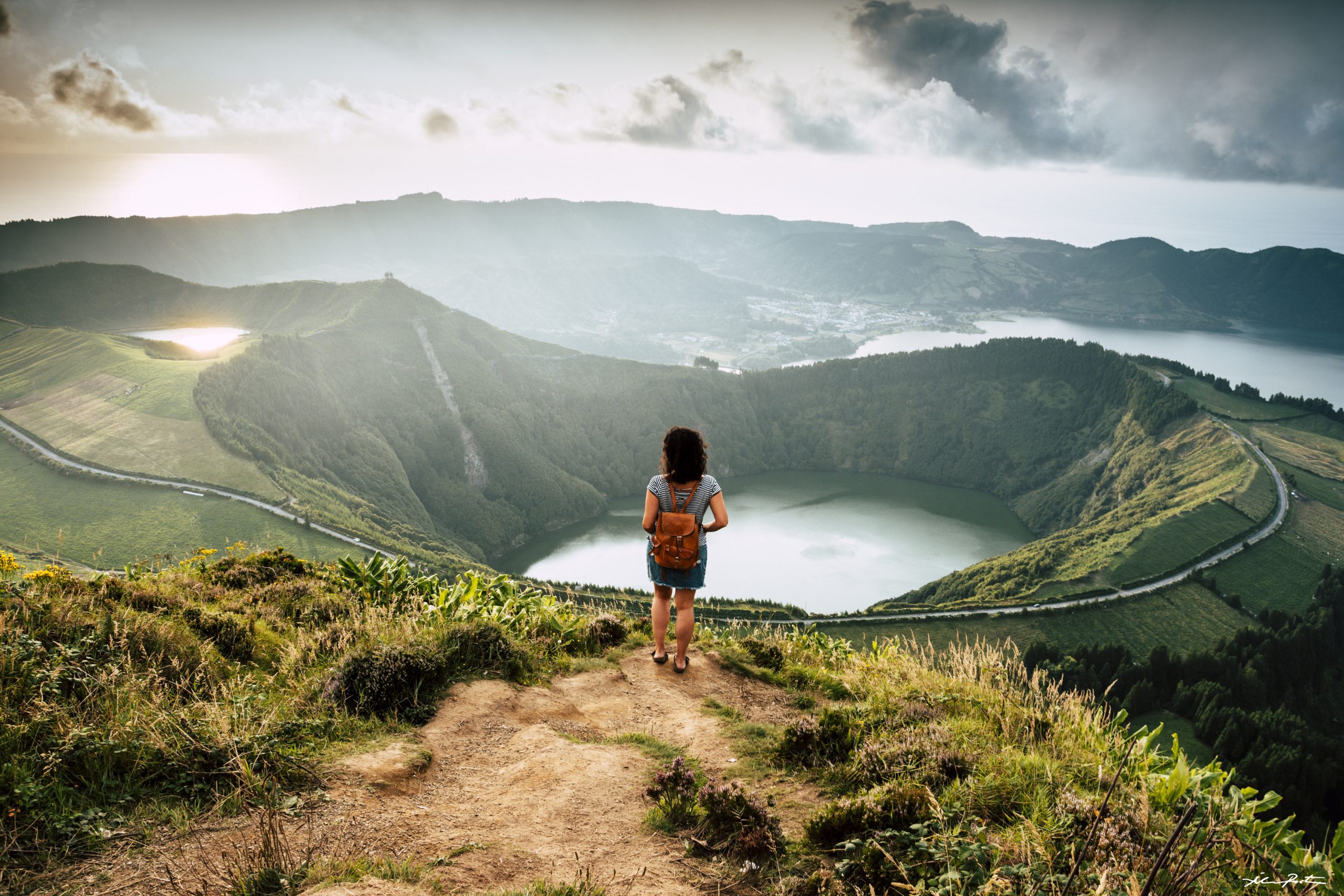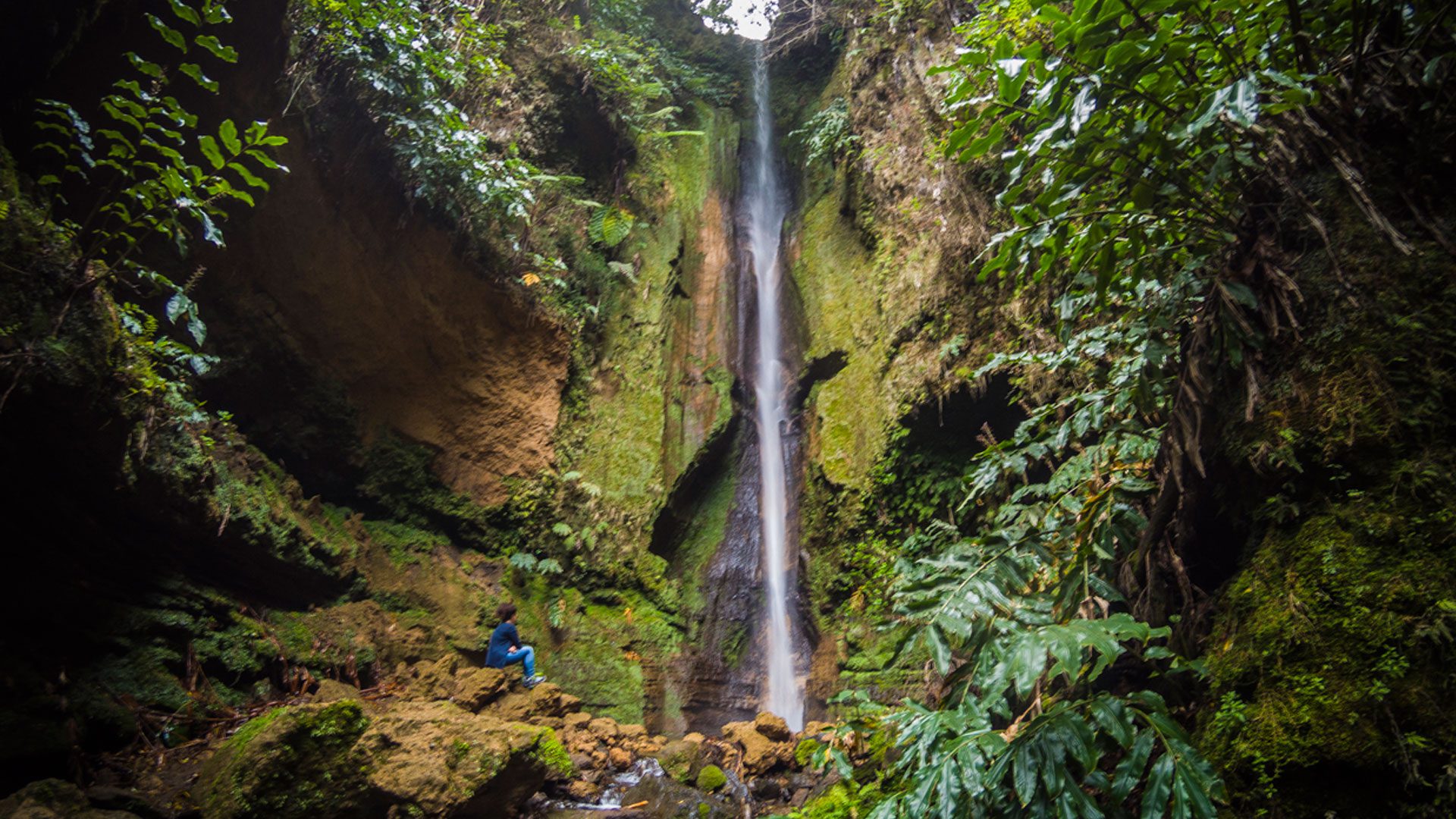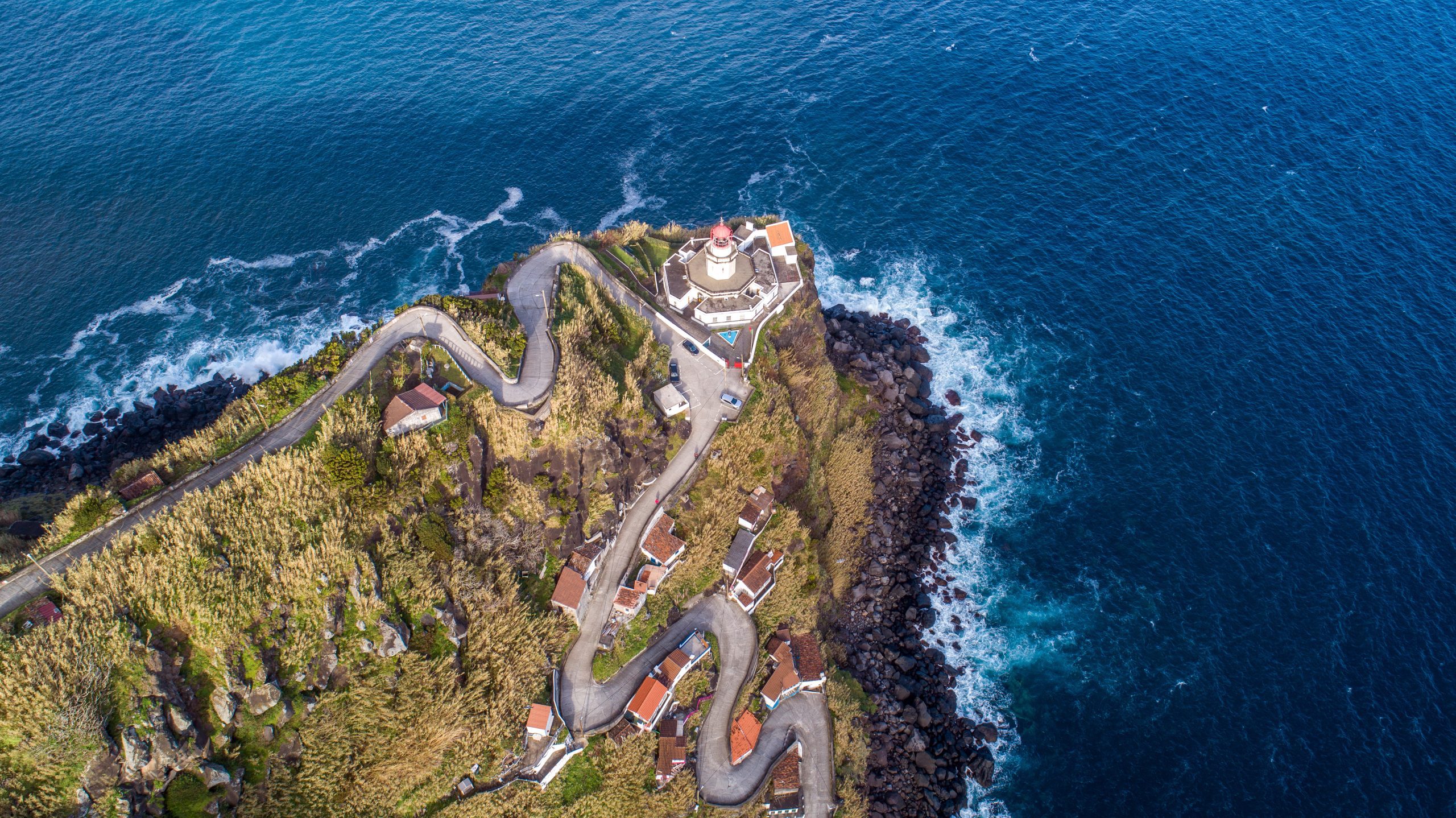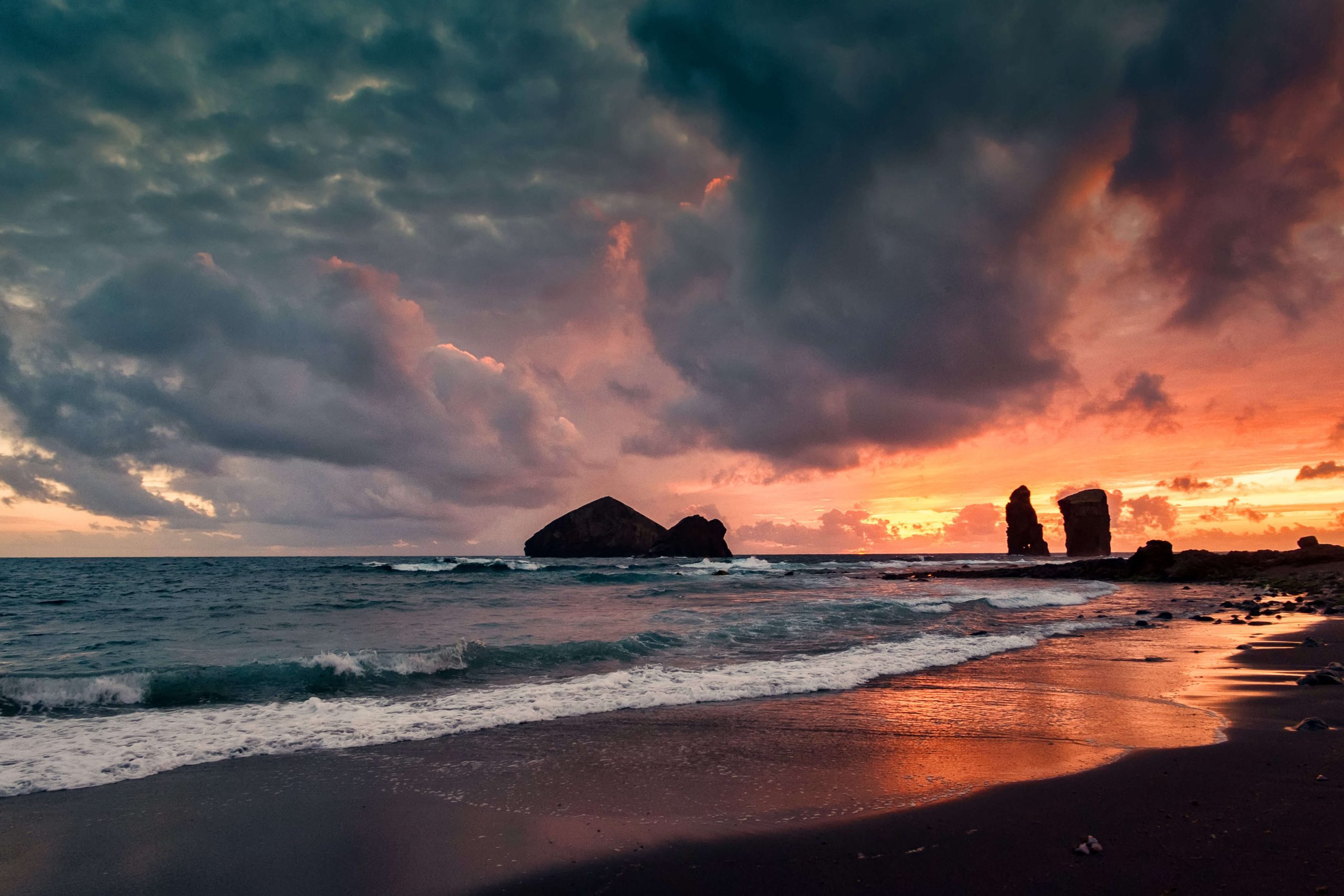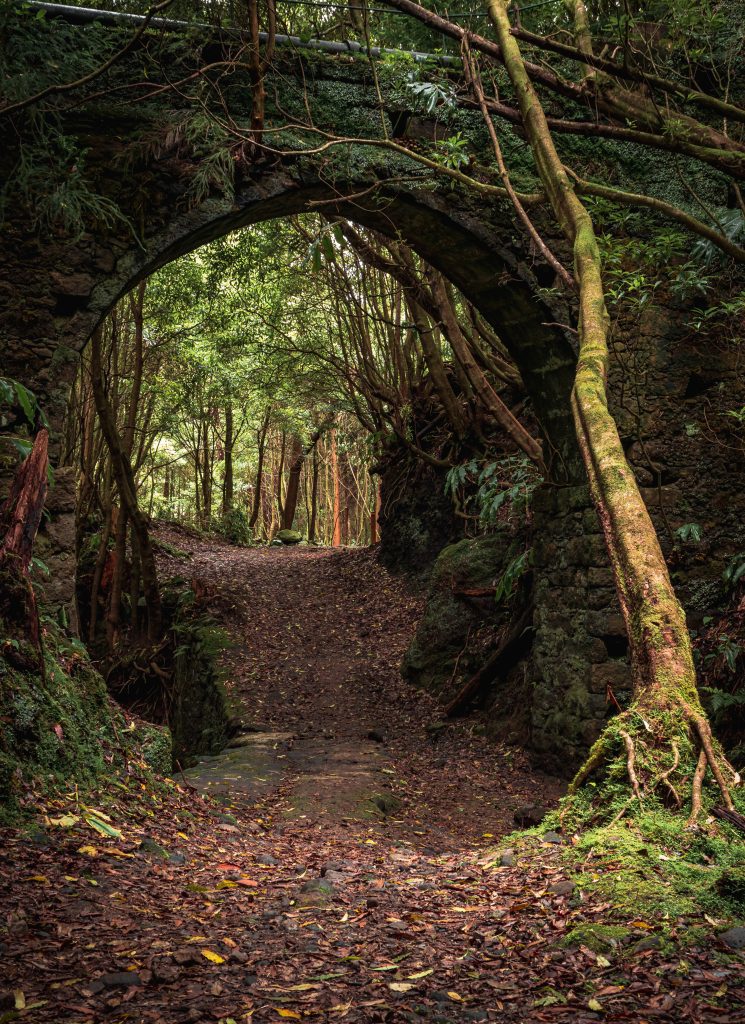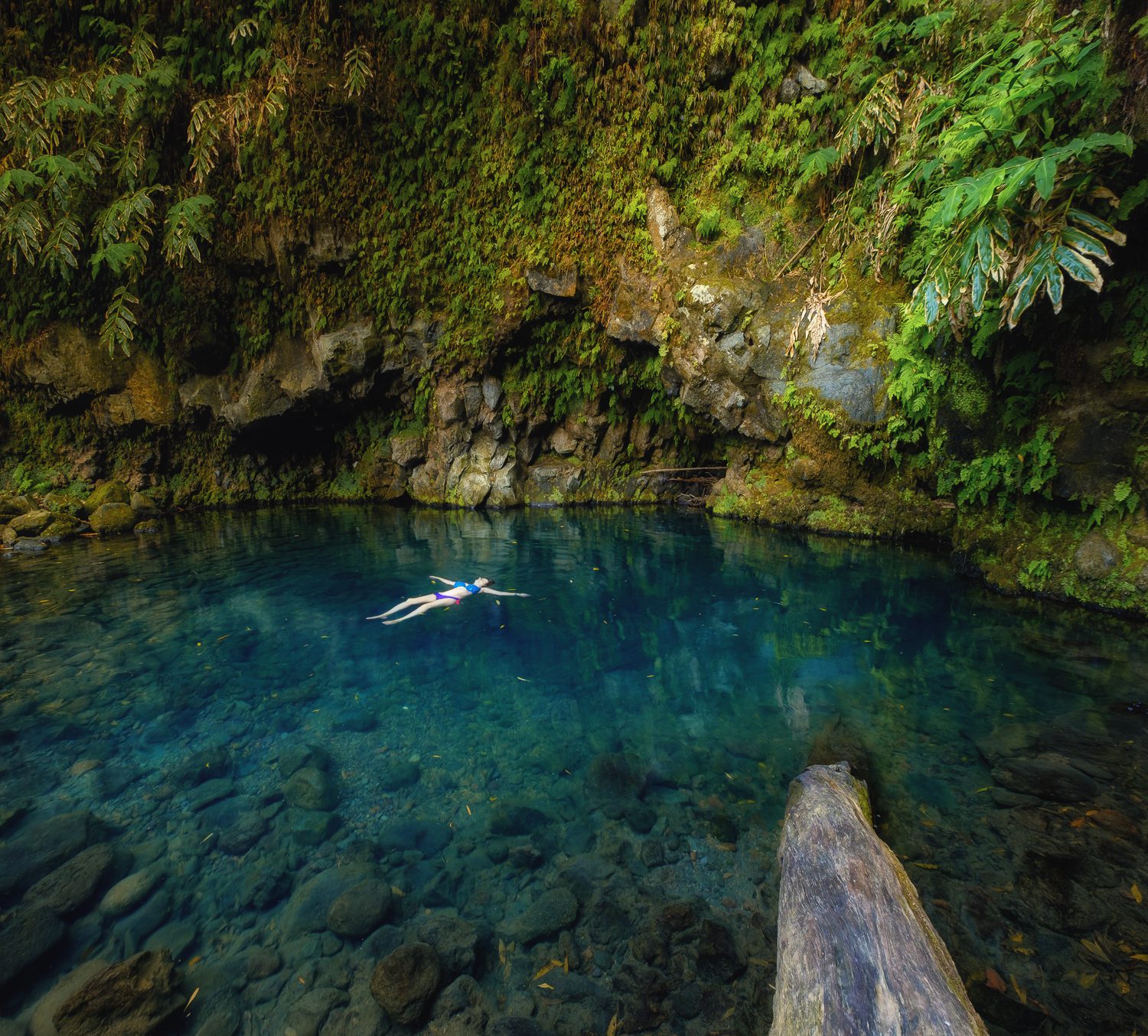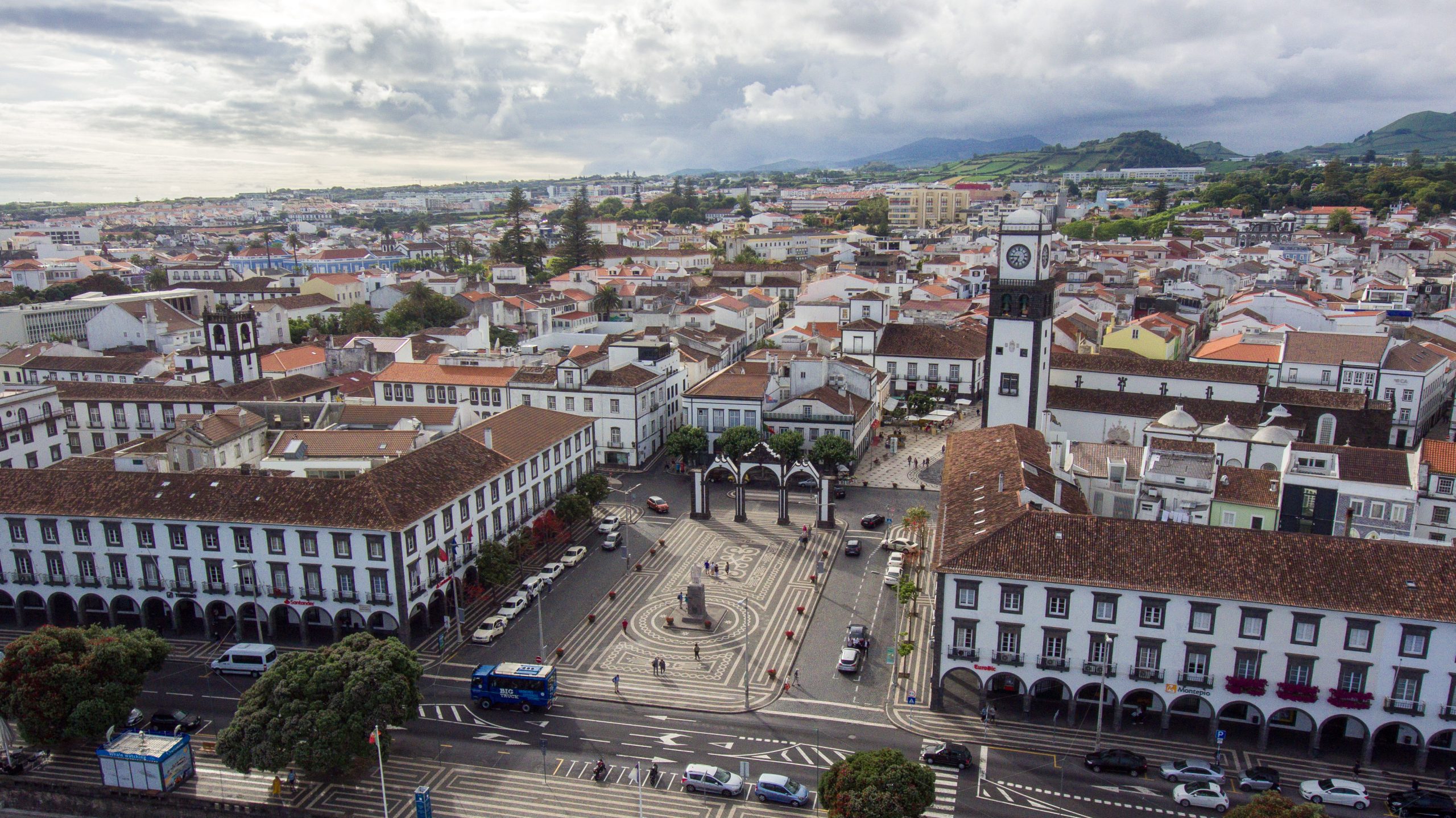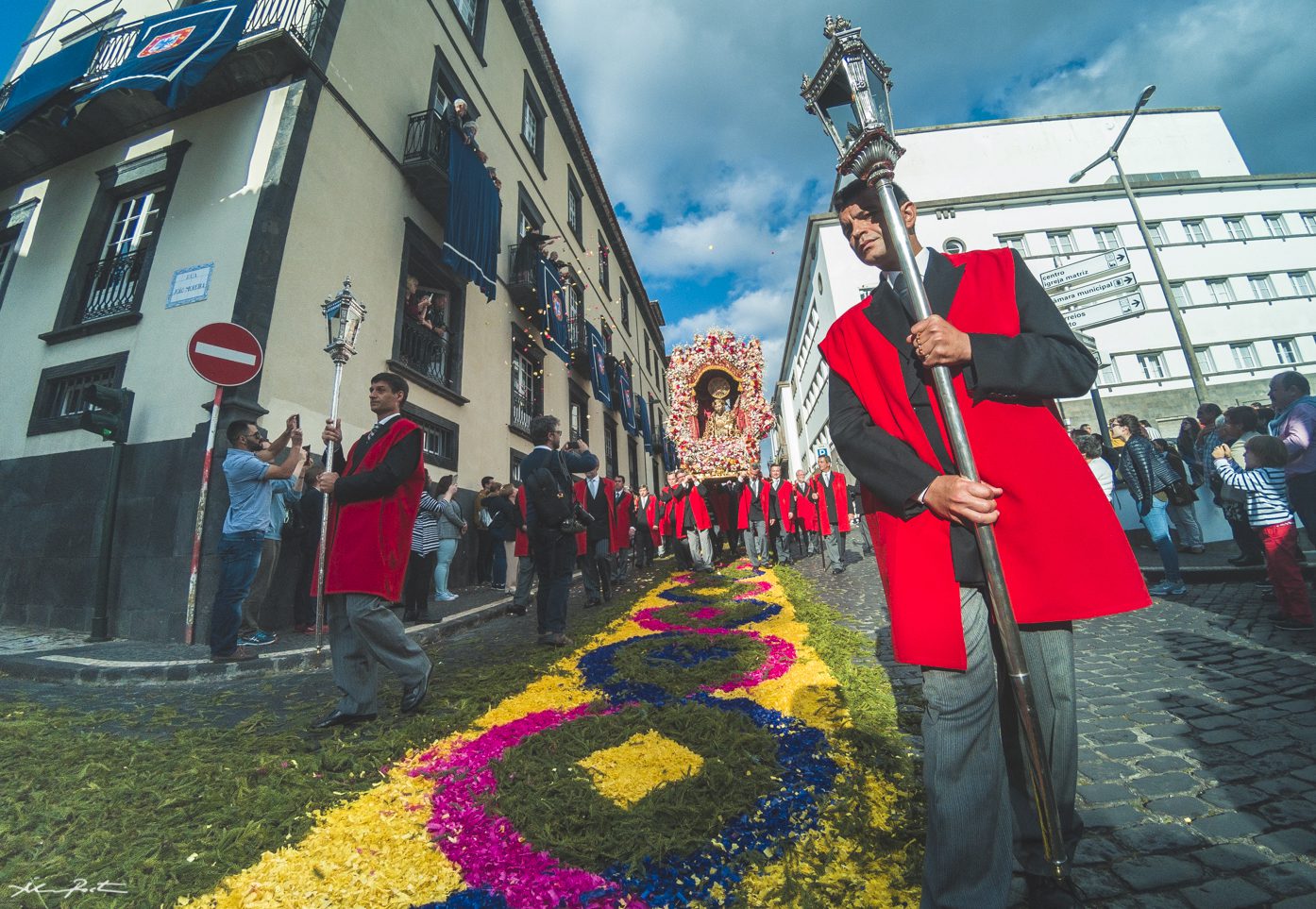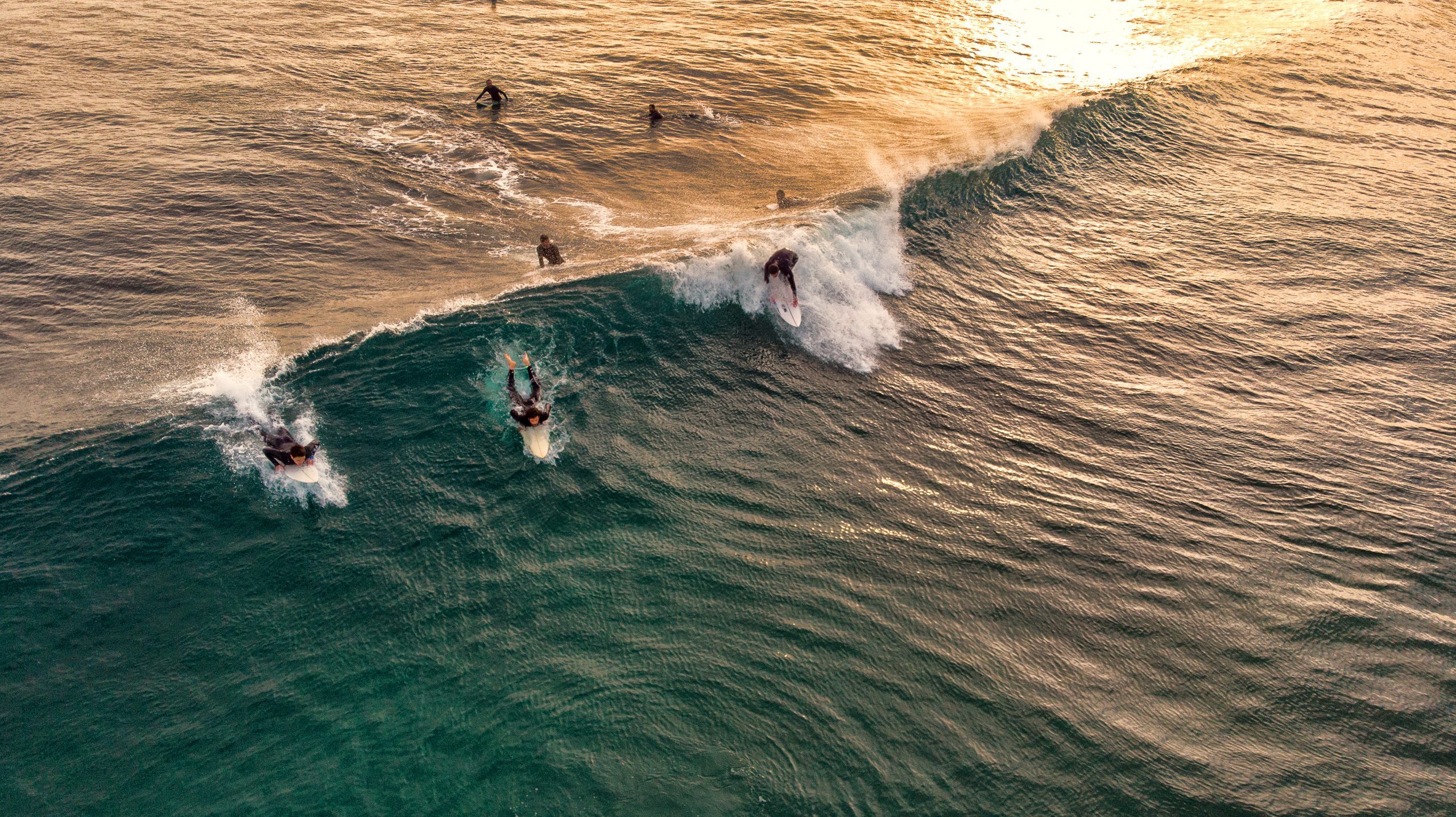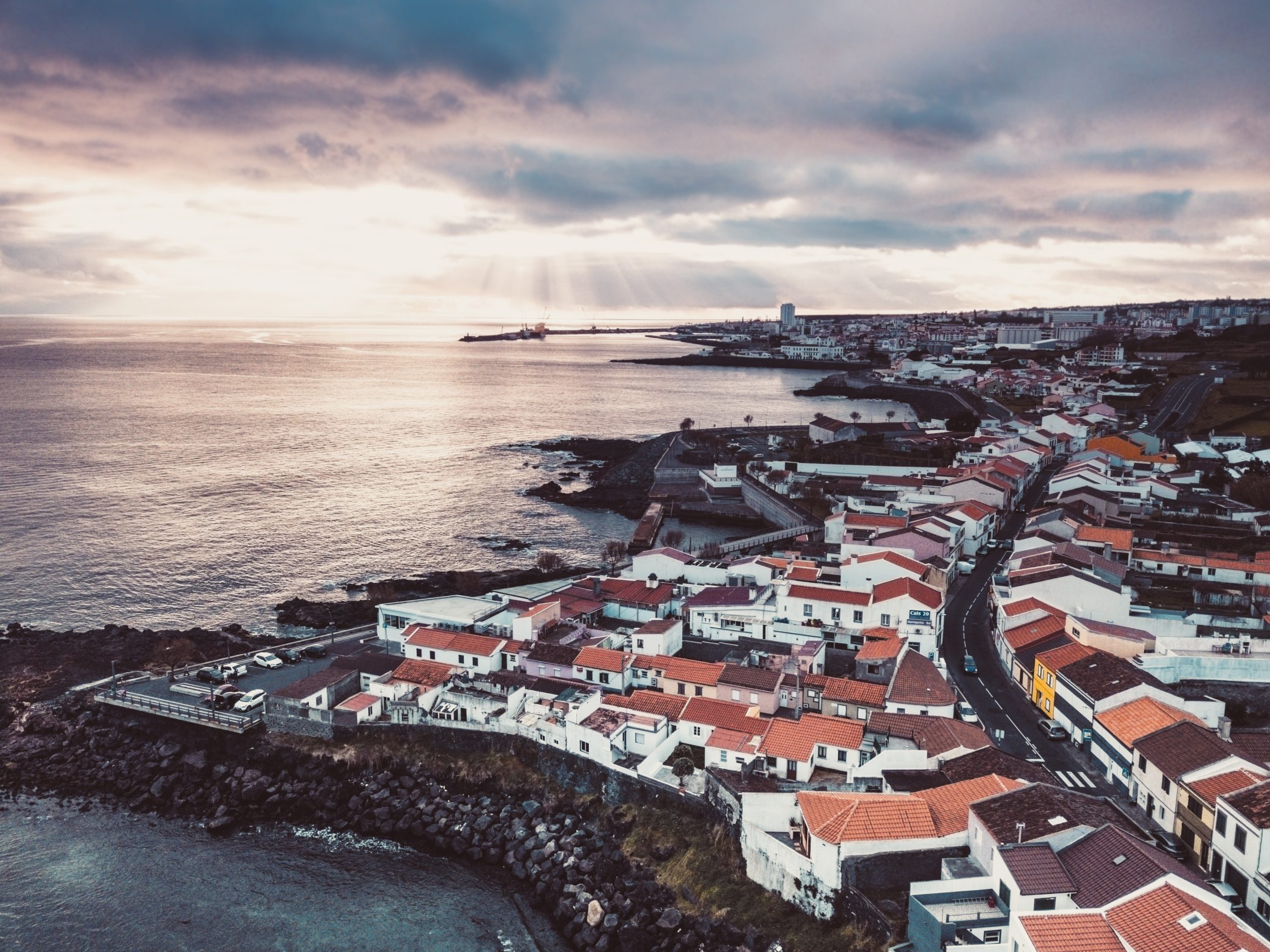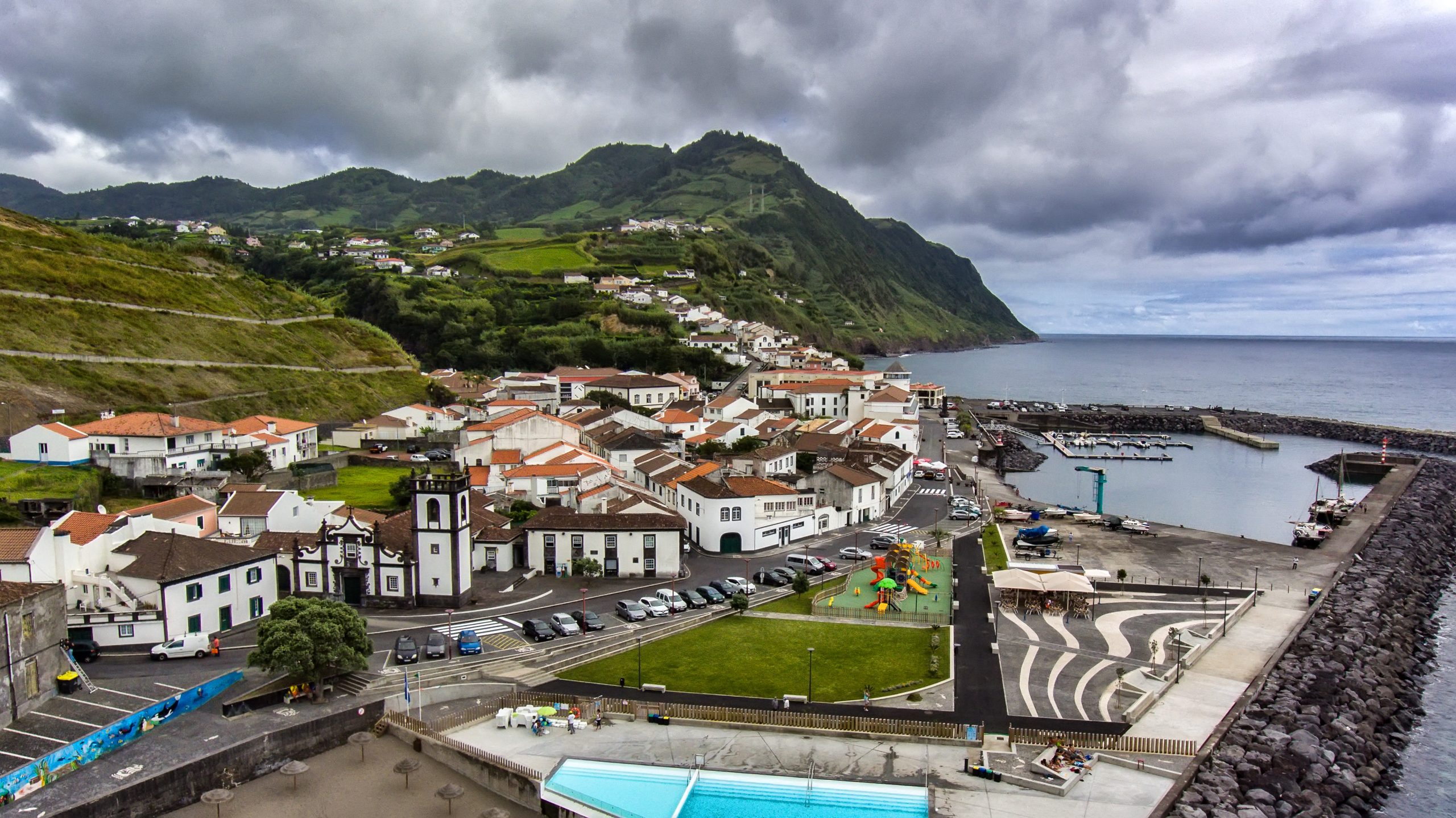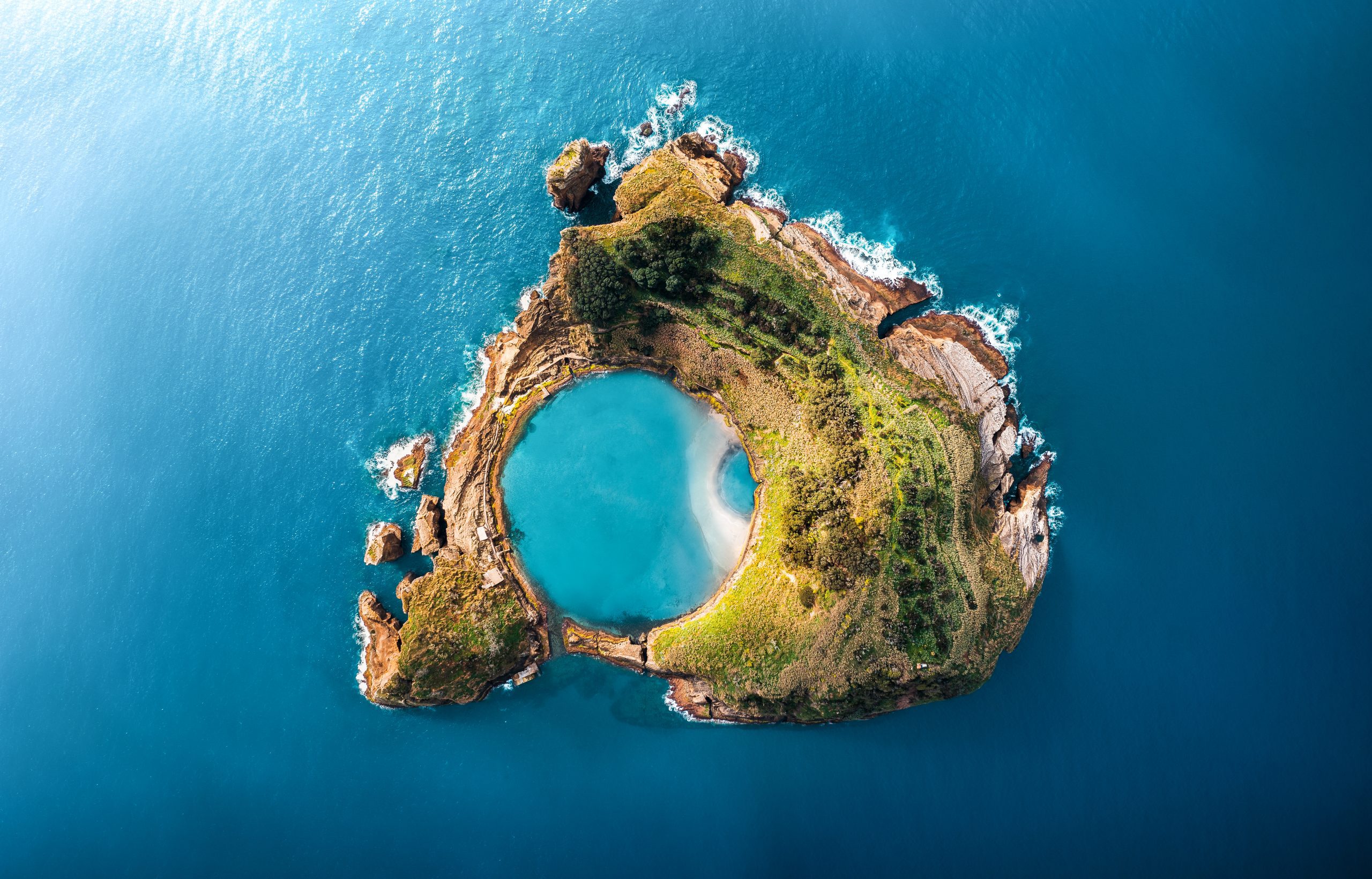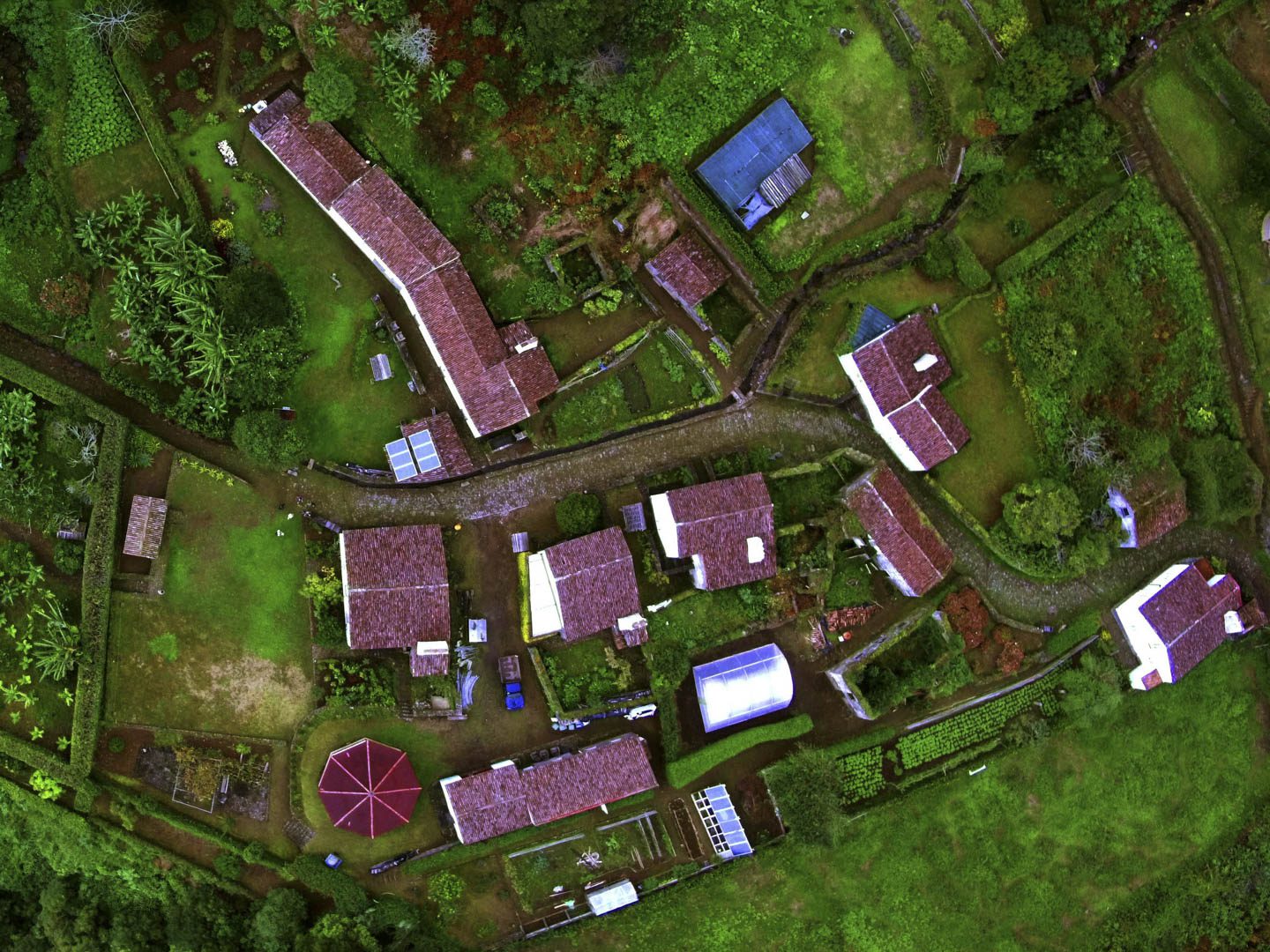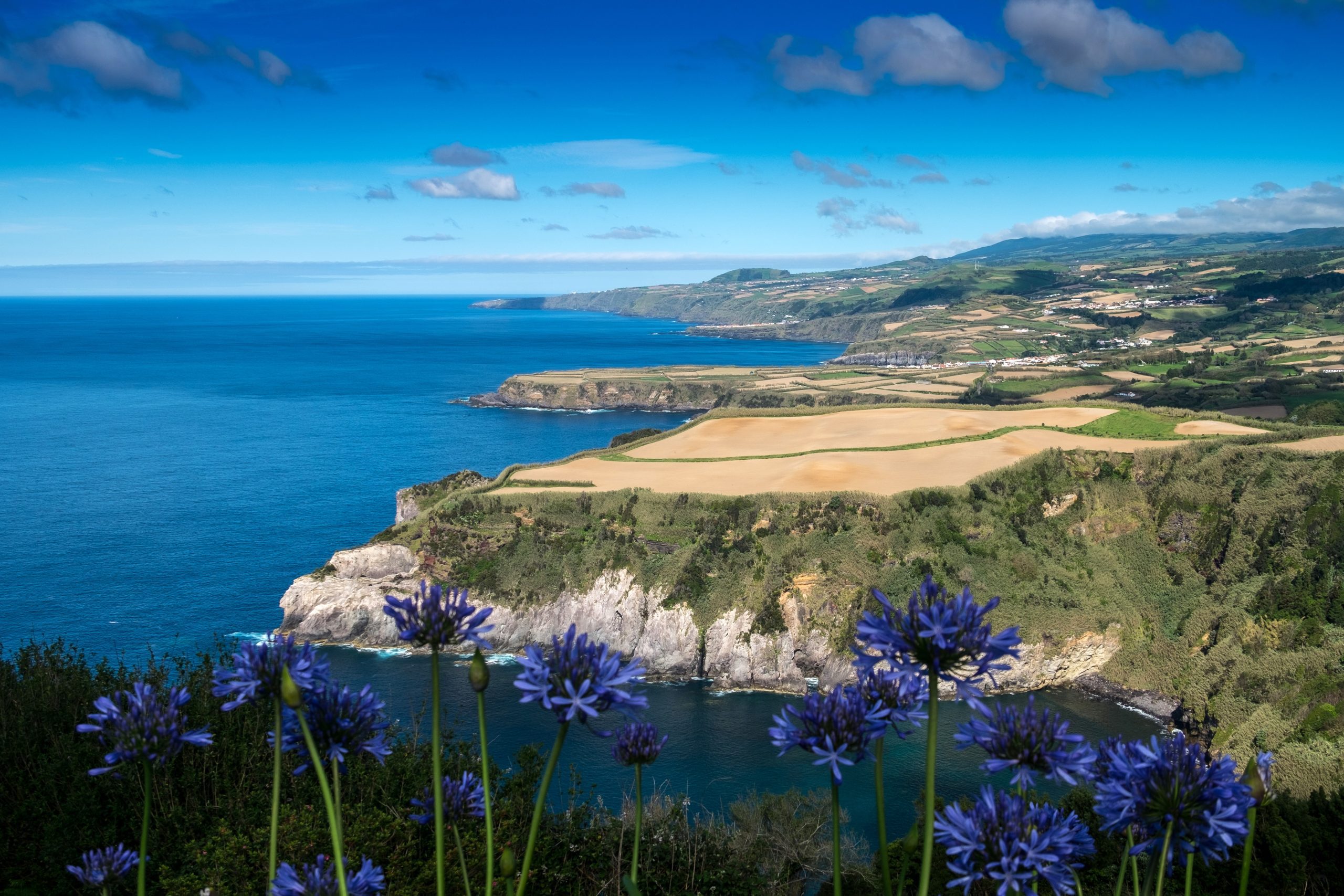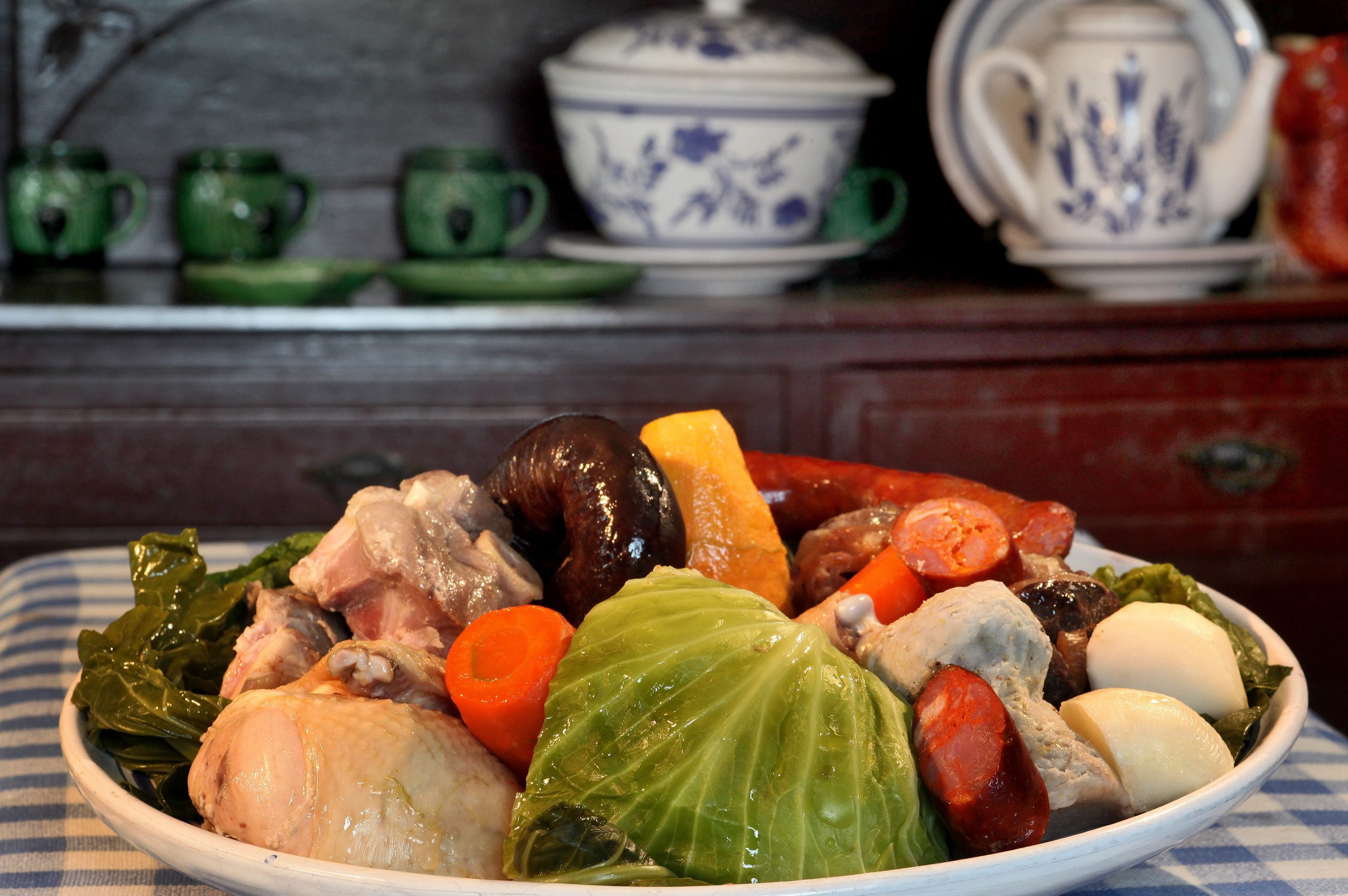Located on the southern coast of São Miguel Island, Água de Pau is a picturesque parish full of history and charm. It perfectly combines cultural heritage and natural beauty, creating an authentic reflection of Azorean life.
Nestled between the slopes of the Água de Pau mountain range and the vast Atlantic Ocean, it captivates every visitor. In addition, its narrow streets, traditional houses, and stunning landscapes make it truly unforgettable.
Moreover, the parish’s volcanic origins and deep cultural roots reveal the island’s fascinating history. Here, tradition and nature coexist in perfect harmony, offering a genuine glimpse into the spirit of the Azores.
What is Água de Pau

Água de Pau is a charming parish on the southern coast of São Miguel Island, within the municipality of Lagoa. Nestled between the Atlantic Ocean and lush volcanic hills, this village beautifully combines natural beauty, history, and Azorean tradition.
Moreover, the area is famous for its volcanic cliffs, scenic viewpoints, and crystal-clear natural pools. It also lies close to the iconic Lagoa do Fogo, one of São Miguel’s most breathtaking attractions.
In addition, Água de Pau features historic churches, cultural landmarks, and cobbled streets that reflect genuine Azorean authenticity. Today, visitors come here to slow down, explore peaceful trails, and enjoy the perfect balance of sea and mountain views.
Brief History
Água de Pau is one of the oldest parishes on São Miguel Island, dating back to the early 16th century. Its name, which literally means “water of wood,” comes from the abundance of freshwater streams in the area. In addition, the dense native vegetation that once covered the region inspired its poetic name.
Over the centuries, the parish’s fertile soils and proximity to the sea supported local livelihoods. Consequently, agriculture and fishing became the main activities that shaped the daily lives of its inhabitants.
Culture & Festivities
The parish maintains a strong cultural identity, with traditions deeply rooted in religion and community life. One of the main highlights is the Festas do Senhor dos Passos and the Festas do Espírito Santo. These traditional celebrations fill the parish with processions, lively music, and joyful communal meals.
Moreover, local folklore and delicious Azorean gastronomy enrich the festive atmosphere. The warm hospitality of Água de Pau’s residents makes it a truly vibrant cultural stop on São Miguel Island.
Planning your trip to the Azores? ✨ Check out our complete guide to Public Holidays in the Azores: Full List & Travel Guide
Plan Your Visit to Água de Pau

Best Season to Visit São Miguel
São Miguel Island is in the Eastern Group of the Azores Archipelago. Here, you will notice the atypical characteristics of this climate. These results stem from multiple factors contributing to its plant exuberance and landscape value.
The climate remains mild throughout the year, with average values showing minimal fluctuations. Temperatures vary between 16 °C in spring, 21 °C in summer, 18 °C in autumn, and 14 °C in winter.
Related Articles: 3-day itinerary for São Miguel | 5-day itinerary for São Miguel
Best Time to Visit Água de Pau
Água de Pau offers beauty throughout the year, but the summer months (June to September) are the best time to experience its highlights. During these warm, sunny days, you can swim in the nearby natural pools of Caloura, explore the coastline, or enjoy the panoramic views from Lagoa do Fogo at their most vibrant. The lush vegetation surrounding the parish reaches its peak, creating stunning scenery for hikes and walks.
Summer is also the perfect season to discover the area’s cultural and religious traditions, as local festivities bring the community to life with music, food, and celebrations. Whether you’re looking for adventure or relaxation, Água de Pau shines brightest in the summer months.
Check all our articles about the weather in the Azores throughout the year 🌤️ ☔️: January | February | March | April | May | June | July | August | September | October | November | December
How to Get to Água de Pau
Located on the southern coast of São Miguel Island, Água de Pau is easily accessible and offers a range of transportation options for visitors. It is approximately 18 km east of Ponta Delgada.
You can travel by car, taxi, or even bicycle. Following the main road EN1-1A, which Google Maps designates as the best route, the trip takes approximately 21 minutes by car. Public transport is also available, with a bus route that takes approximately 42 minutes (4 minutes on foot and 38 minutes by bus) via EN1-1A.
Planning a trip to the Azores? These articles will help you: How to Get to the Azores 🗺️ | Azores airports 🛬 | Flights between islands ✈️ | Ferries between islands ⛴️ | Which island to choose? 🏝️ | What airlines fly to the Azores? 🛩️
Where to Eat
Click on the following link to find a place to eat near Água de Pau. It will take you to TripAdvisor, where you can review the 10 best restaurants.
Where to Stay
Searching for the perfect place to stay? We’ve made it easy by filtering top accommodation options from Airbnb and Booking. Here, you’ll find the ideal place to stay and enjoy your visit!
Azores Guide Book
Azorean Language & Phrases 🗣️ | Currency & Banks 💵 | Credit Cards & Traveler’s Cheques 🏧 | Driving in the Azores 🚗 | Electricity 🔌 | Experiences & Tours 🗺️ | Health & Safety 🩺 | Internet & Wi-Fi Access 🛜 | Phones & Mobile Service 📞 | Post Offices & Buying Stamps ✉️ | Public Holidays 🏖️ | Shopping 🛒 | Time & Daylight 🕒 | Whale Watching Guide 🐳 | Best Island to Visit 🏞️
Nearby Attractions

Ribeira Grande
Ribeira Grande is known for its surf culture, stunning beaches, and breathtaking landscapes. Whether you’re looking for scenic viewpoints, hidden gems, or historic sites, there’s always something new to discover.
→ Check out these related articles for more inspiration: Caldeiras da Ribeira Grande | Pico da Barrosa Viewpoint | Santa Iria Viewpoint | Porto de Santa Iria | Areal de Santa Bárbara | Praia dos Moinhos | Rabo de Peixe | Salto do Cabrito | Lagoa do Fogo | Caldeira Velha | Janela do Inferno
Vila Franca do Campo
Once the first capital of São Miguel Island, Vila Franca do Campo perfectly blends history, culture, and coastal beauty. Its charming harbor, historic churches, and proximity to the iconic Ilhéu de Vila Franca make it a must-visit destination for travelers exploring the south coast.
→ Check out these related articles for more inspiration: Ermida de Nossa Senhora da Paz | Ilhéu de Vila Franca | Praia da Amora | Praia da Vinha da Areia | Praia de Água D’Alto | Lagoa do Congro | Lagoa dos Nenúfares | Miradouro do Castelo Branco


Lagoa
Located between Ponta Delgada and Vila Franca do Campo, Lagoa is a vibrant municipality renowned for its natural pools, scenic viewpoints, and rich tradition of artisanal pottery. It’s the perfect stop for travelers seeking both relaxation and authentic Azorean culture.
→ Check out these related articles for more inspiration: Caloura | Água de Pau
Ponta Delgada
The lively capital of São Miguel Island, Ponta Delgada, is the cultural and economic heart of the Azores. With its cobbled streets, historic architecture, and seaside promenade, it’s an ideal place to enjoy island life while exploring museums, markets, and gardens.
→ Check out these related articles for more inspiration: Gruta do Carvão | Jardim António Borges | Jardim Botânico José do Canto | Pinhal da Paz | Portas da Cidade | Milícias & Pópulo Beaches | Praia de São Roque | Pico Vermelho Windmill | Rocha da Relva | Mercado da Graça | Miradouro Vigia da Baleia


Nordeste
Known for its dramatic landscapes, lush forests, and breathtaking viewpoints, Nordeste is a paradise for nature lovers. If you’re looking for remarkable hikes or stunning waterfalls, this is the place to be.
→ Check out these related articles for more inspiration: Farol do Arnel | Ponta do Sossego Viewpoint | Salto da Farinha Viewpoint | Pico da Vara | Poço Azul | Ribeira dos Caldeirões | Cu de Judas
Complementary Information
Best Season to Visit the Azores
The Azores Archipelago boasts a unique climate that shapes its lush landscapes, making it a splendid year-round destination. With mild temperatures and minimal fluctuations, each season offers something unique. Spring averages 16 °C, summer reaches 21 °C, autumn cools to 18 °C, and winter remains mild at 14 °C.
→ For a detailed breakdown of the weather by month, check the following links 🌤️☔️: January | February | March | April | May | June | July | August | September | October | November | December
How to Get to the Azores
The Azorean Archipelago is easily accessible through numerous flight routes. Lisbon and Porto are the main entry points to the continent, with direct flights available to São Miguel (PDL), Terceira (TER), Faial (HOR), Pico (PIX), and Santa Maria (SMA). To find the best flight, use search engines like eDreams or Skyscanner. These platforms let you compare prices and schedules from multiple airlines in one convenient location.
For more details on how to get to the Azores, take a look at our complete guide. But what if you want to explore beyond your arrival island? We’ve got you covered!
- Azores airports 🛬
- Flights between islands ✈️
- Ferries between islands ⛴️
- Which island to choose? 🏝️
- What airlines fly to the Azores? 🛩️
→ Once you’ve found the perfect route, book your tickets and get ready to experience one of the world’s most stunning island groups!
Travel Essentials
Essential Information for your Azores trip: Azorean Language & Phrases 🗣️ | Currency & Banks 💵 | Credit Cards & Traveler’s Cheques 🏧 | Driving in the Azores 🚗 | Electricity 🔌 | Experiences & Tours 🗺️ | Health & Safety 🩺 | Internet & Wi-Fi Access 🛜 | Phones & Mobile Service 📞 | Post Offices & Buying Stamps ✉️ | Public Holidays 🏖️ | Shopping 🛒 | Time & Daylight 🕒 | Whale Watching Guide 🐳 | Best Island to Visit 🏞️
Useful Tools & Apps
The weather in the Azores can be variable, so it’s helpful to use some apps before visiting the islands. Spotazores provides live camera feeds from the main tourist attractions, allowing you to check the weather and plan your visit. For accurate weather predictions, use Windy or Windguru — they provide the most reliable predictions.
Video
Conclusion
Água de Pau is more than a historic parish on São Miguel Island — it’s where the mountains meet the sea. Here, tradition blends harmoniously with nature, creating a perfect balance between history, culture, and breathtaking scenery.
Moreover, its volcanic landscapes and lively festivities reflect the authentic charm of the Azores. From serene natural pools to panoramic viewpoints, this parish offers unforgettable experiences that capture the true spirit of the islands.
Whether you’re exploring its charming streets, hiking through its lush surroundings, or simply enjoying the coastal views, Água de Pau promises a memorable journey into the island’s rich history, vibrant culture, and stunning natural beauty.
Authors’ Note
I am pleased to inform you that all the recommendations in this article are based on my personal experience and observations. As the author, I have personally visited each attraction mentioned, ensuring that every suggestion is grounded in first-hand knowledge and genuine enthusiasm.
FAQs
Água de Pau is a parish in the municipality of Lagoa, on the southern coast of São Miguel Island, Azores, nestled between Lagoa do Fogo and the Atlantic Ocean.
Highlights include the Church of Nossa Senhora dos Anjos, the Caloura Natural Pools, Caloura Marina, Monte Santo Viewpoint, and nearby hiking trails that lead to Lagoa do Fogo.
The summer months (June to September) are ideal for enjoying the Caloura Natural Pools, with their warm weather and local festivities. However, the village offers scenic views, cultural heritage, and hiking opportunities year-round.
Yes, the parish is famous for the Caloura Natural Pools and small coves with crystal-clear waters, perfect for swimming, snorkeling, or simply relaxing by the sea.


